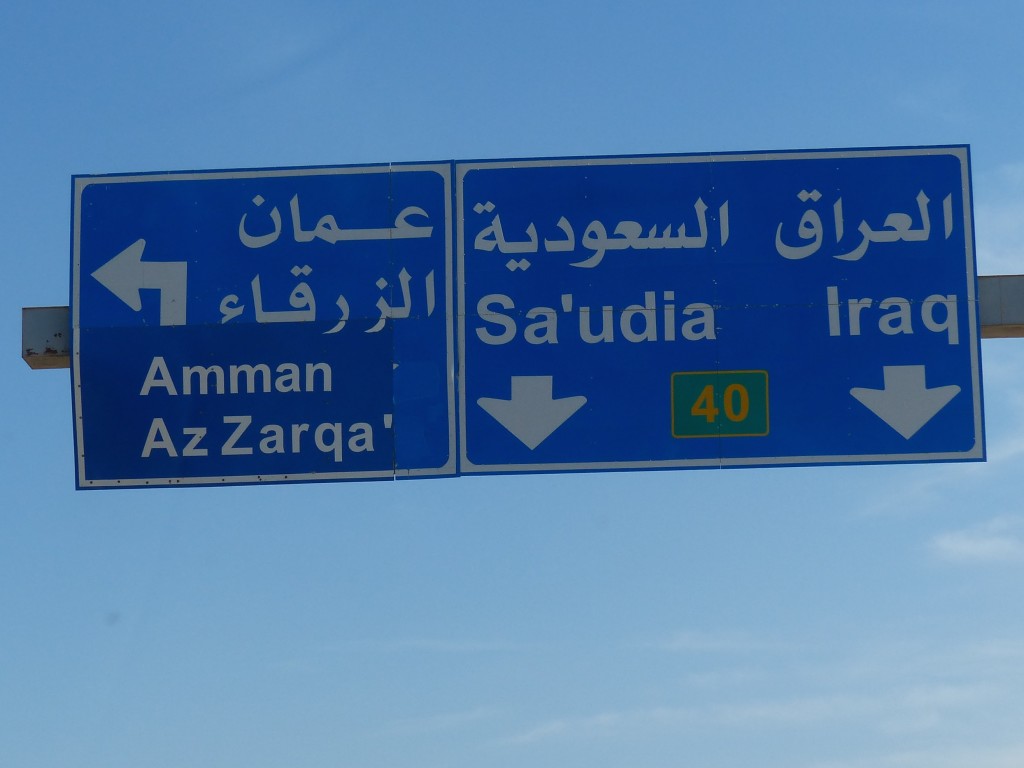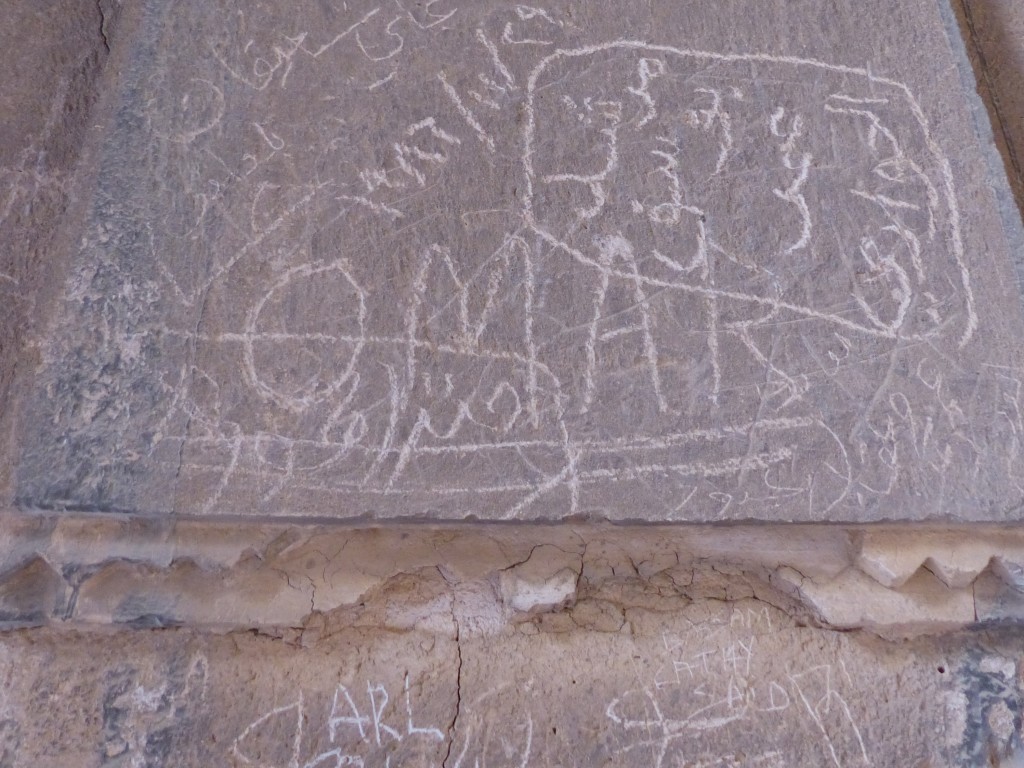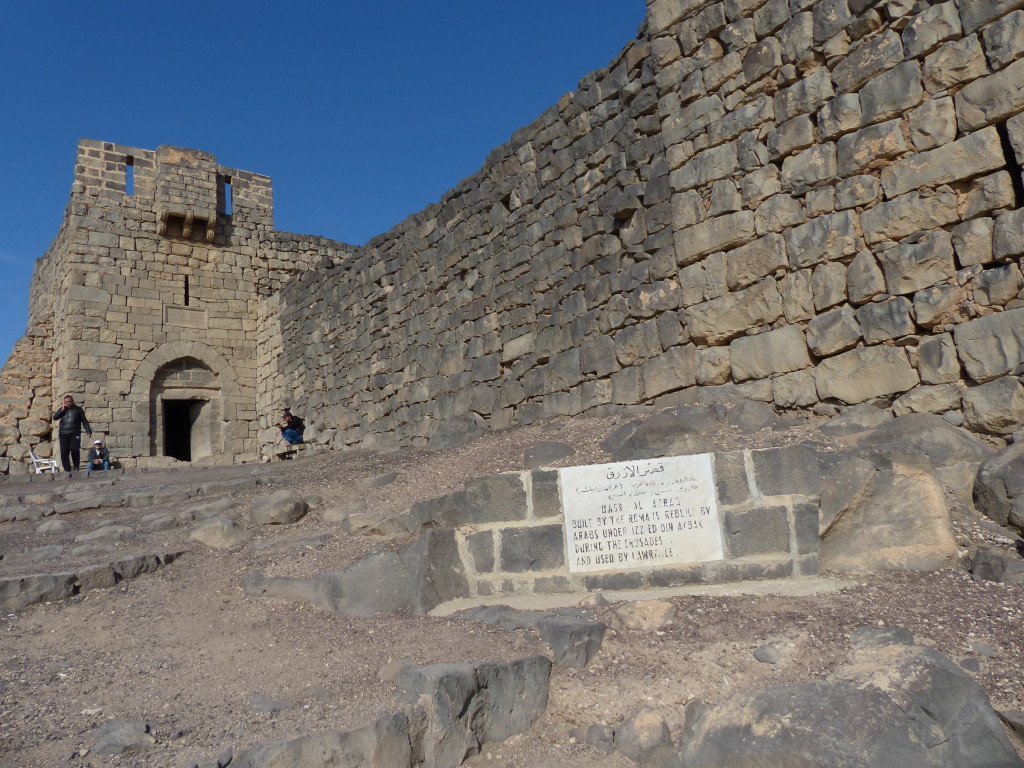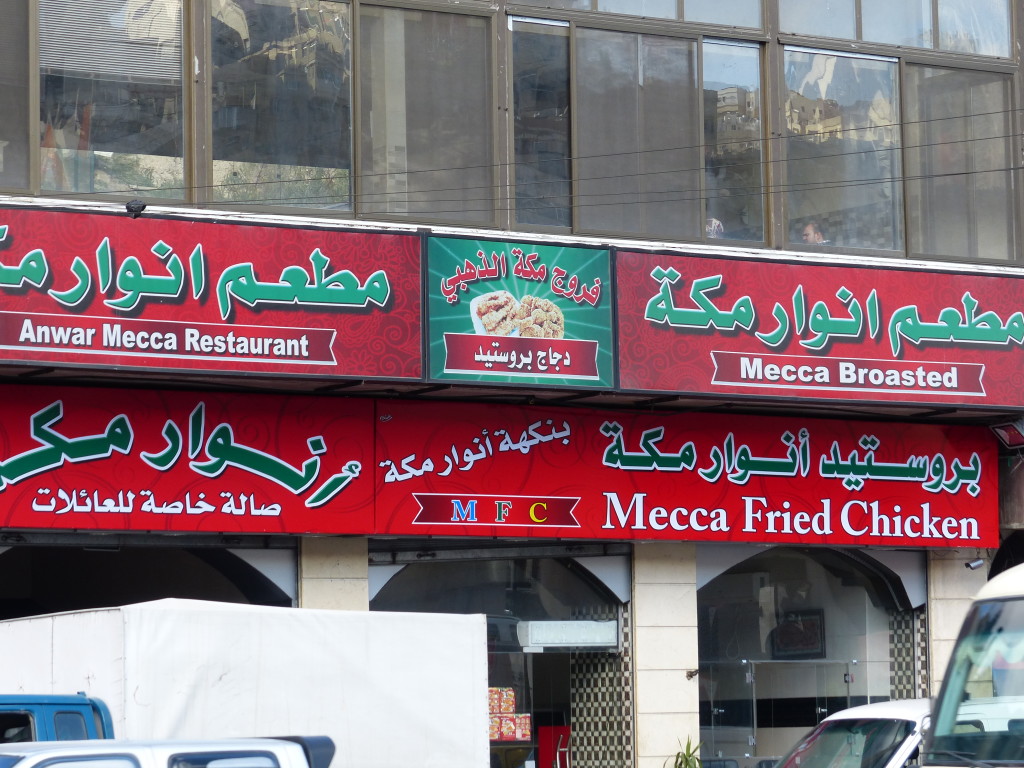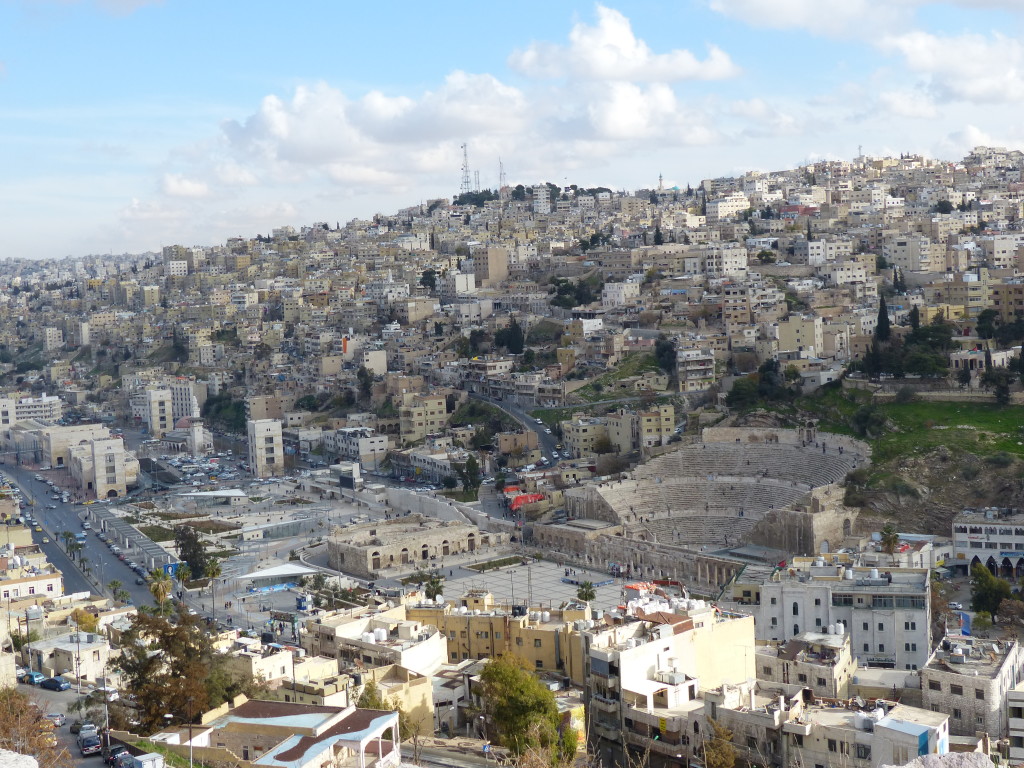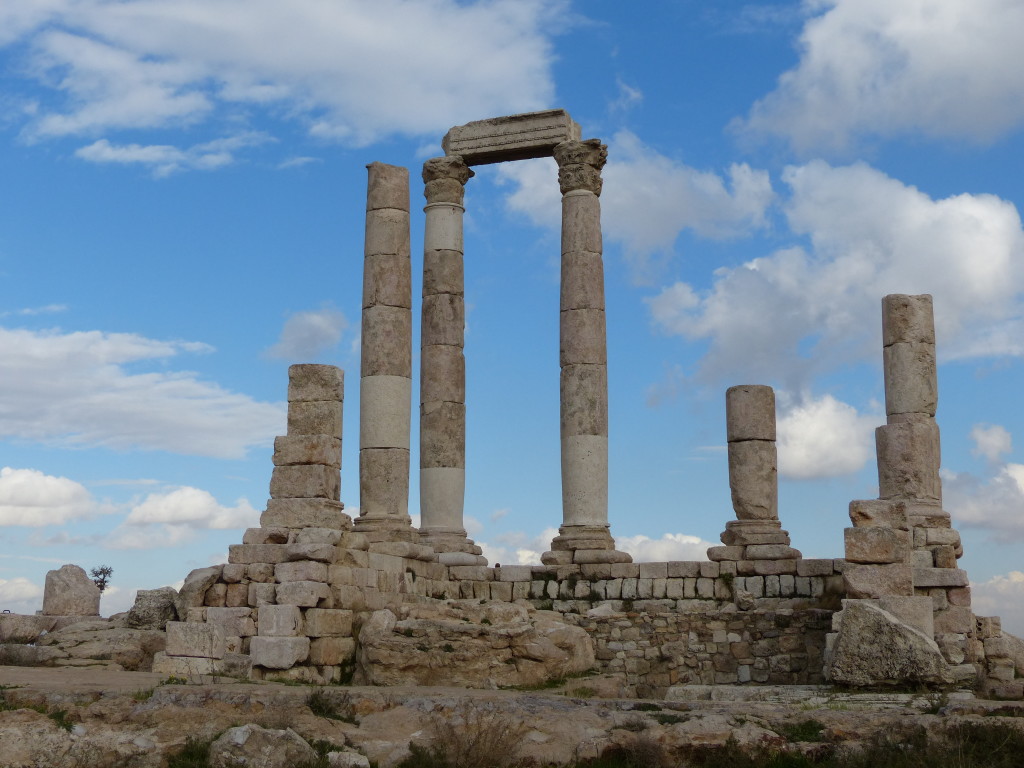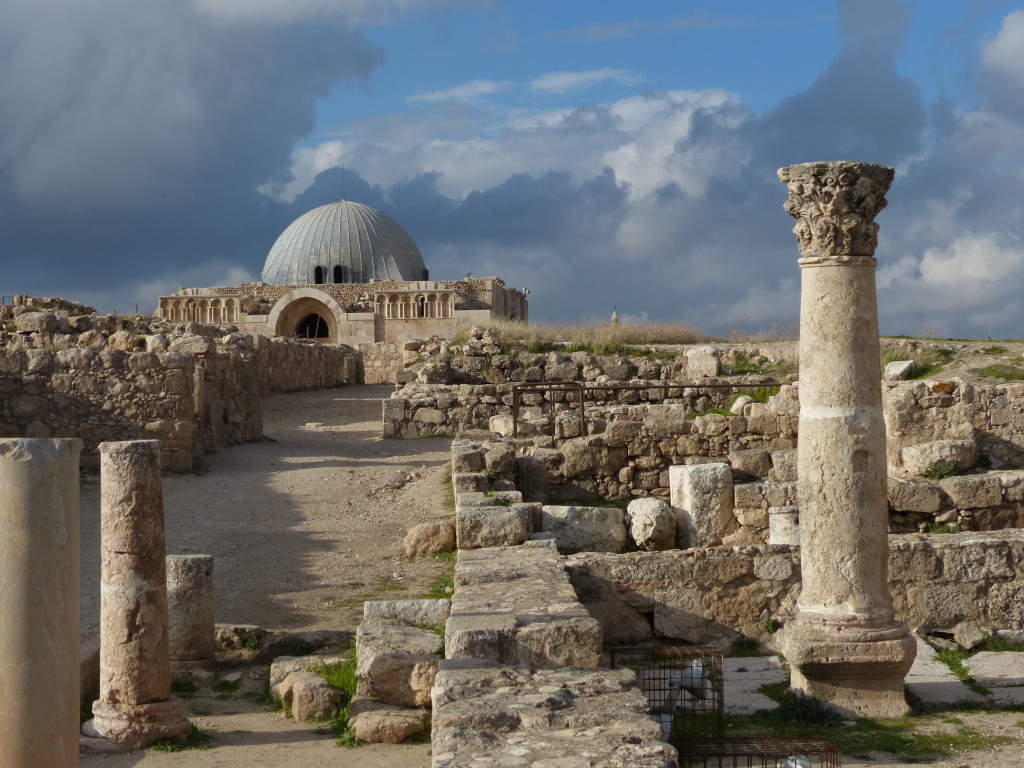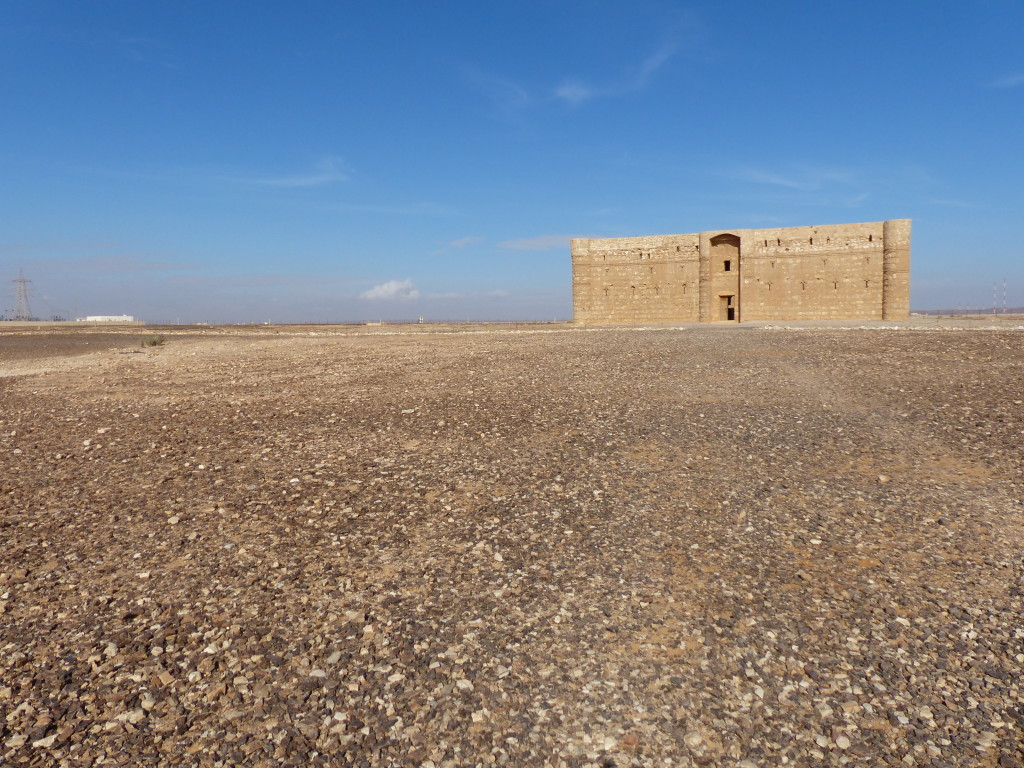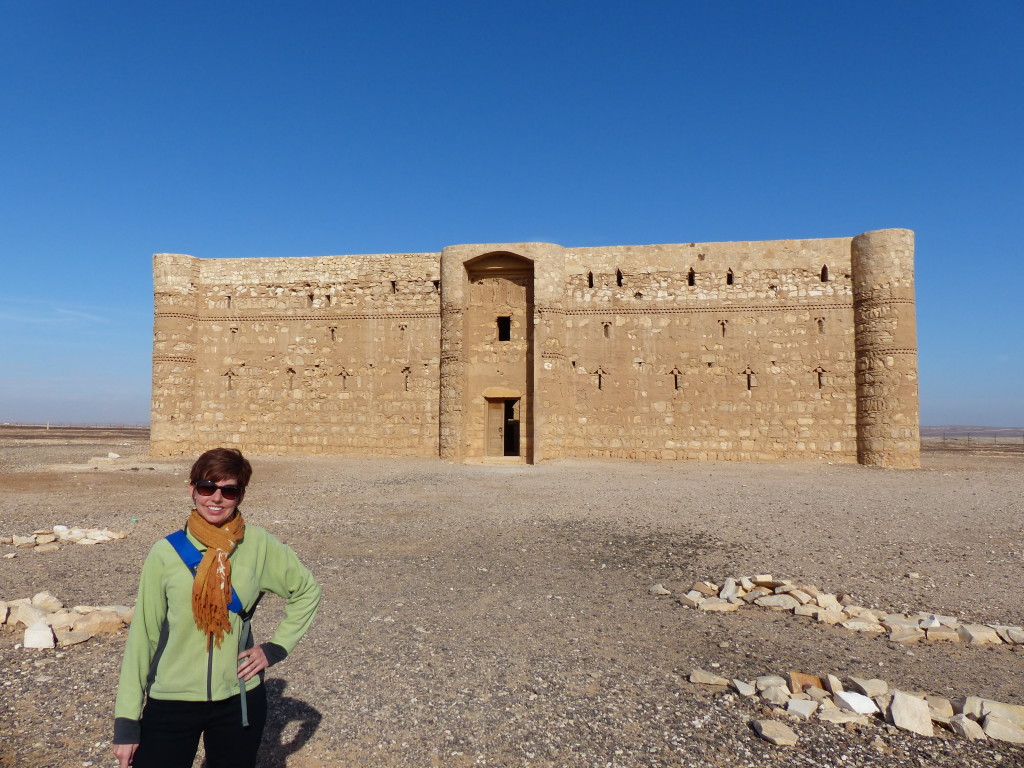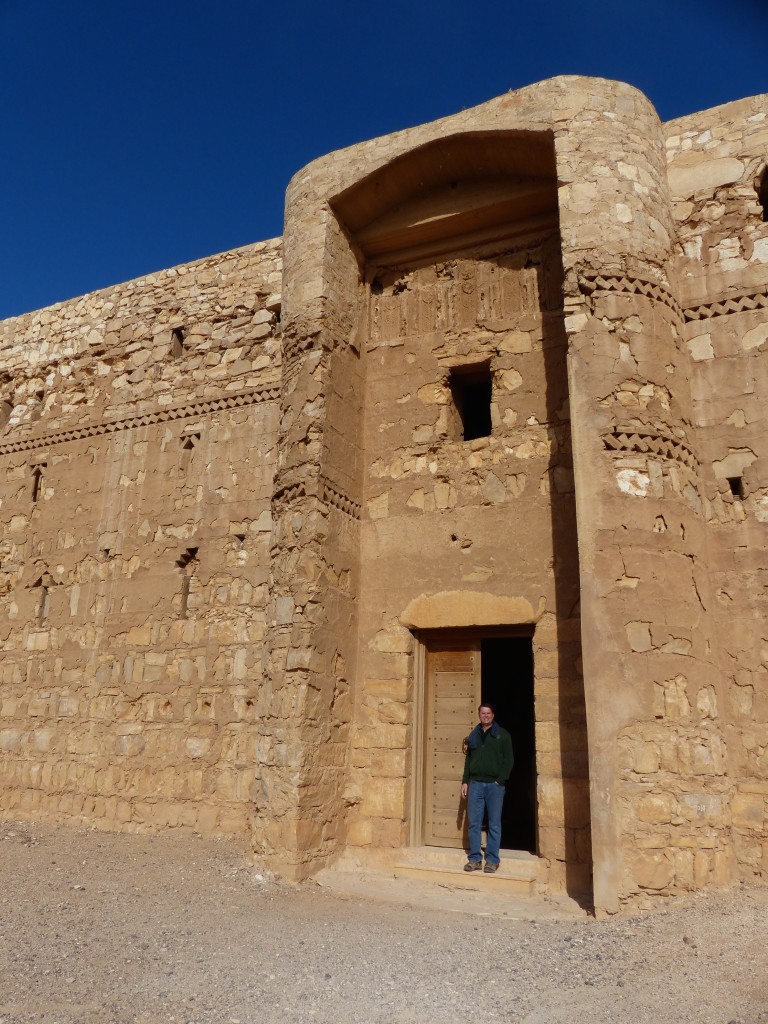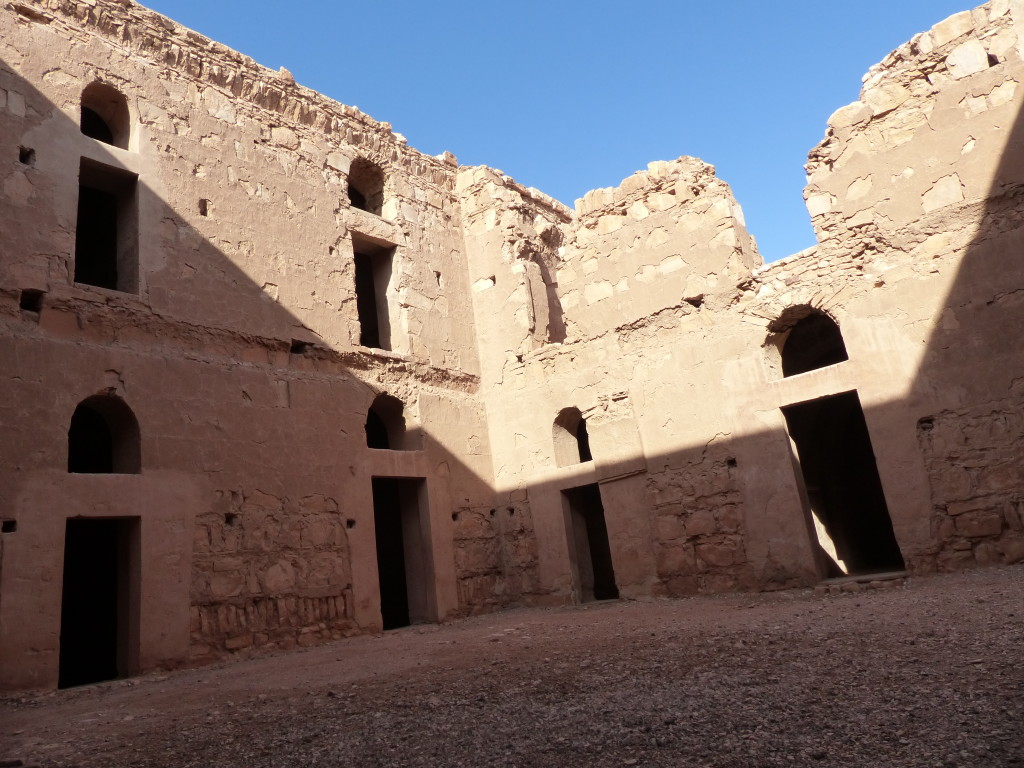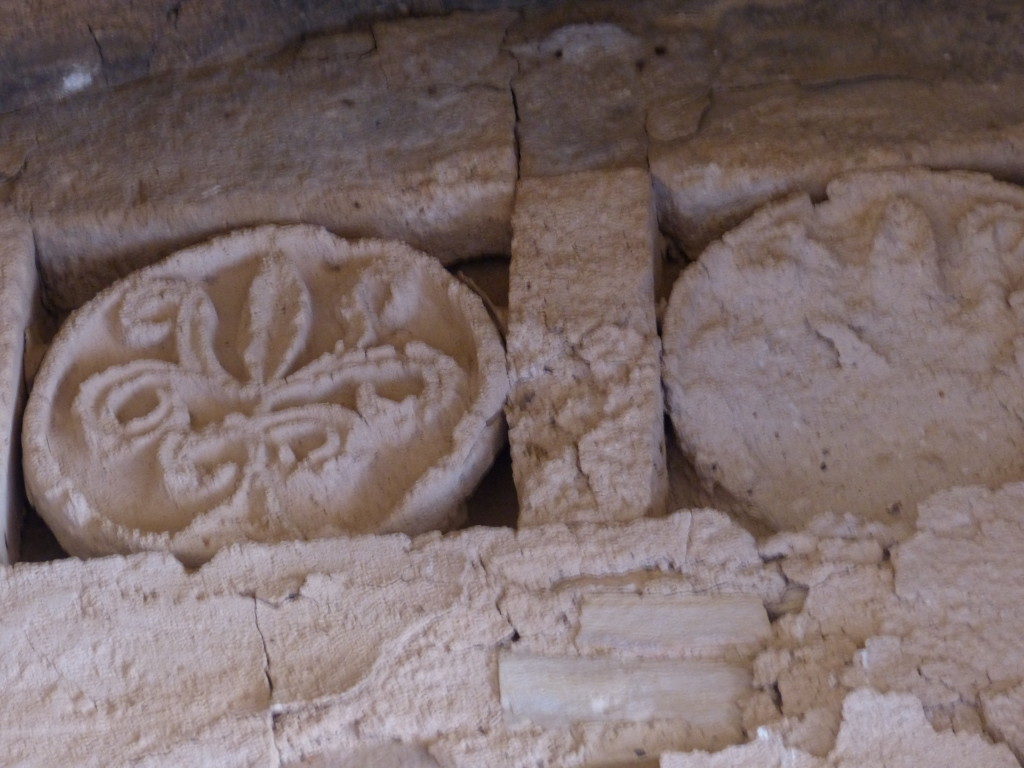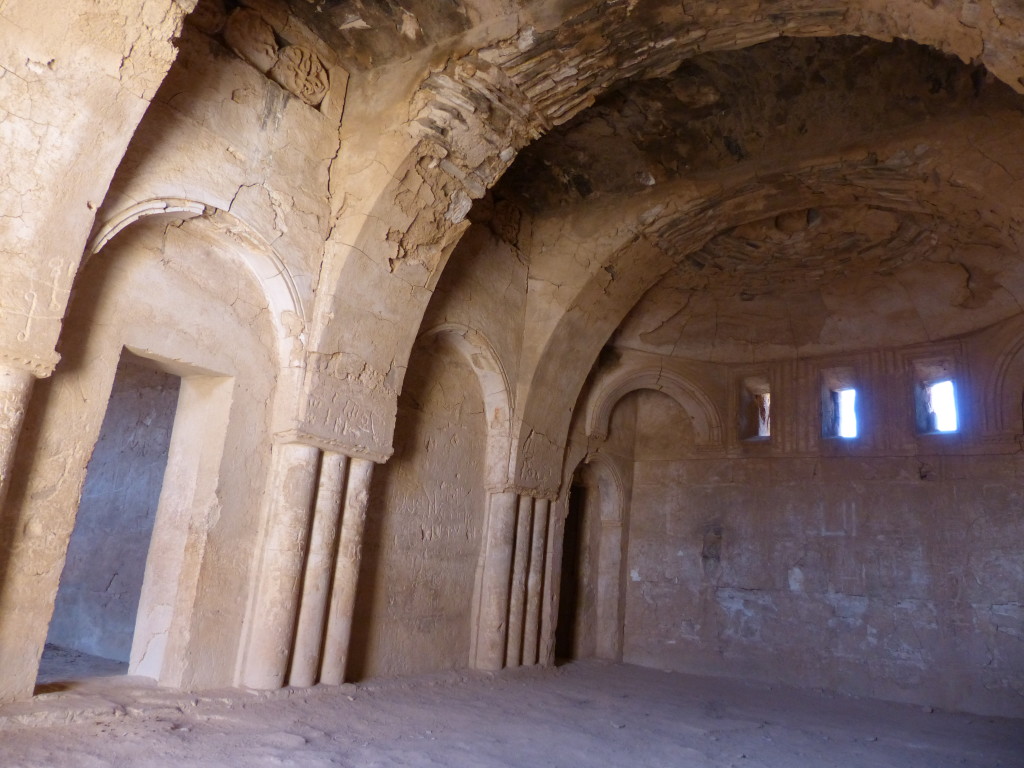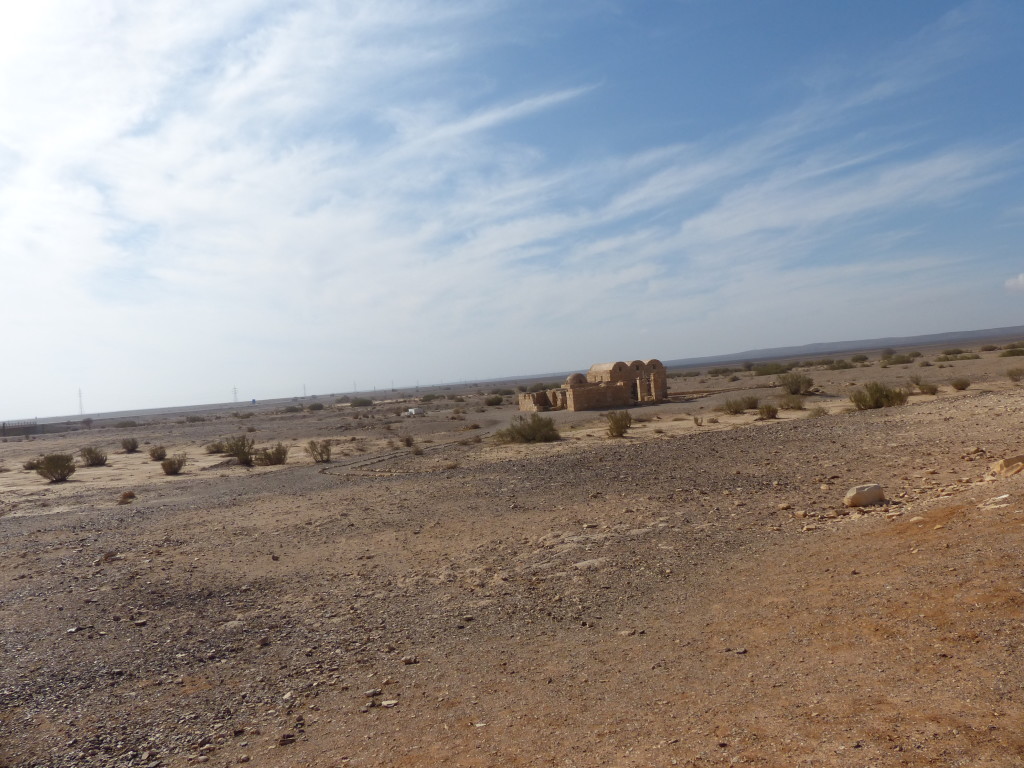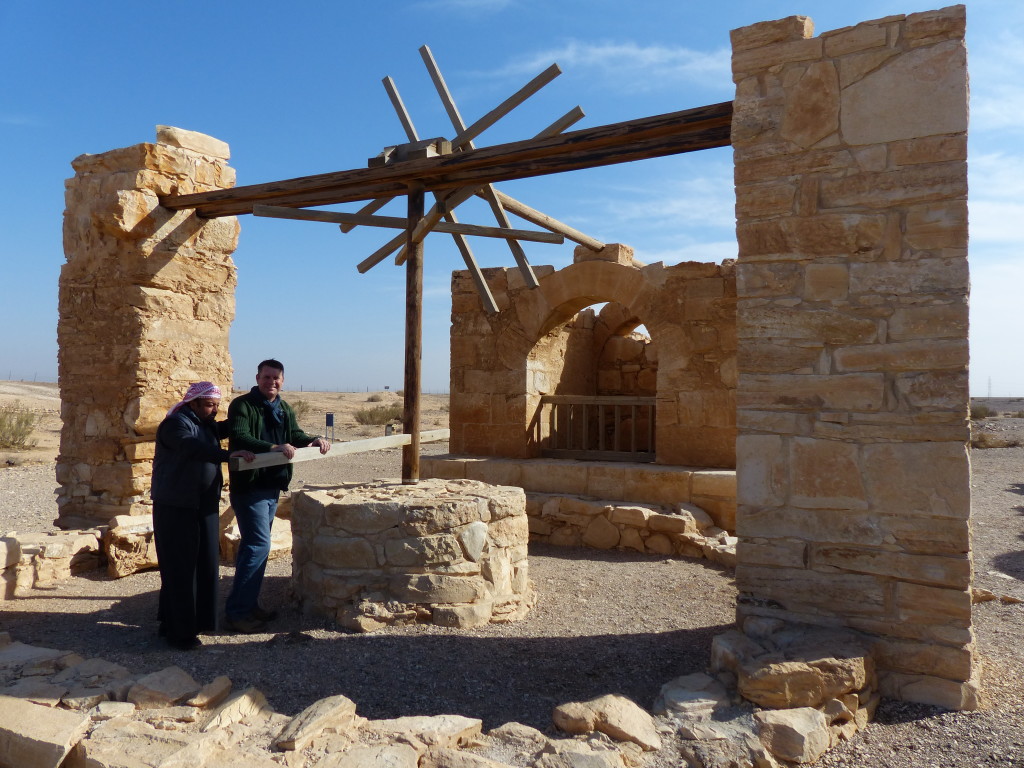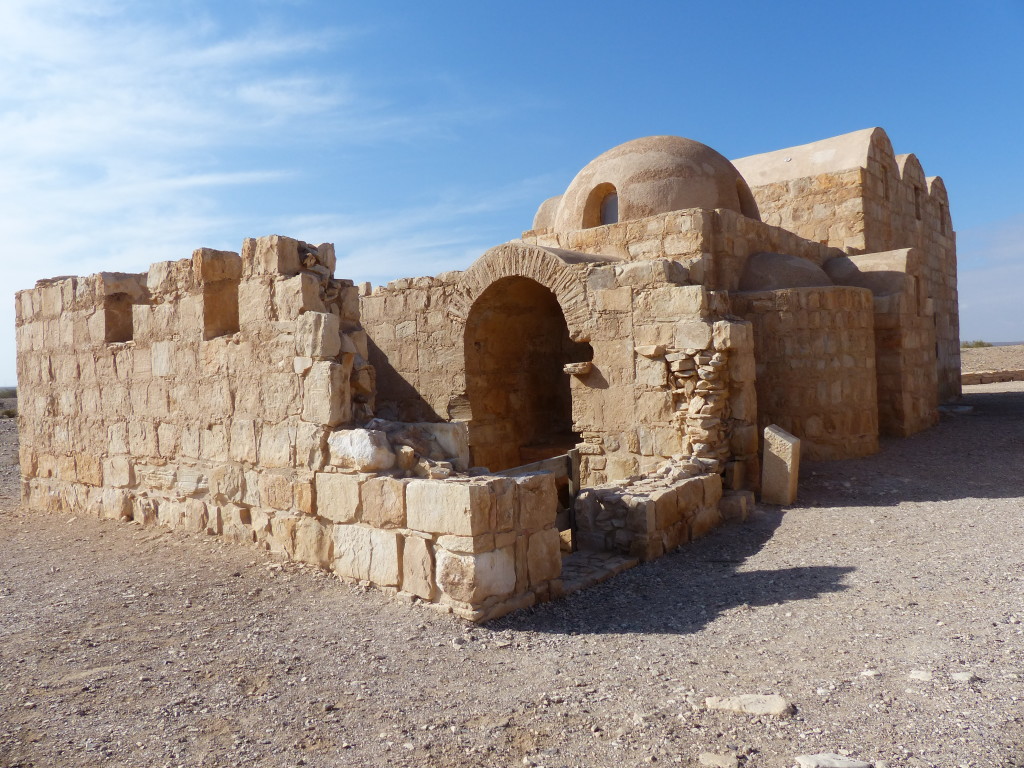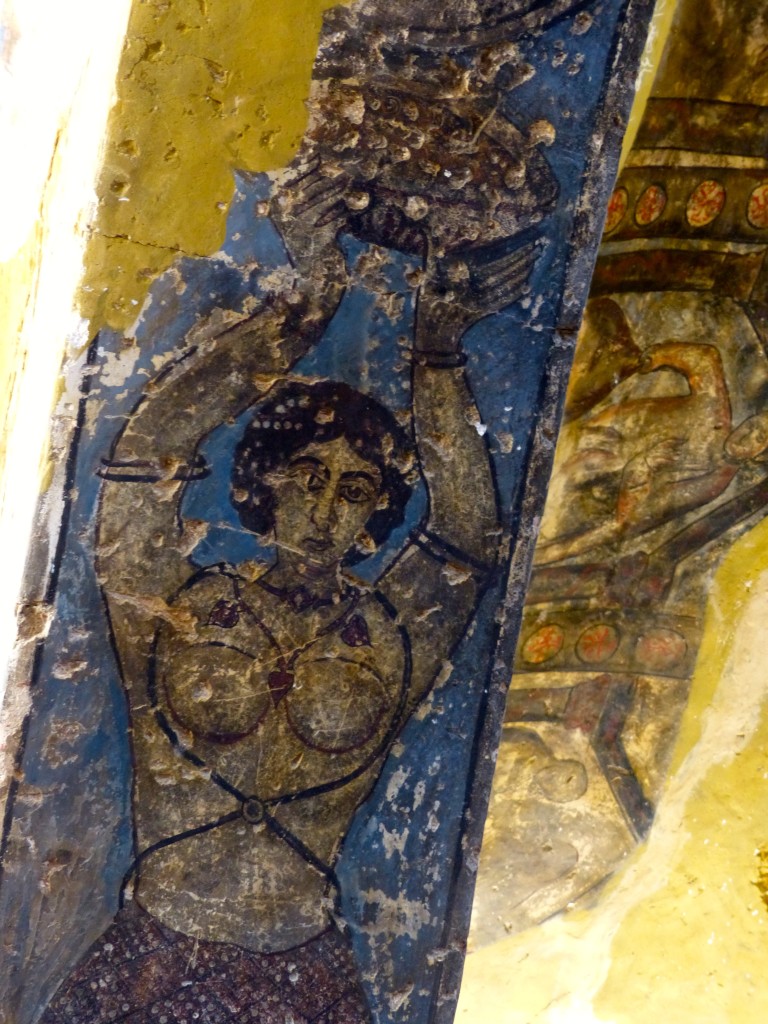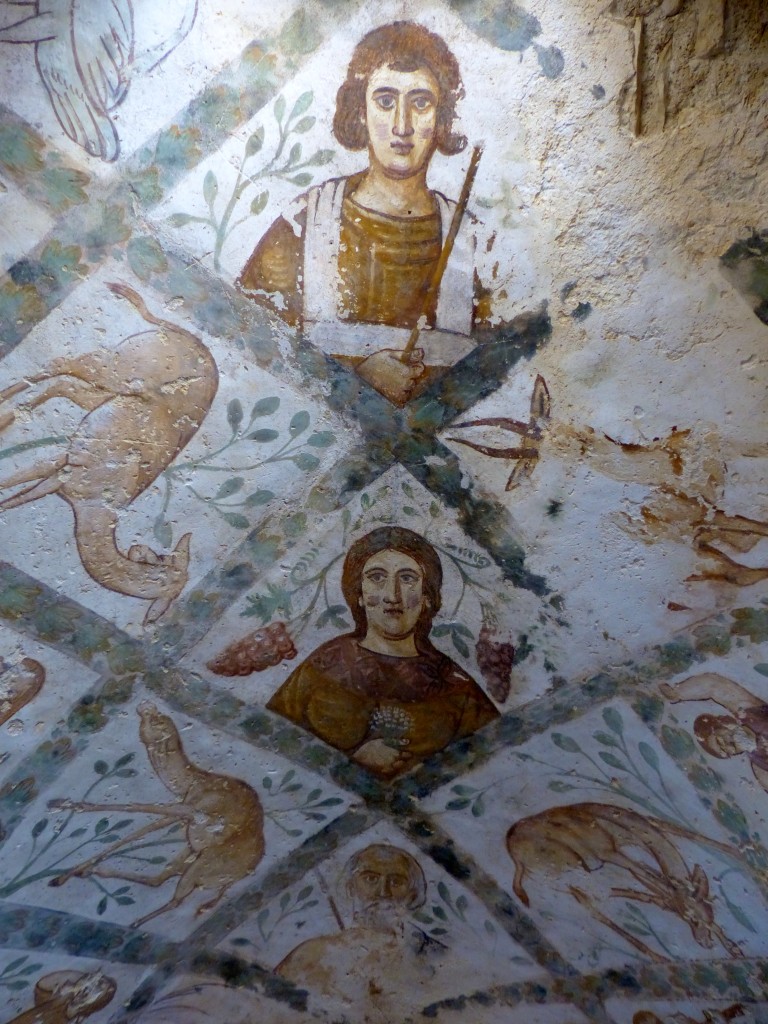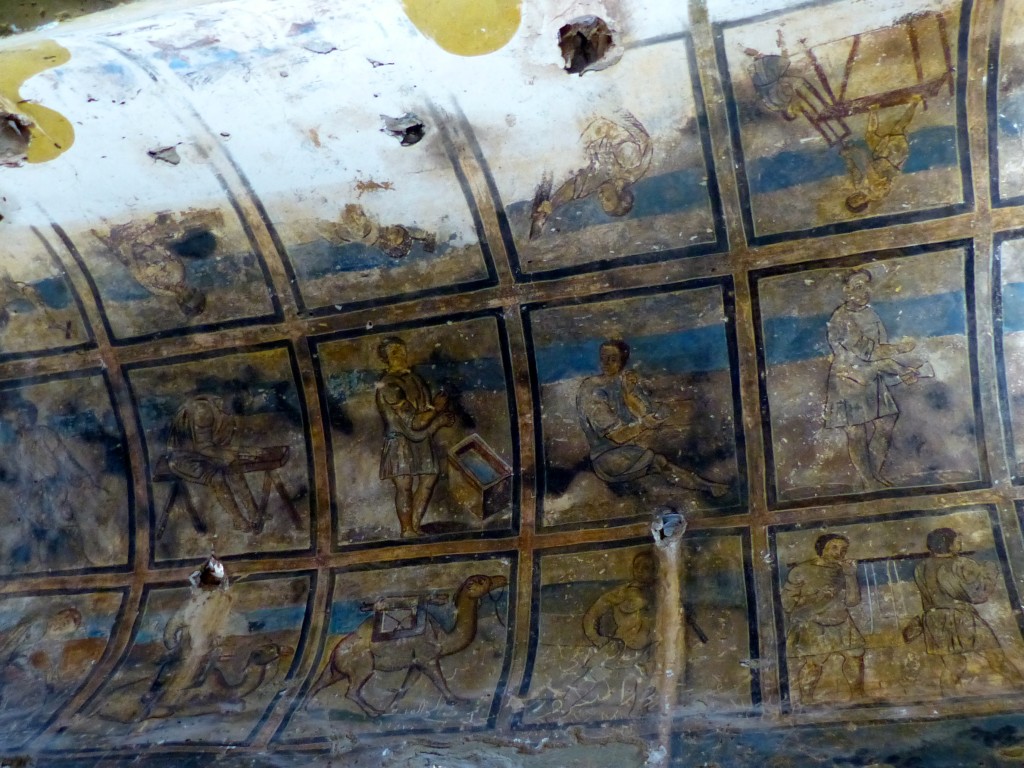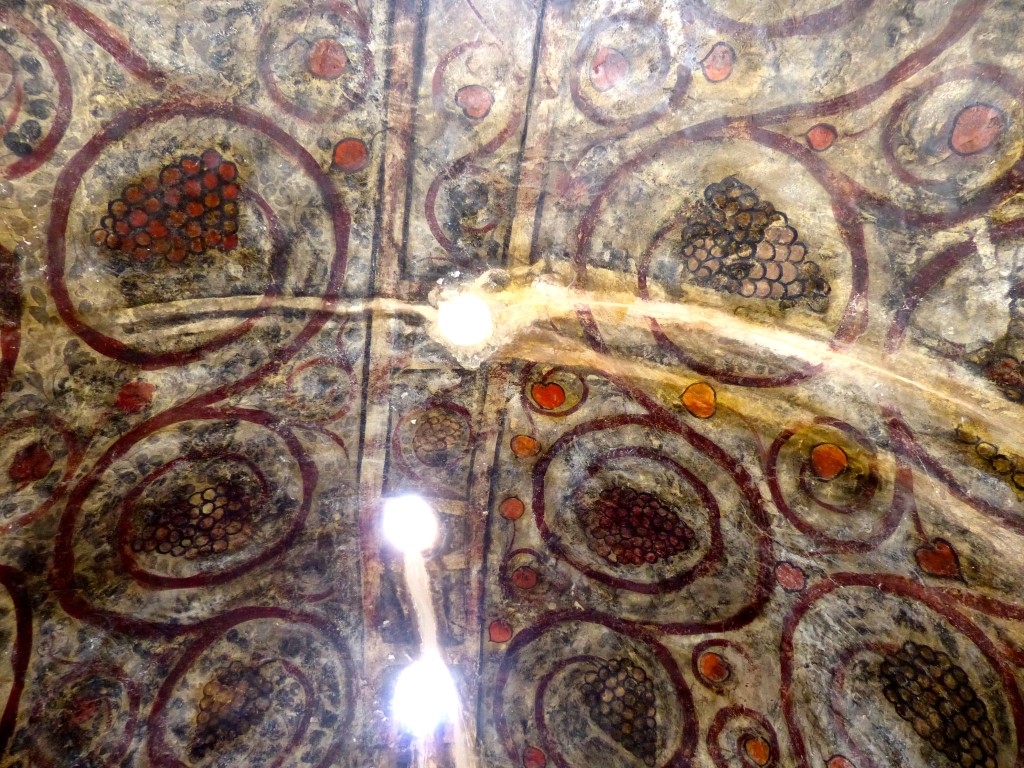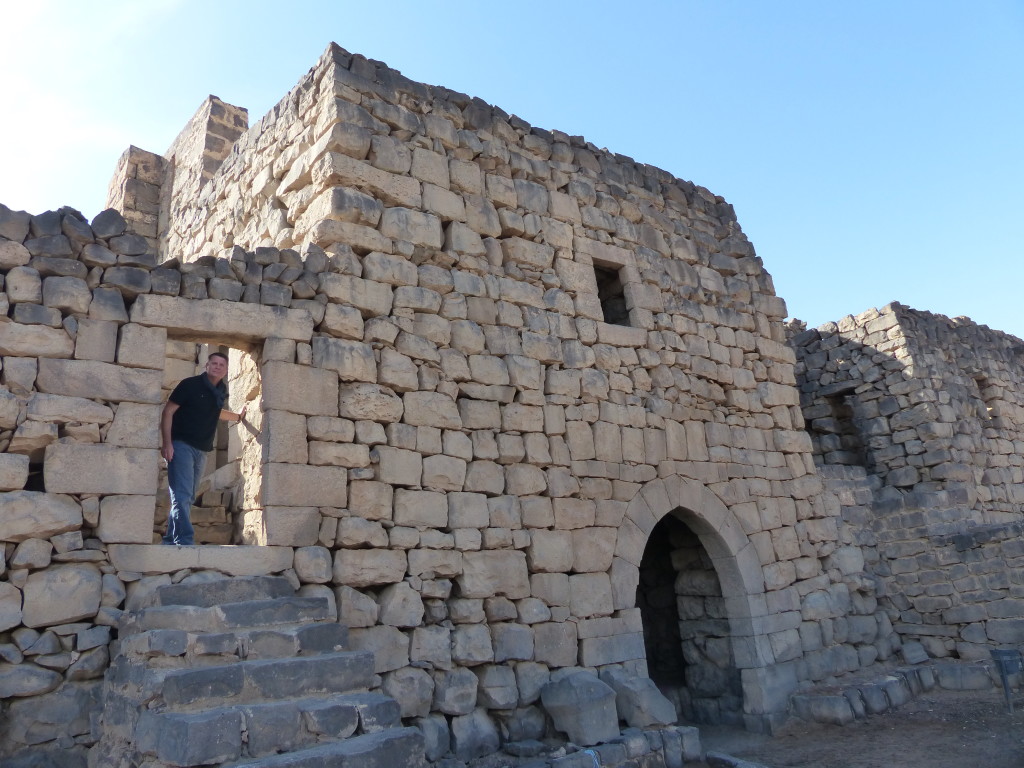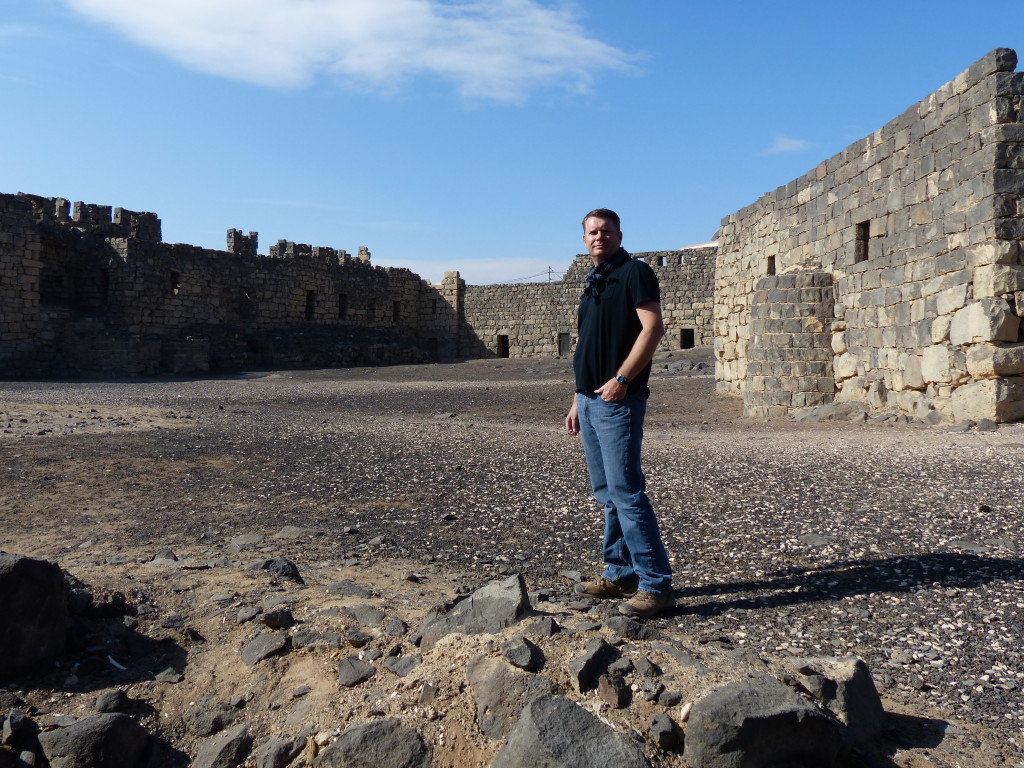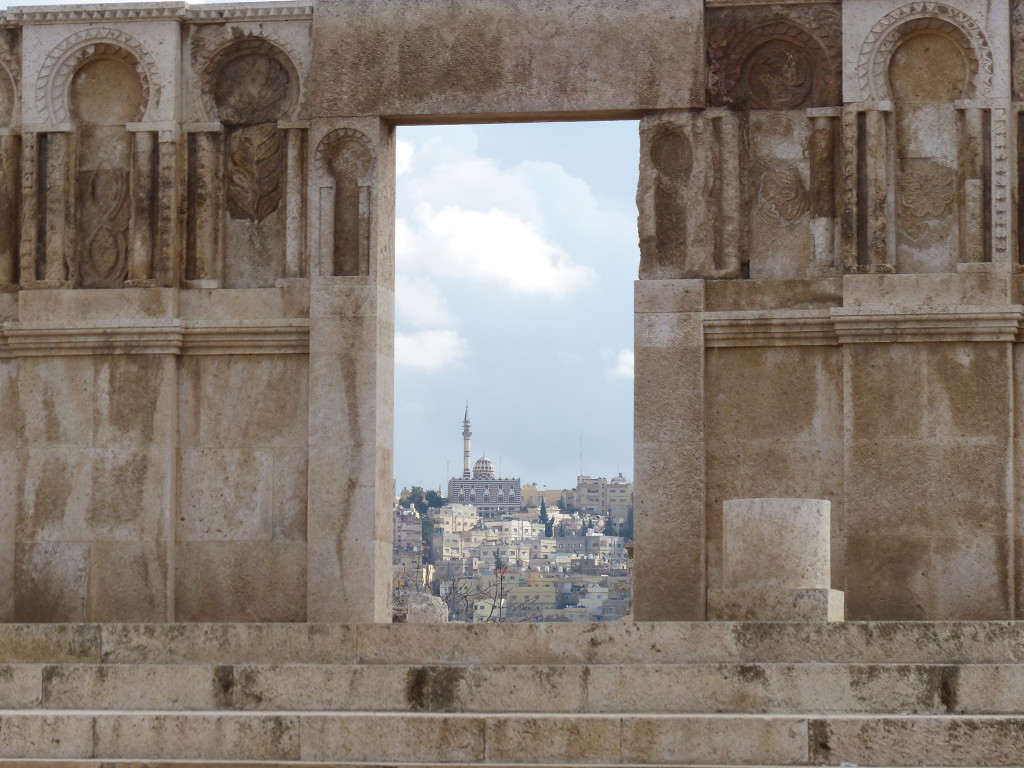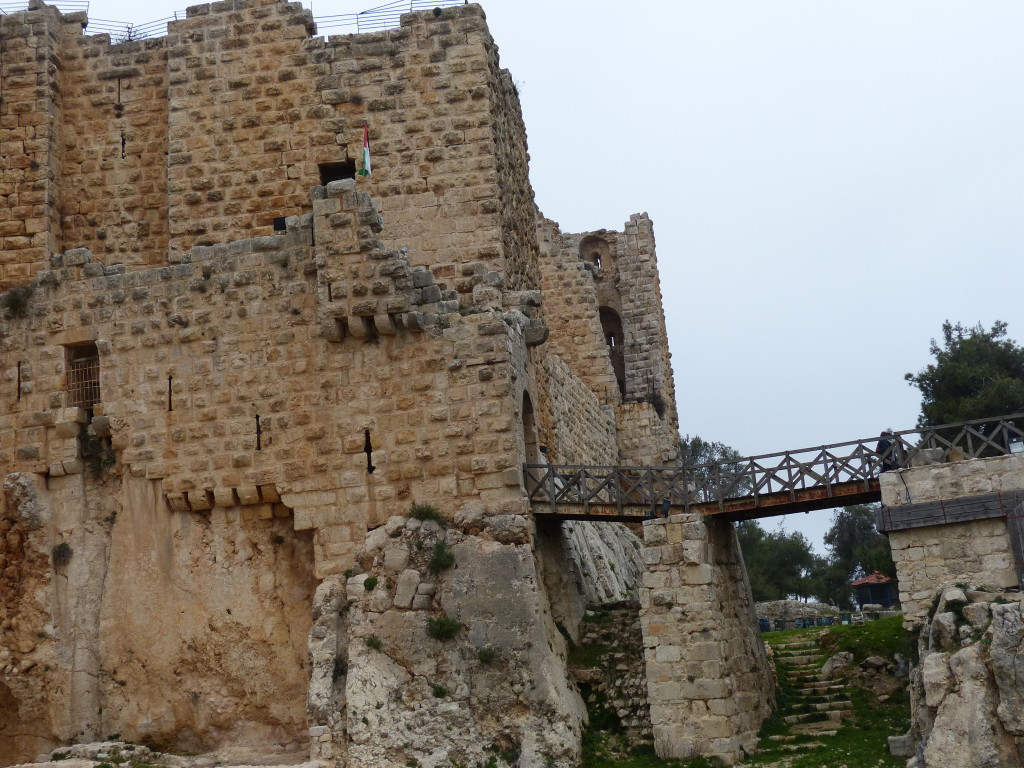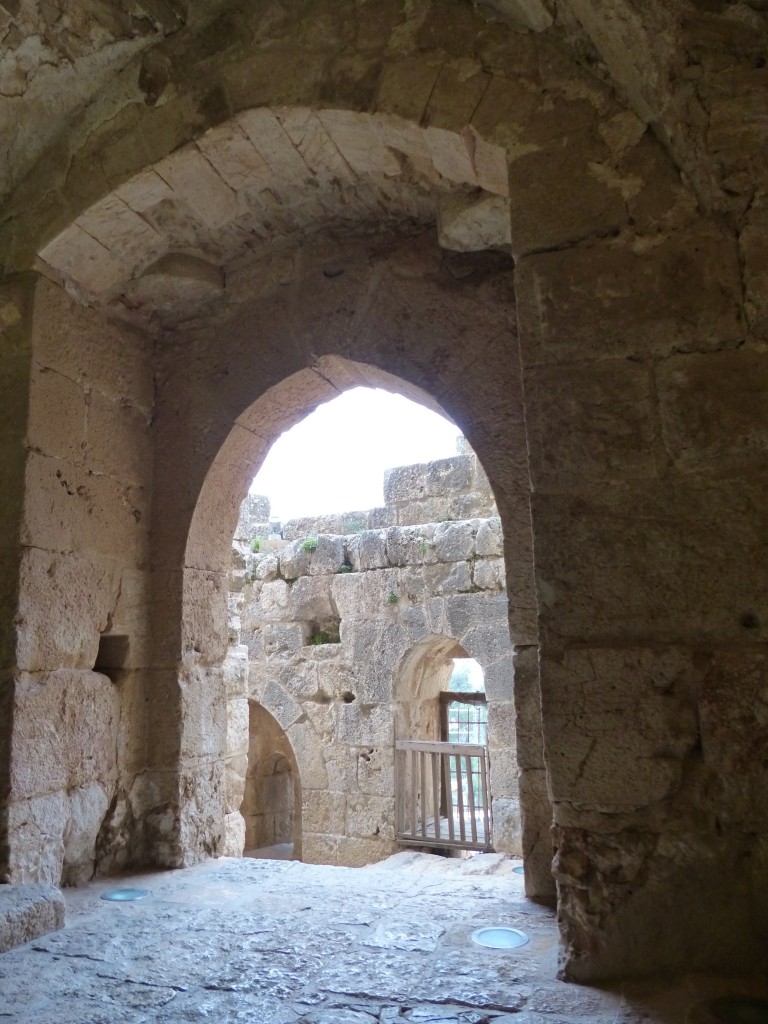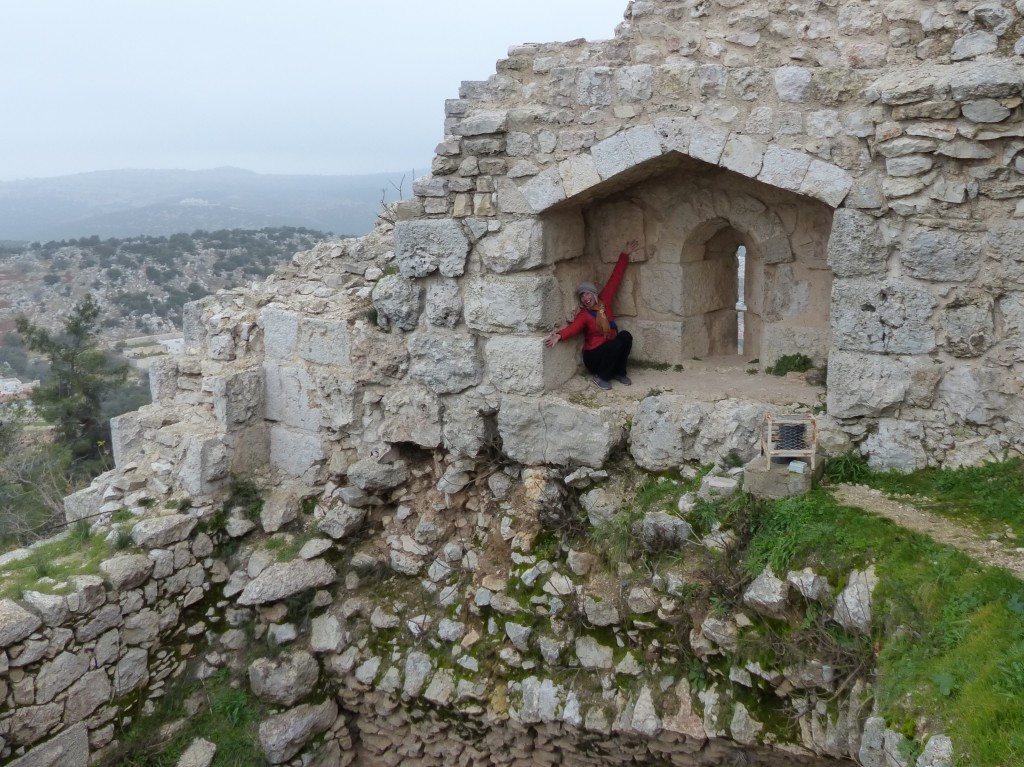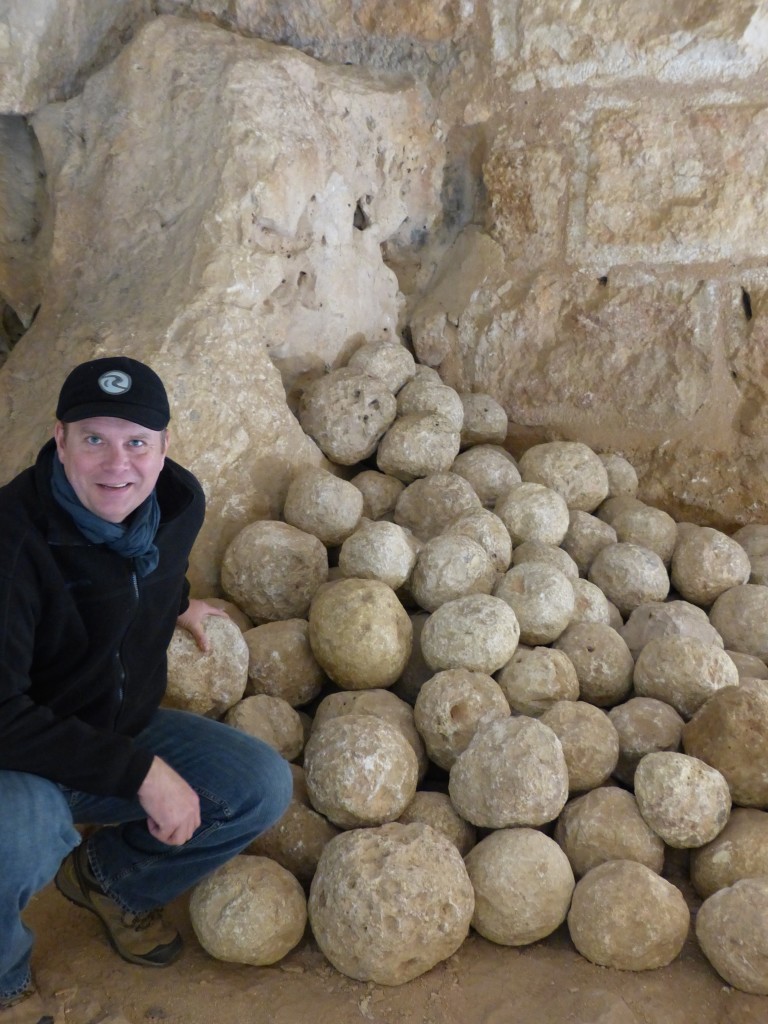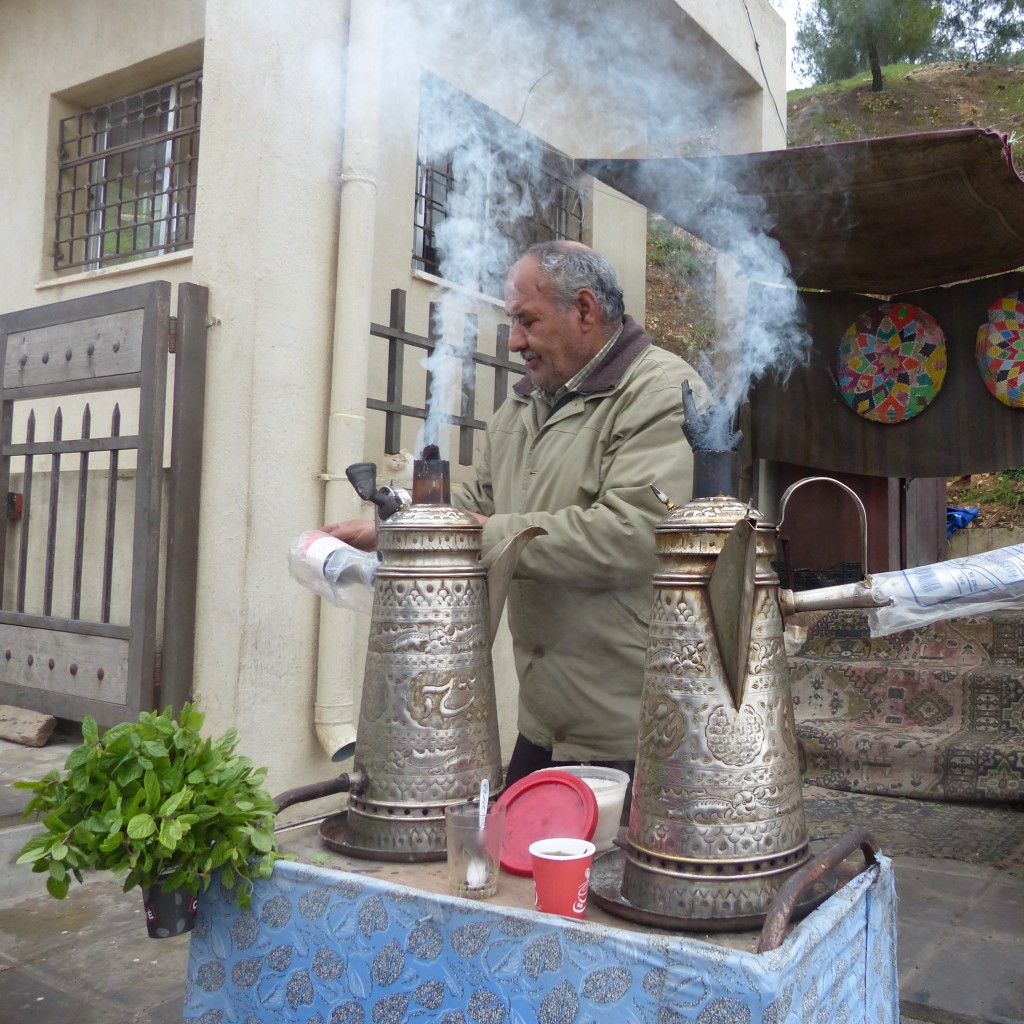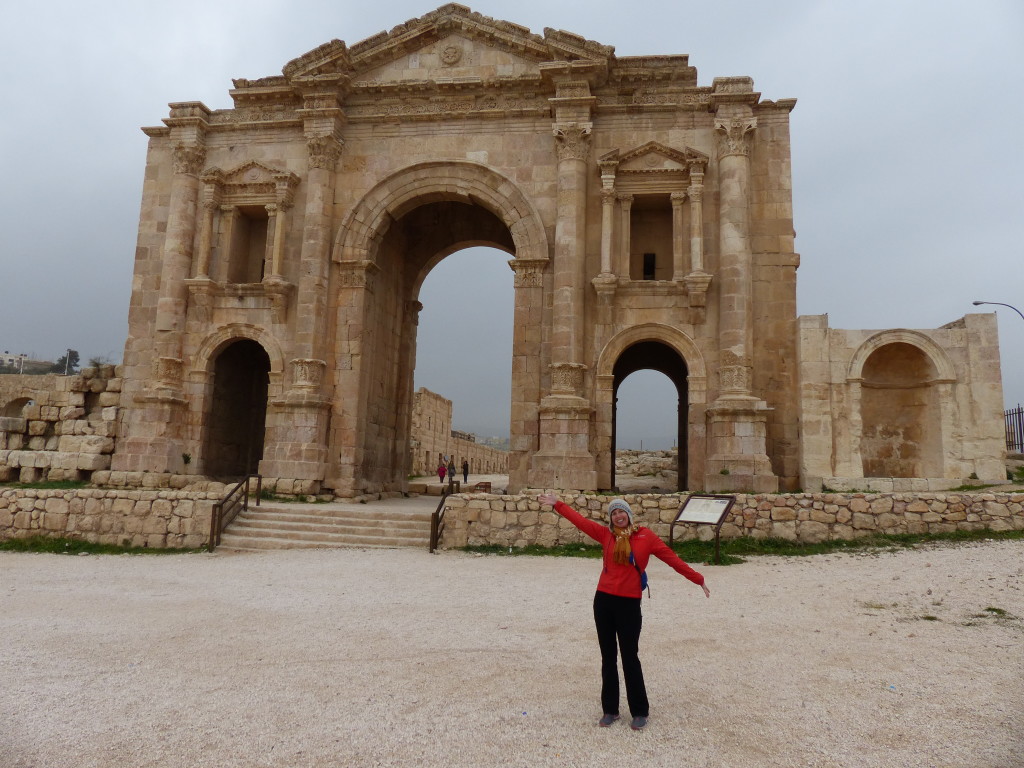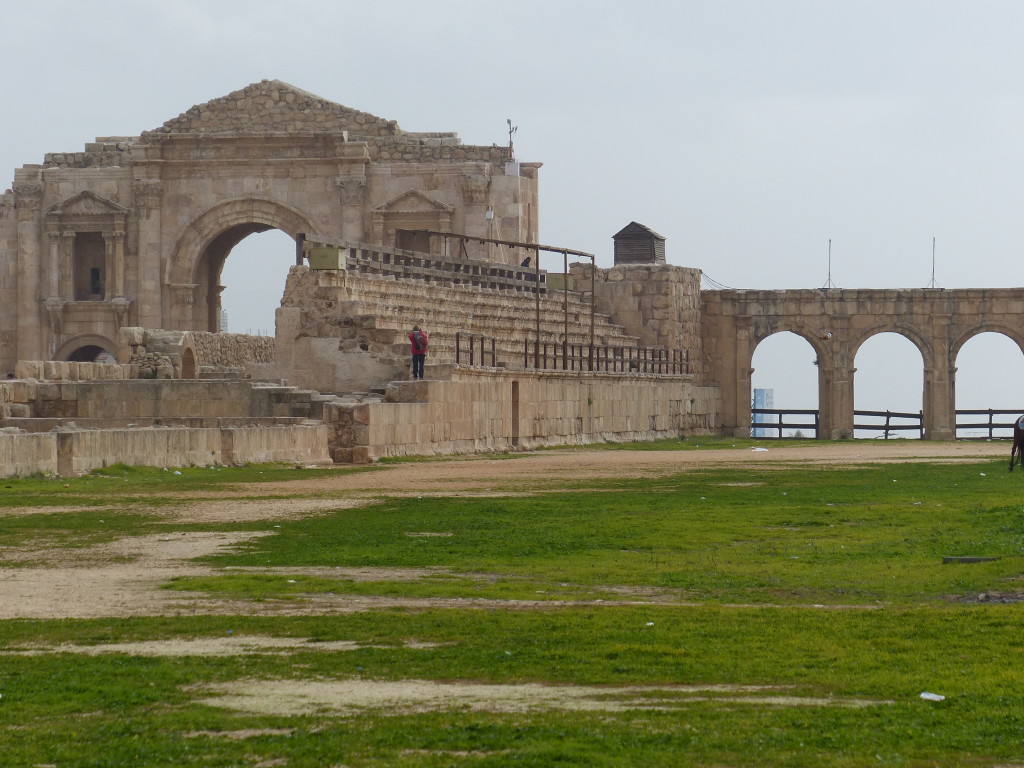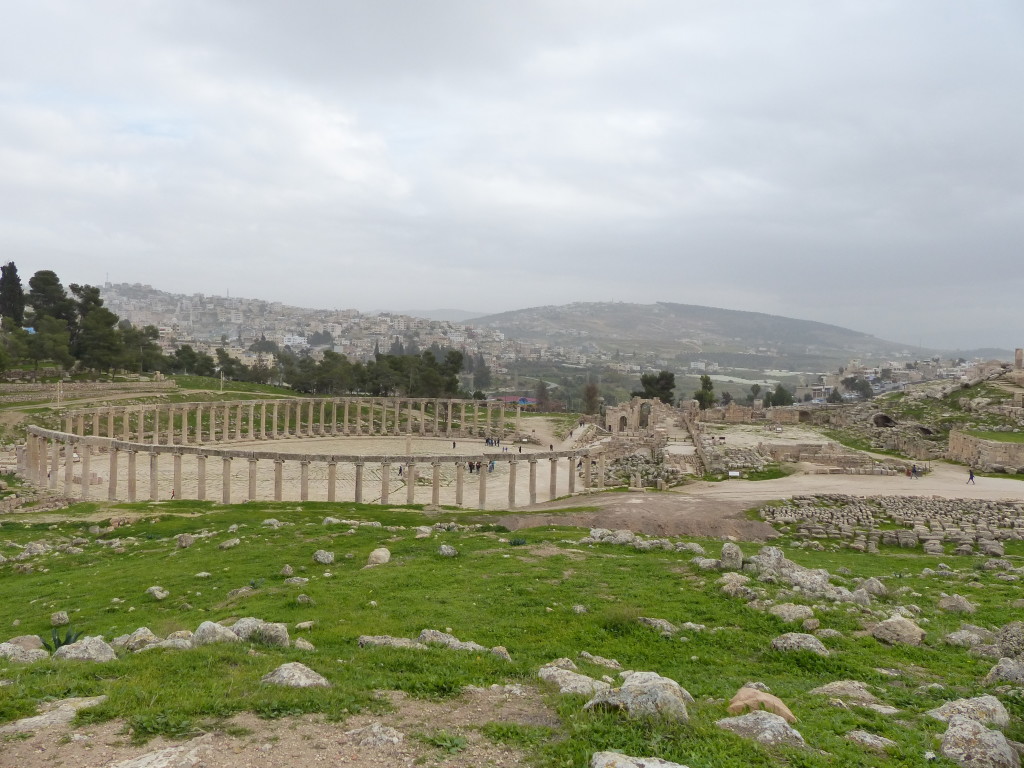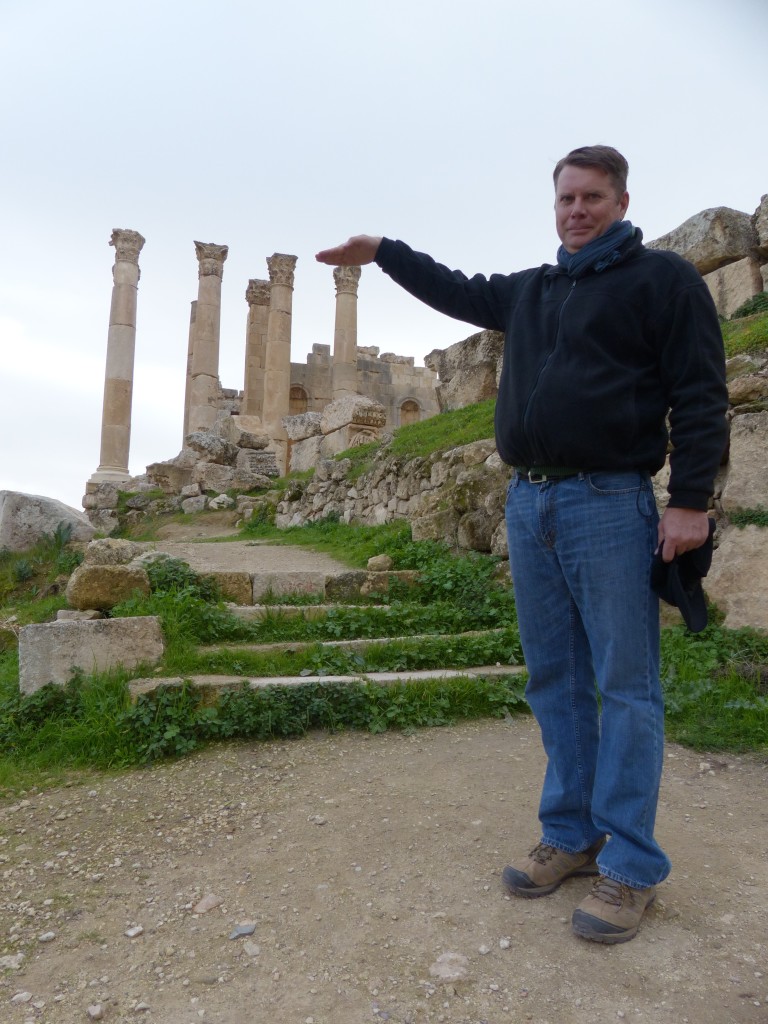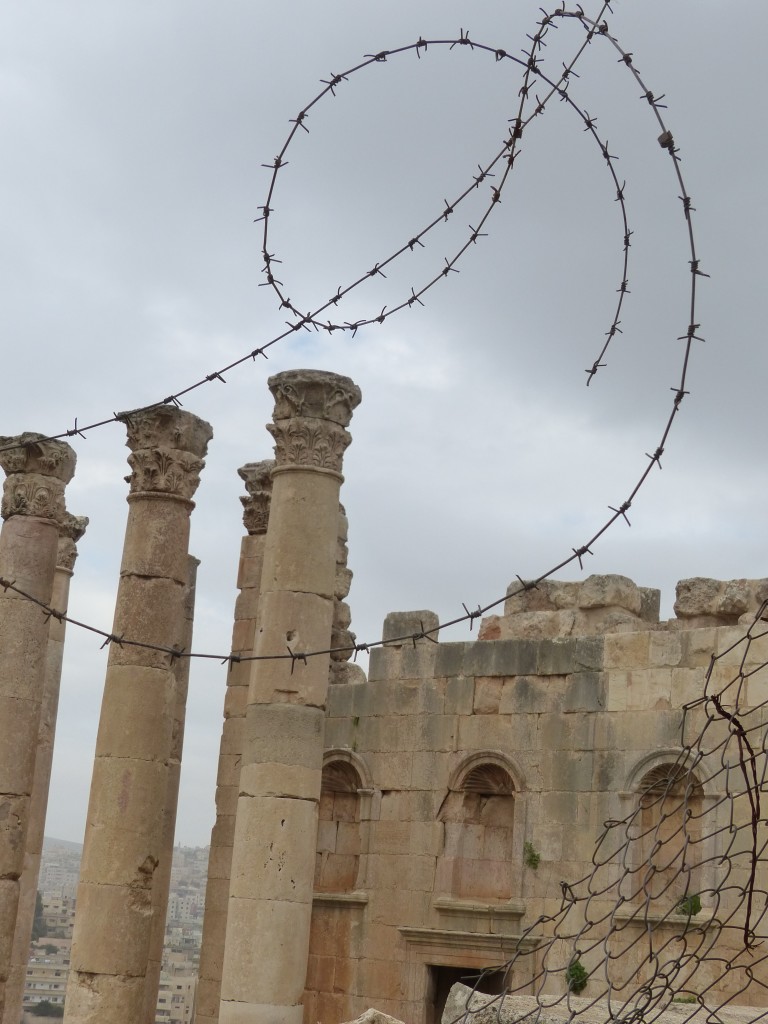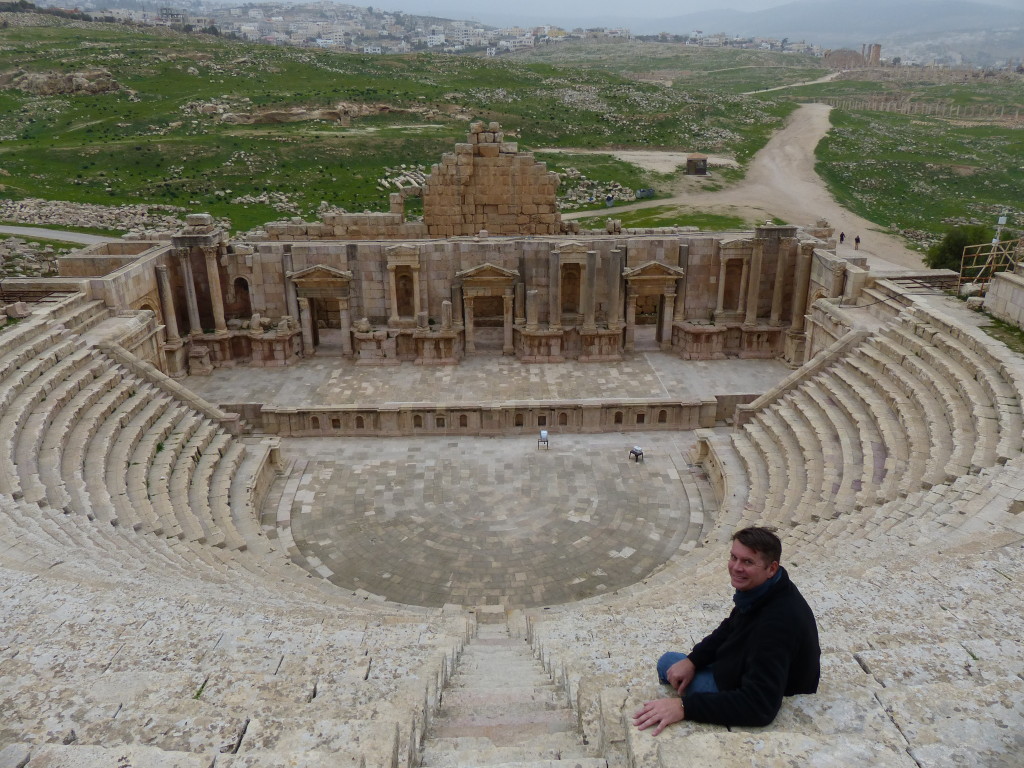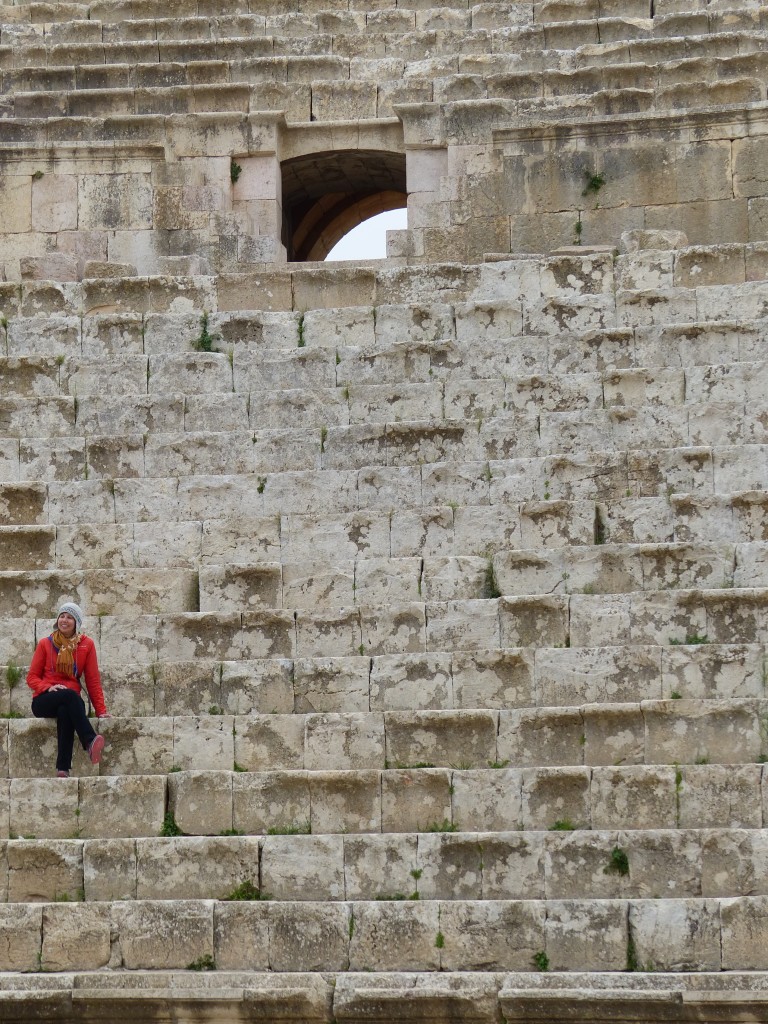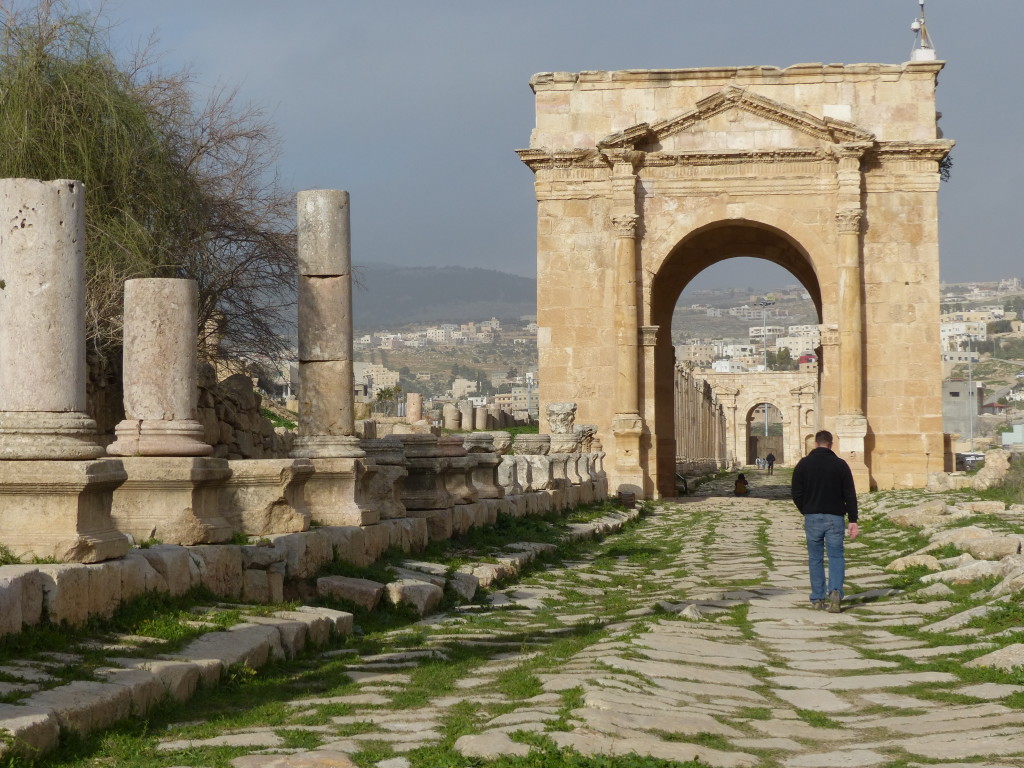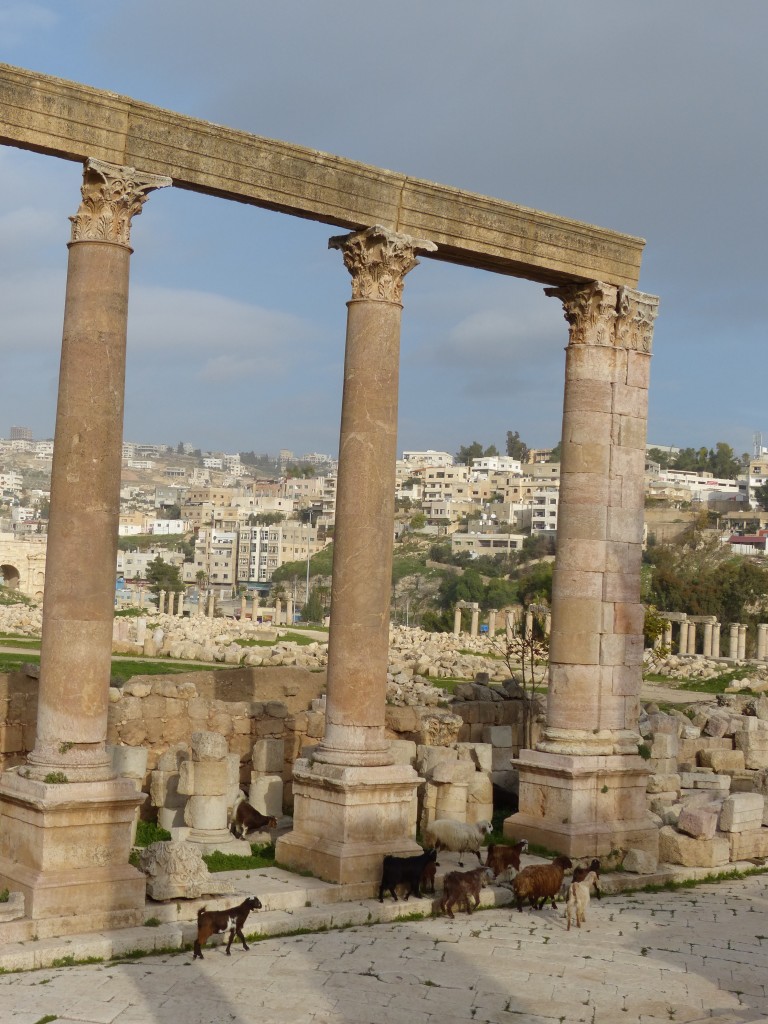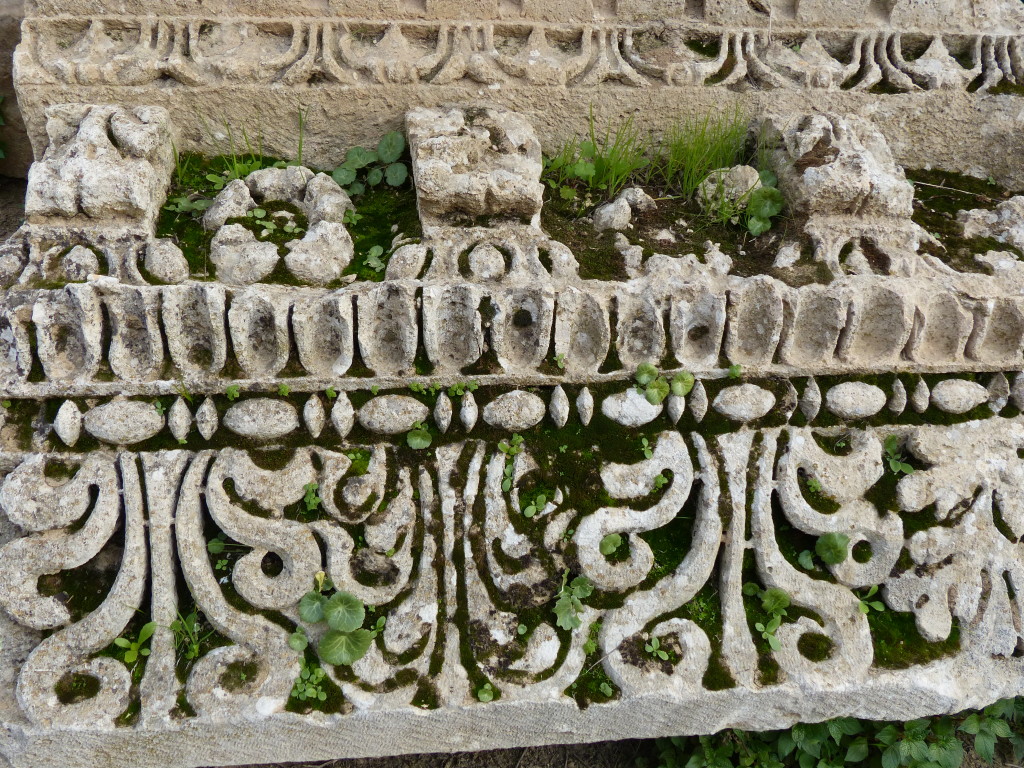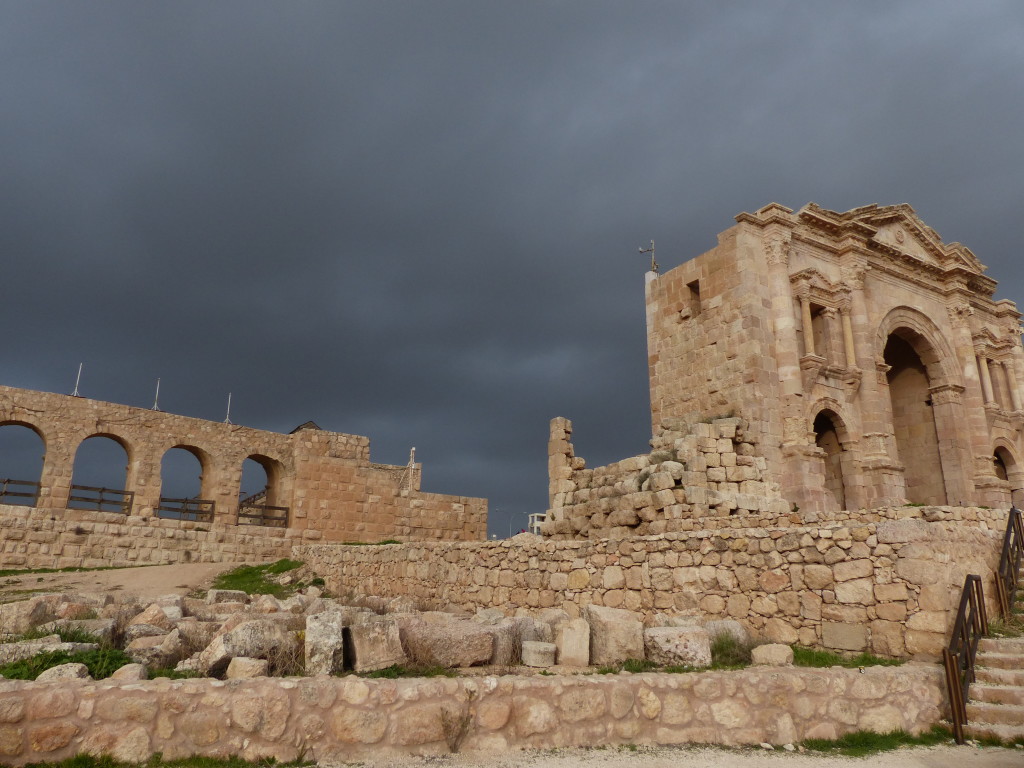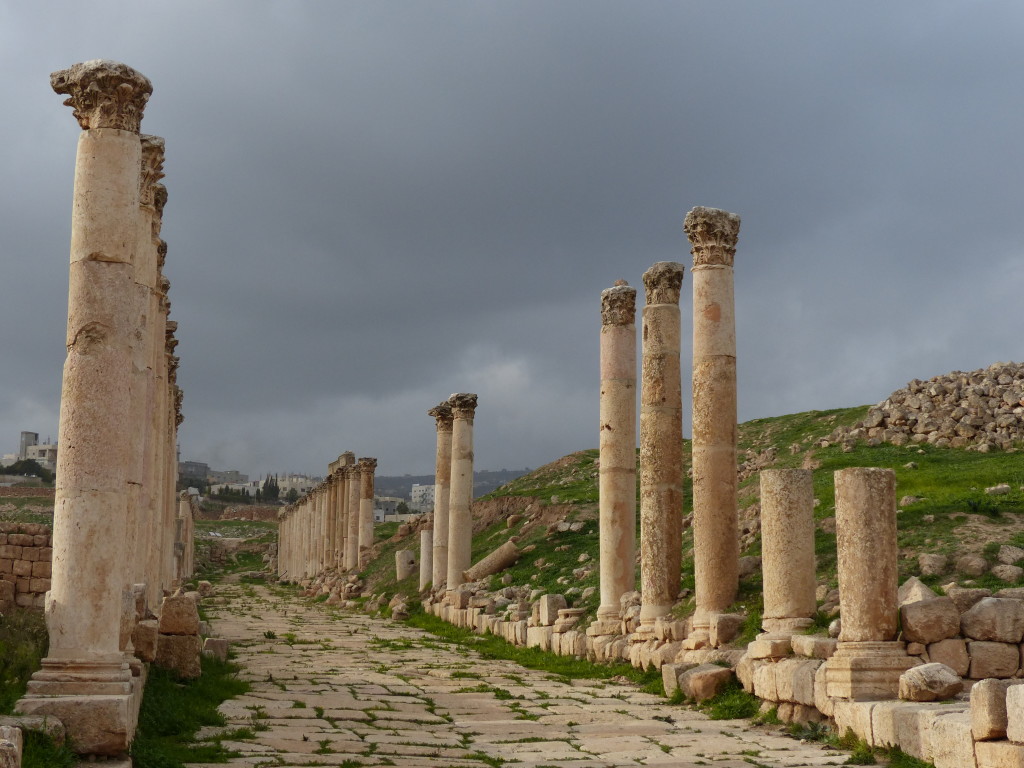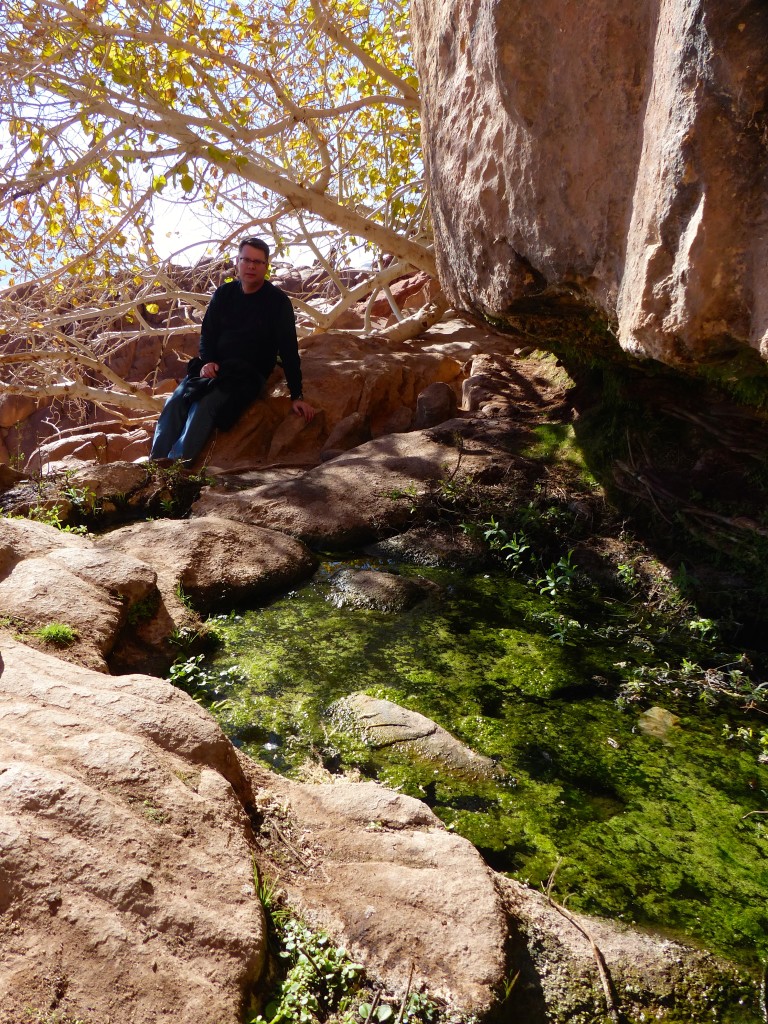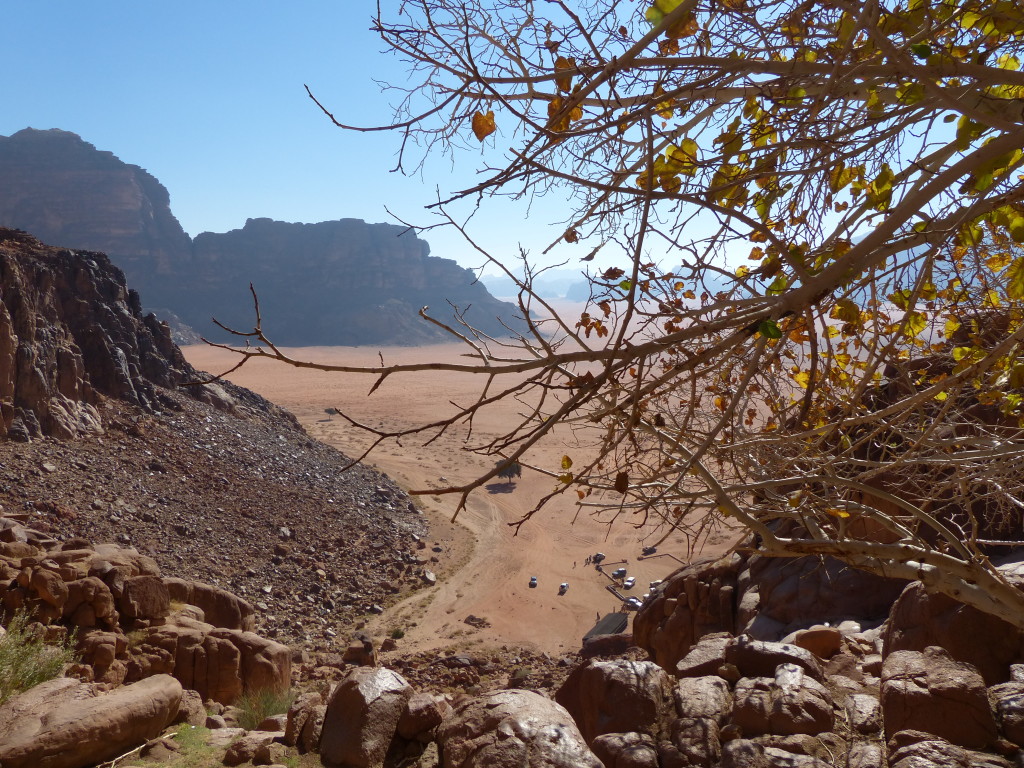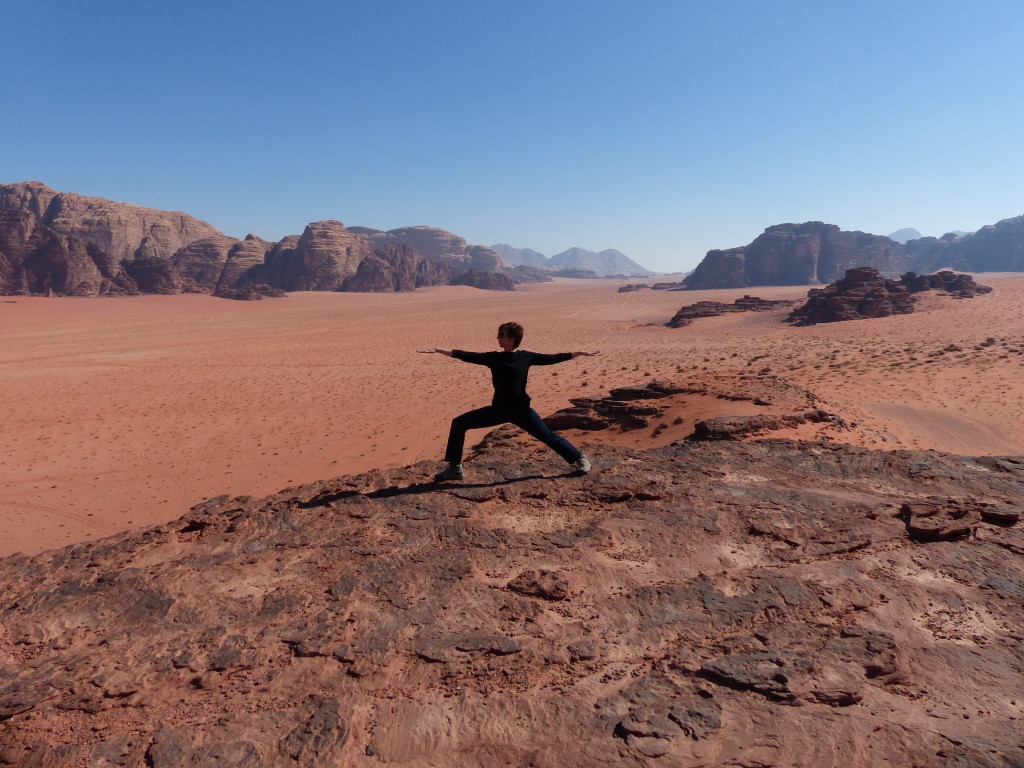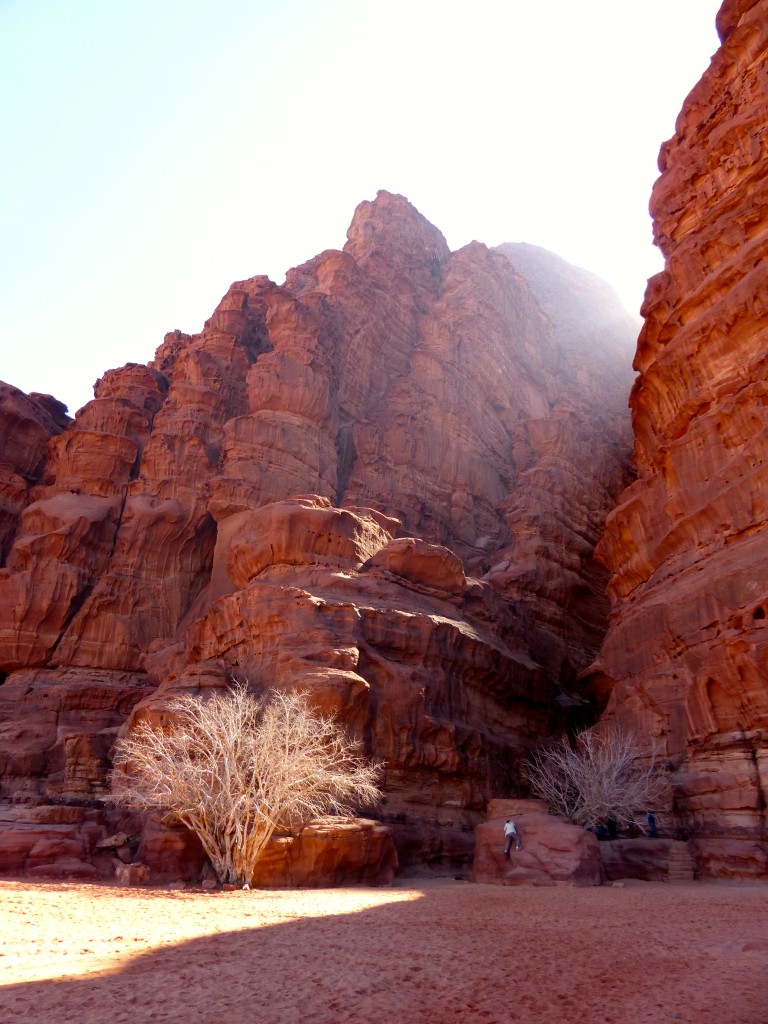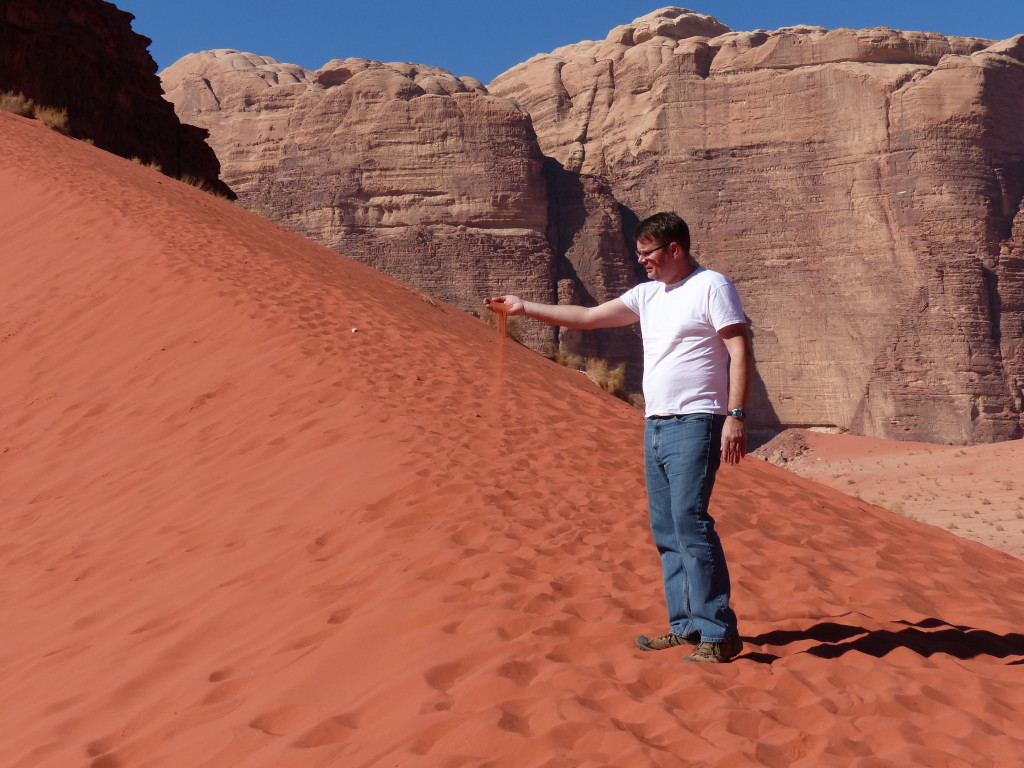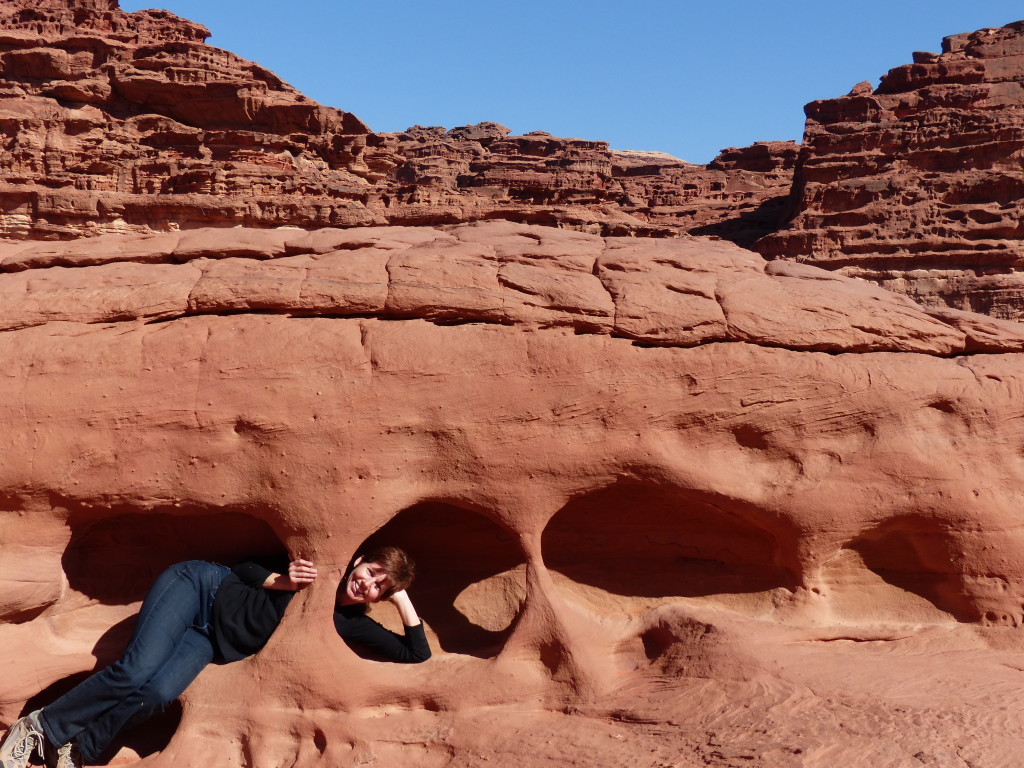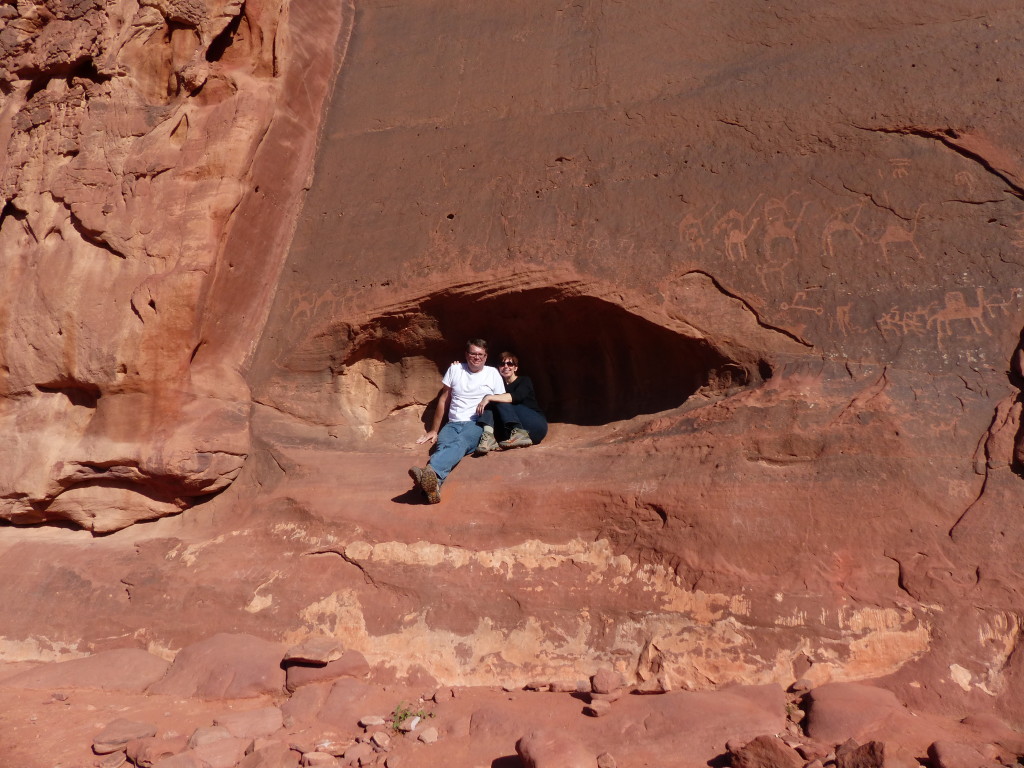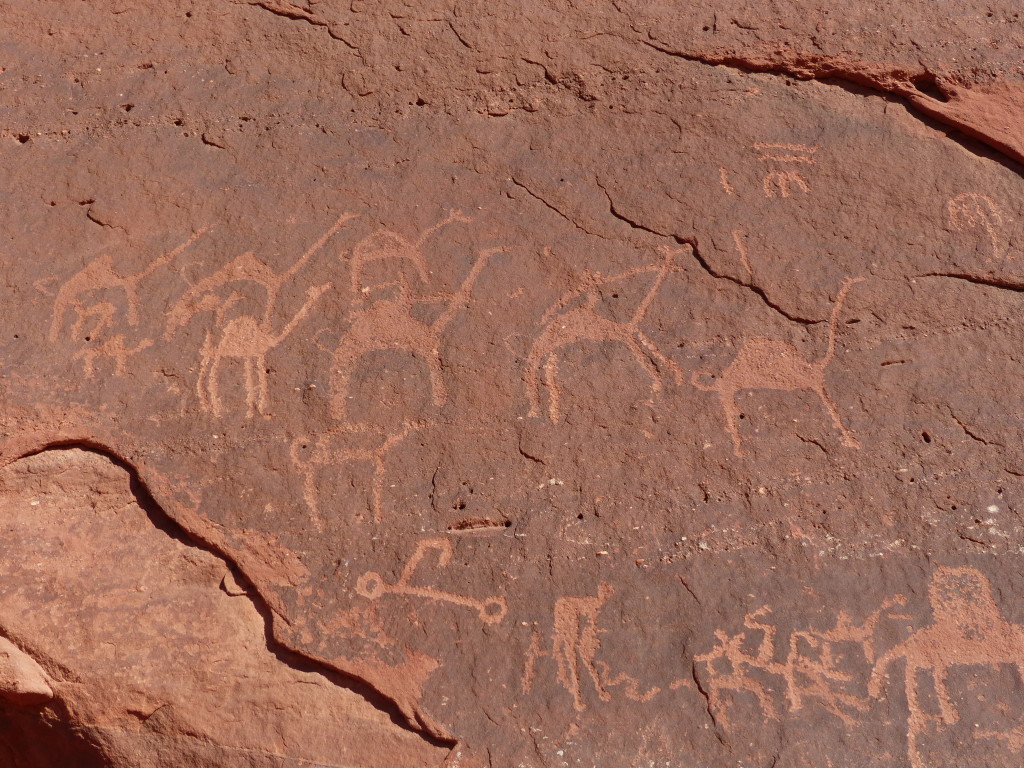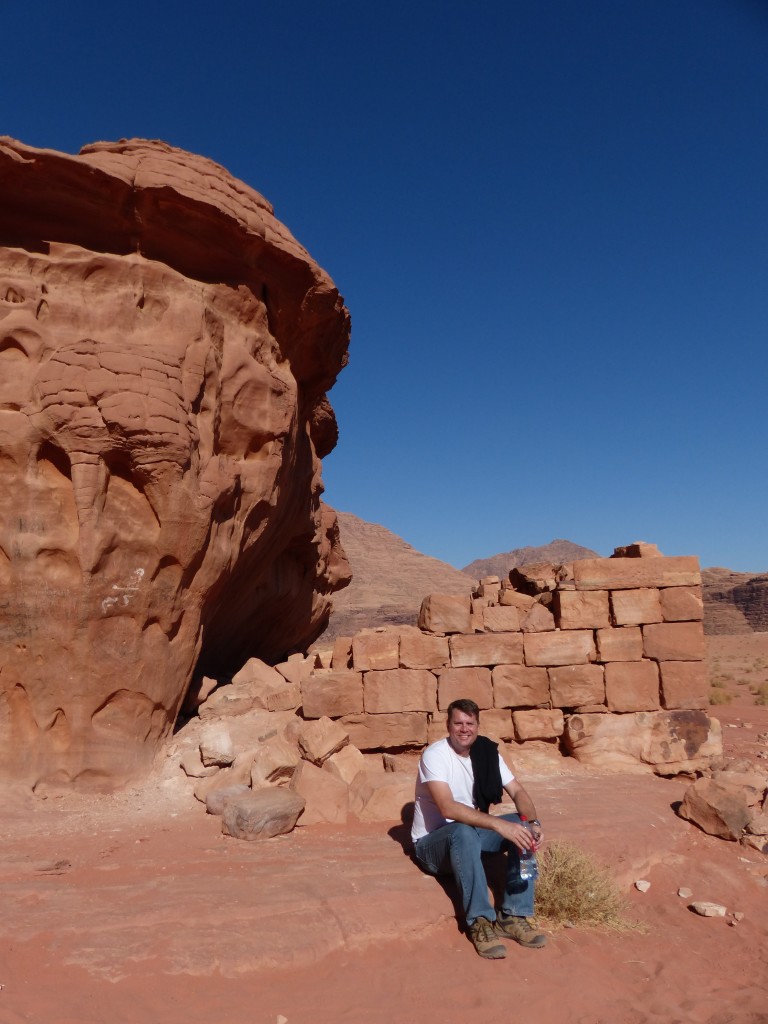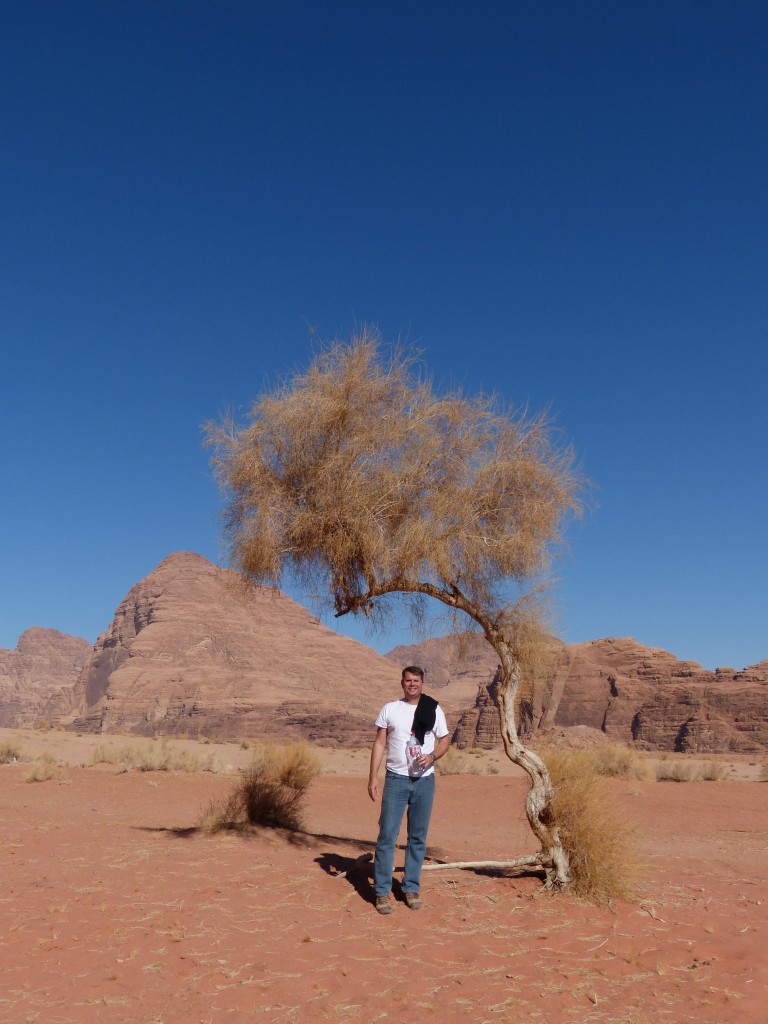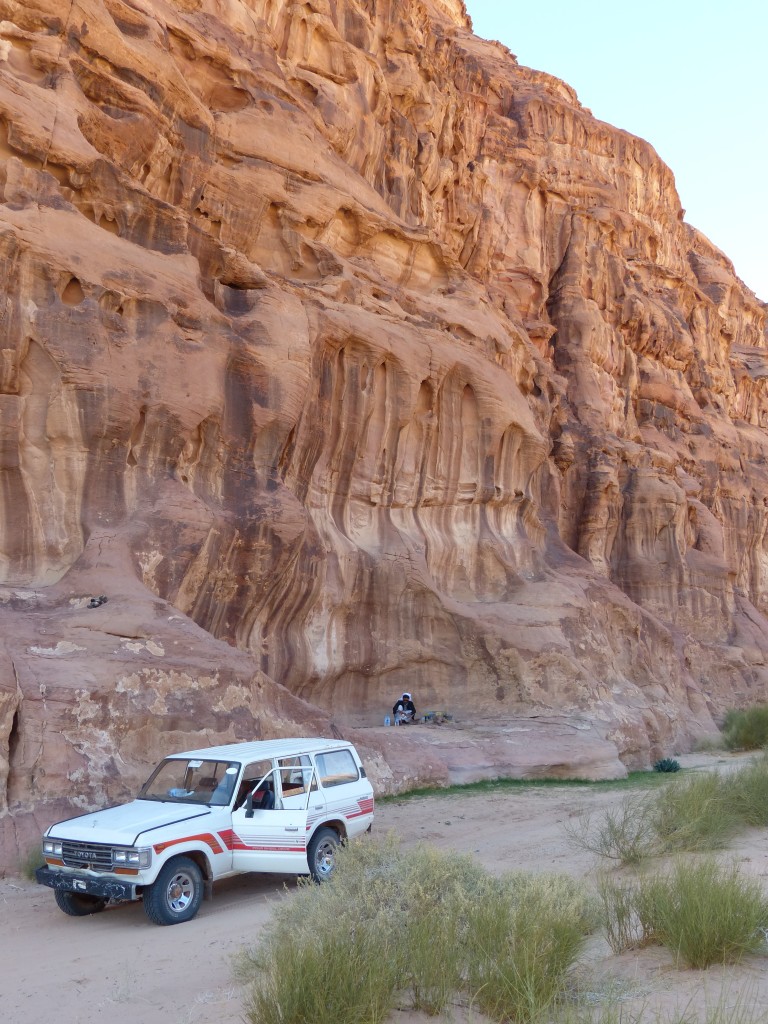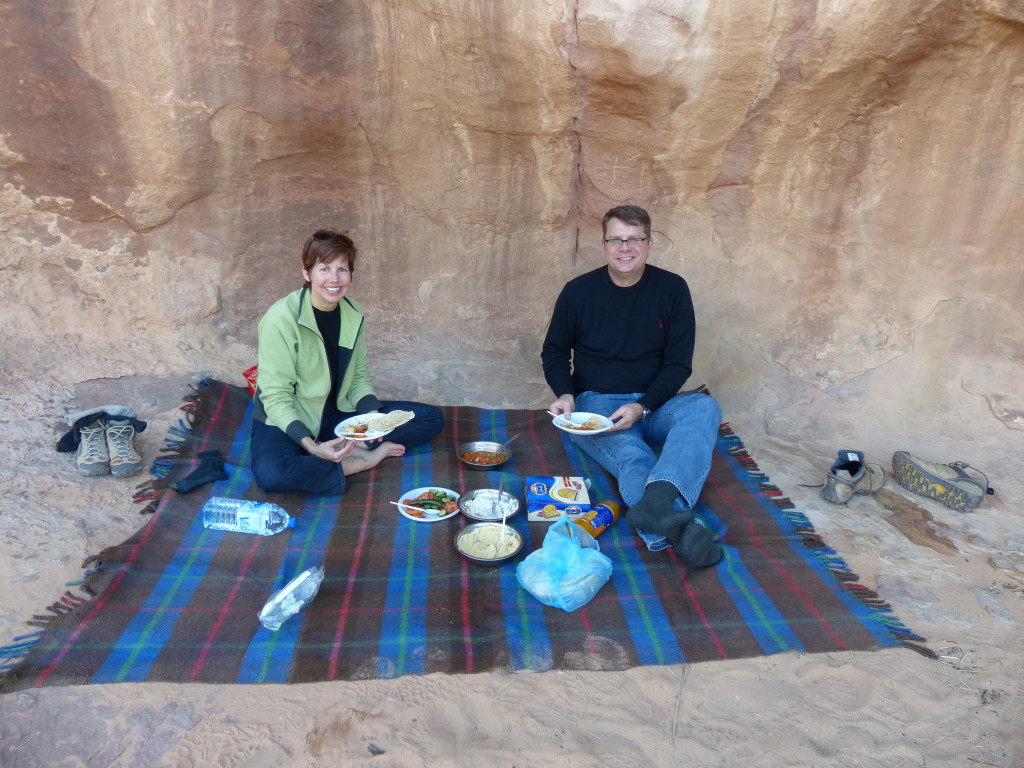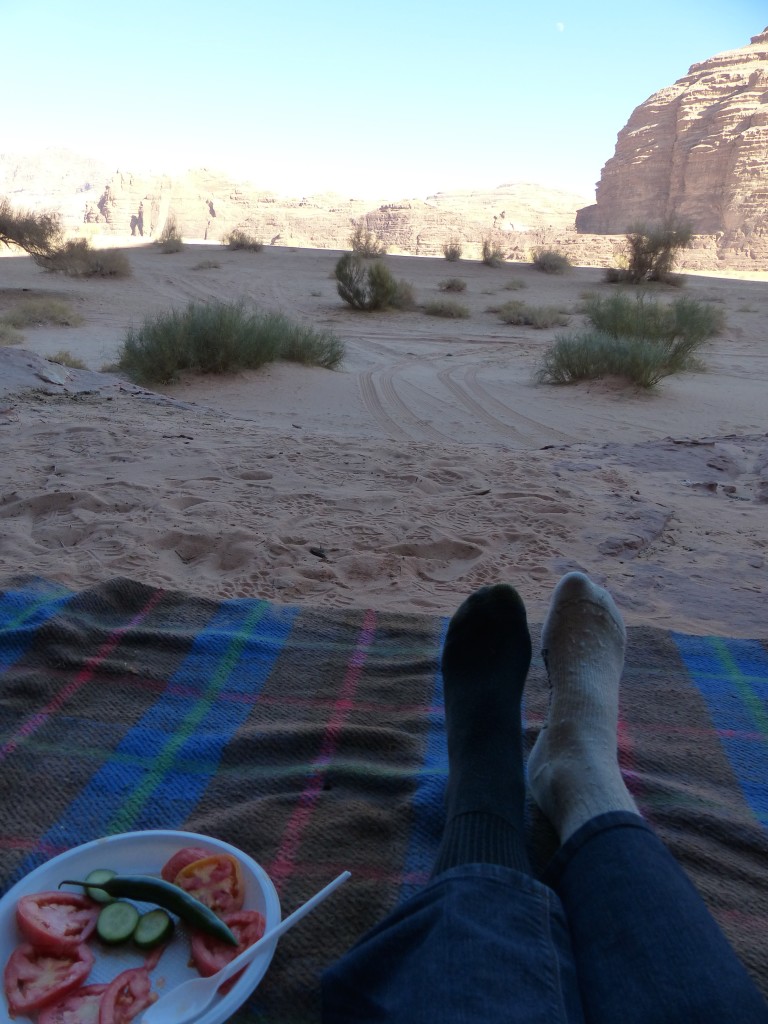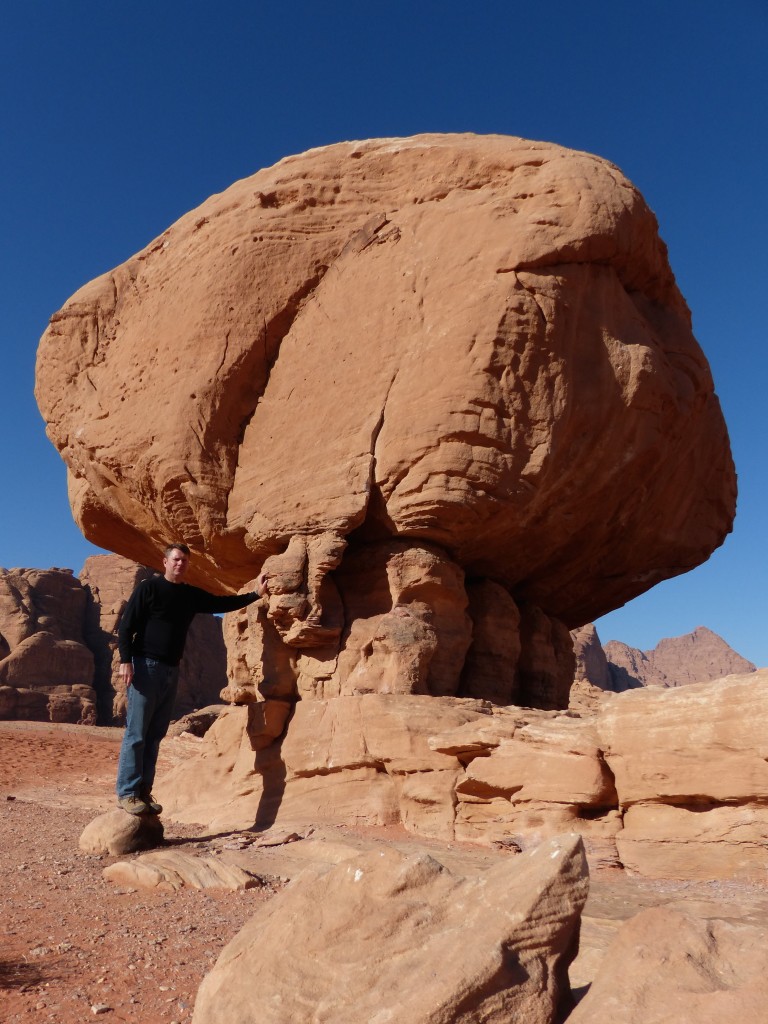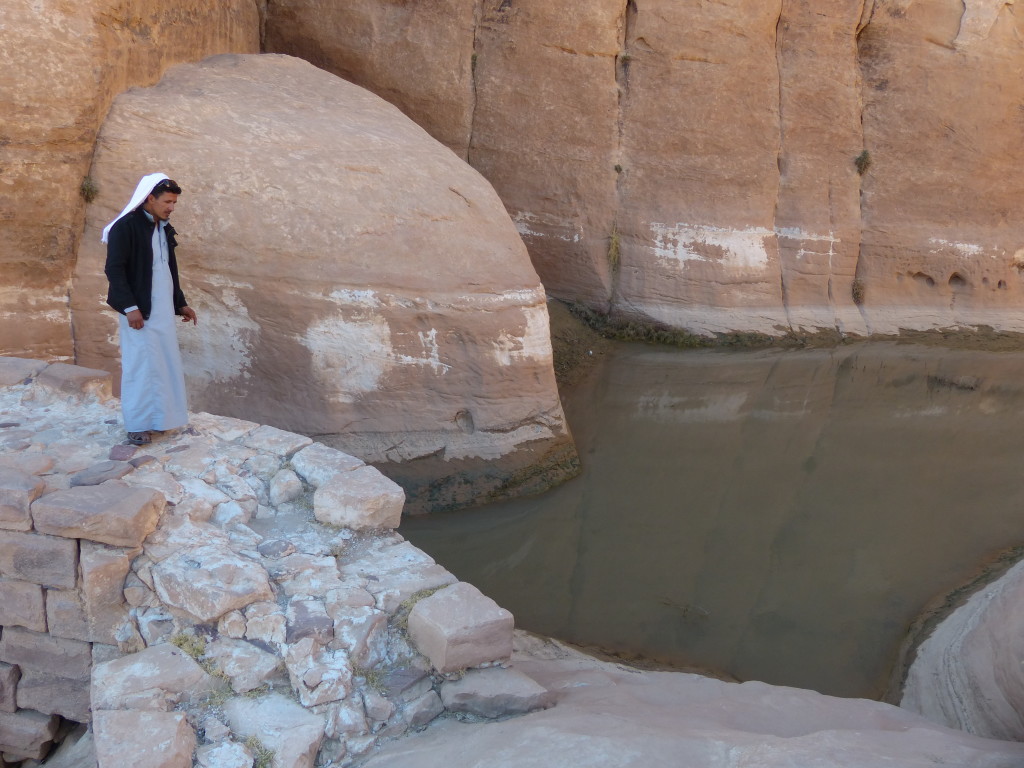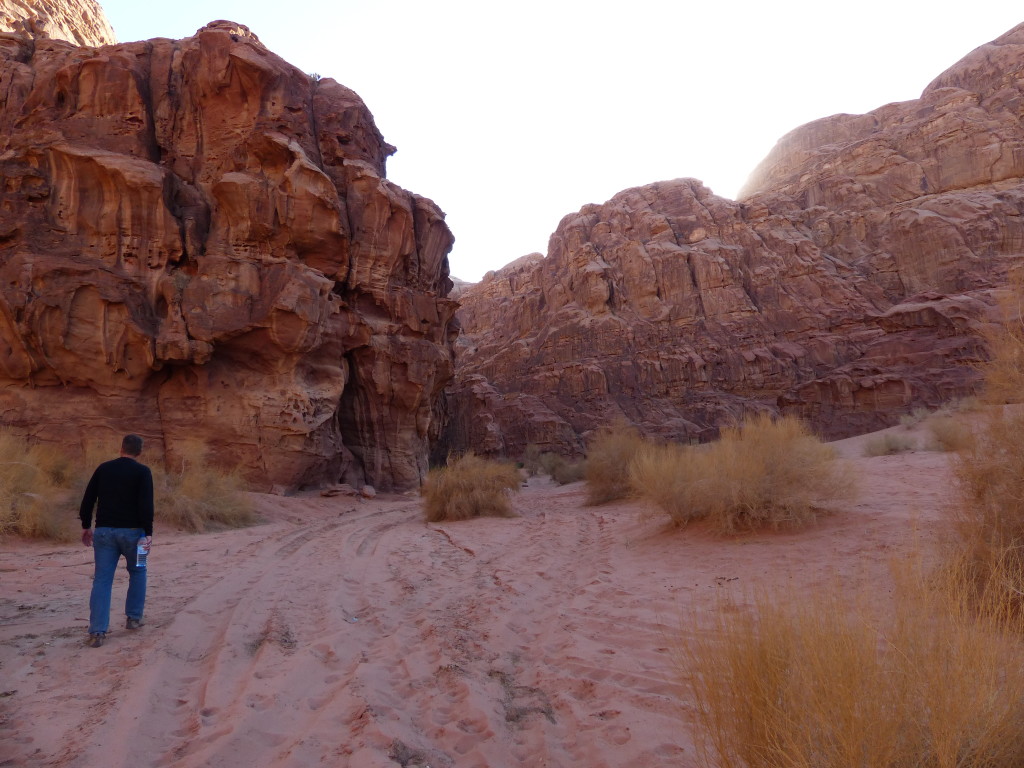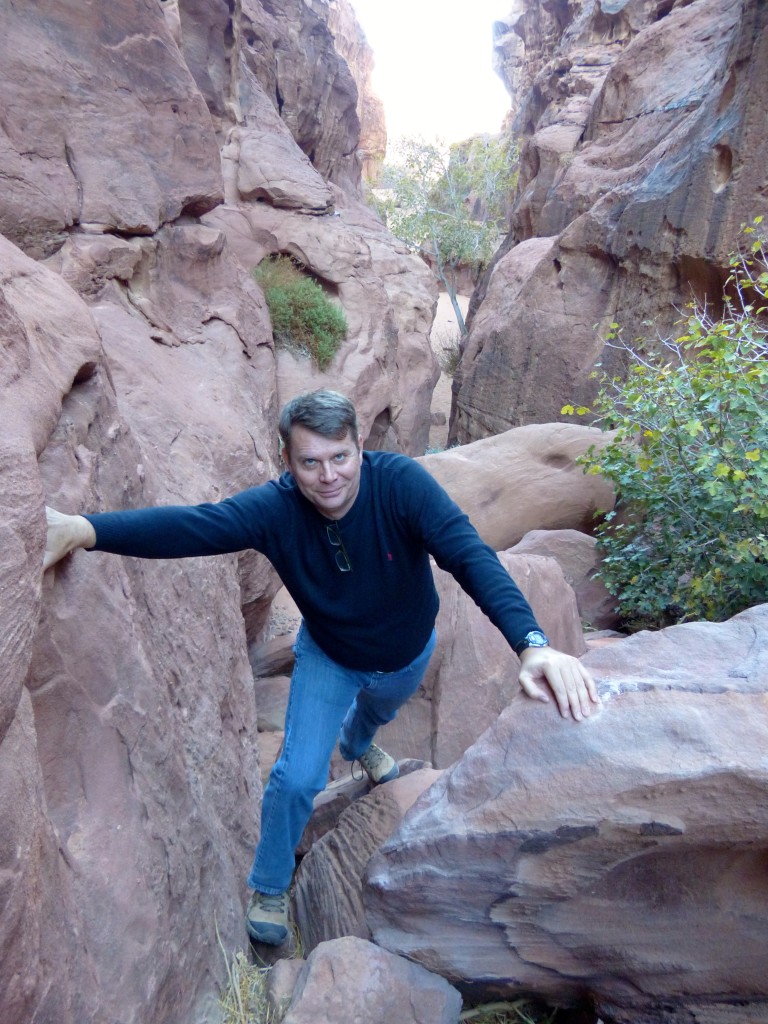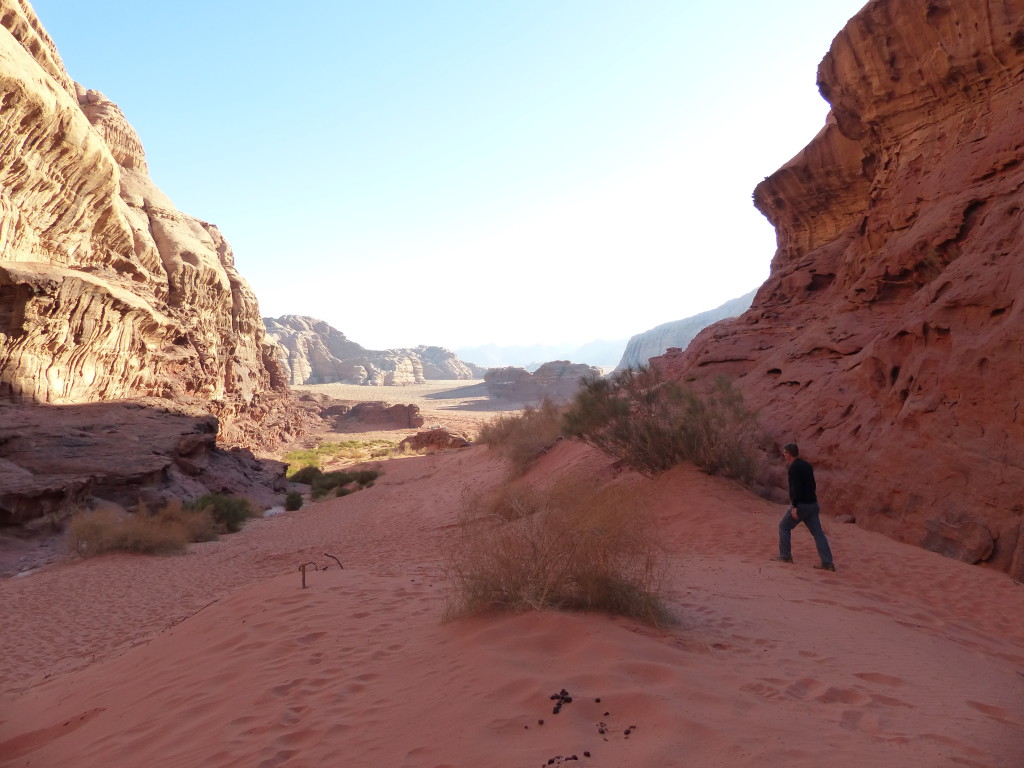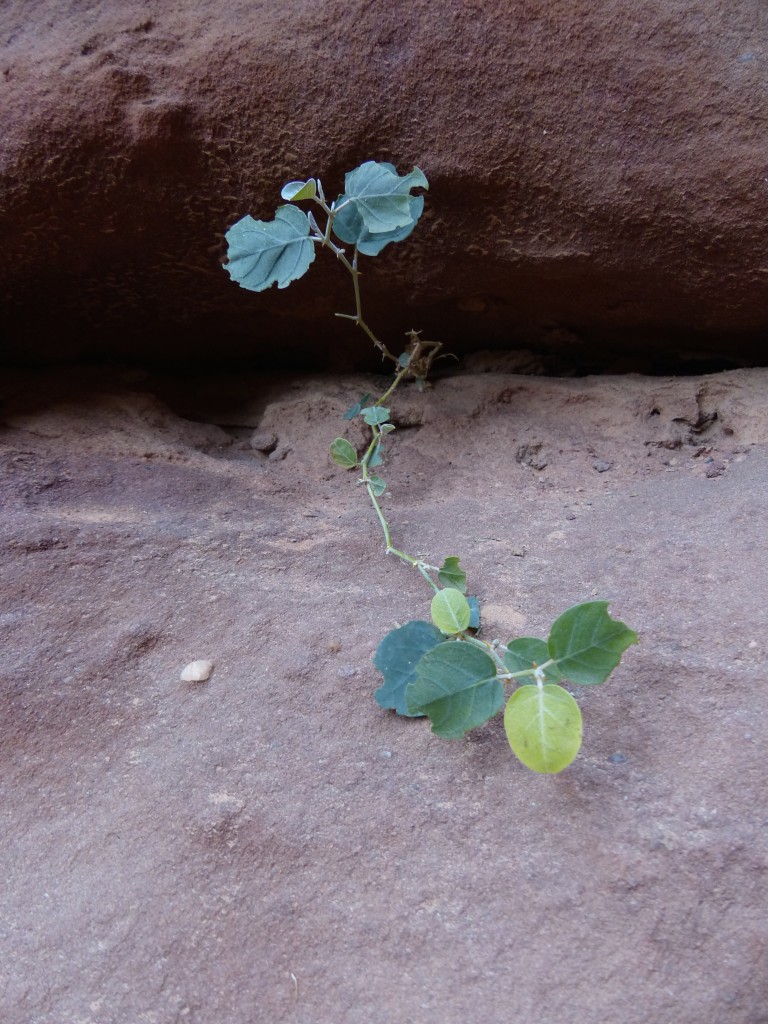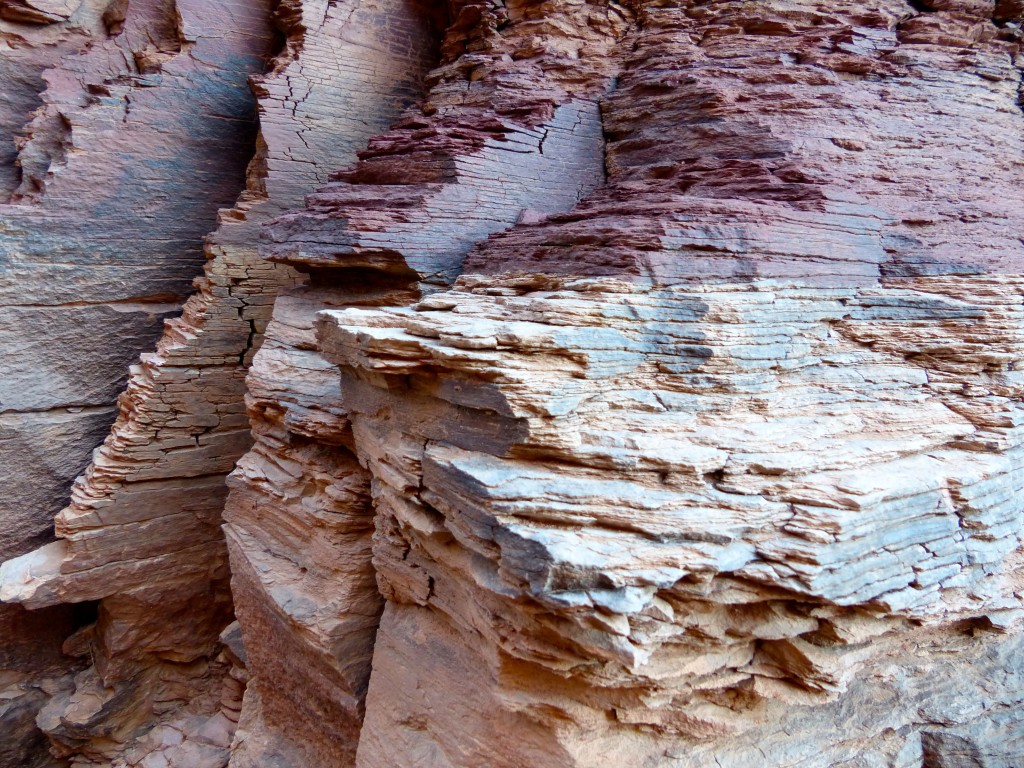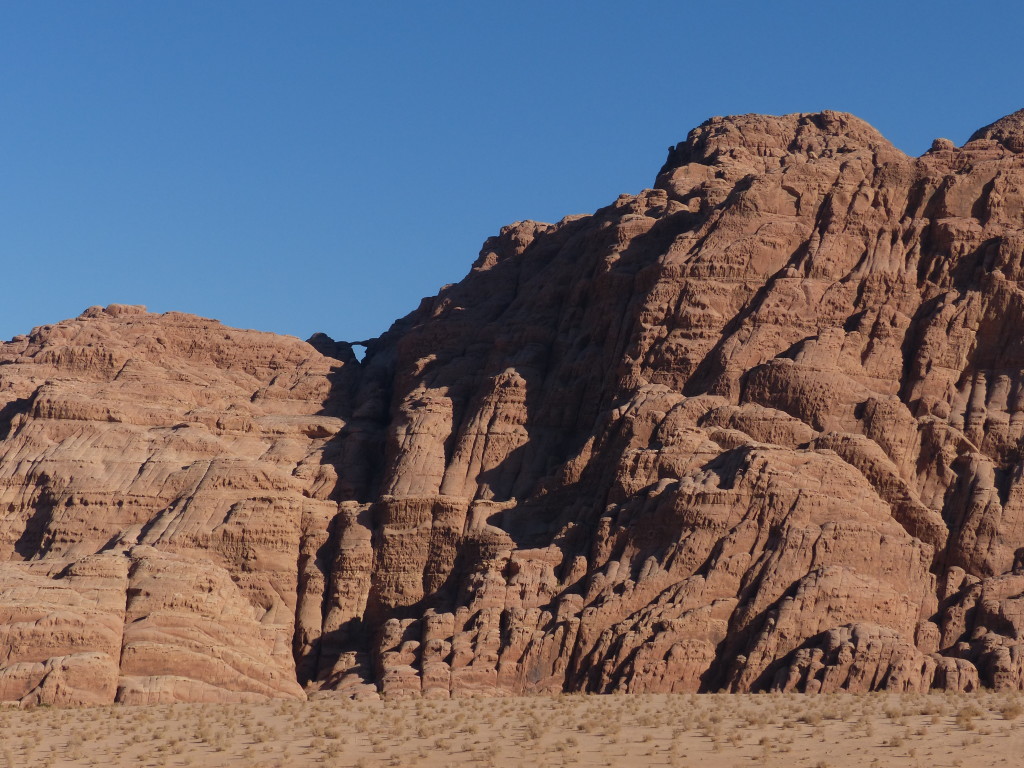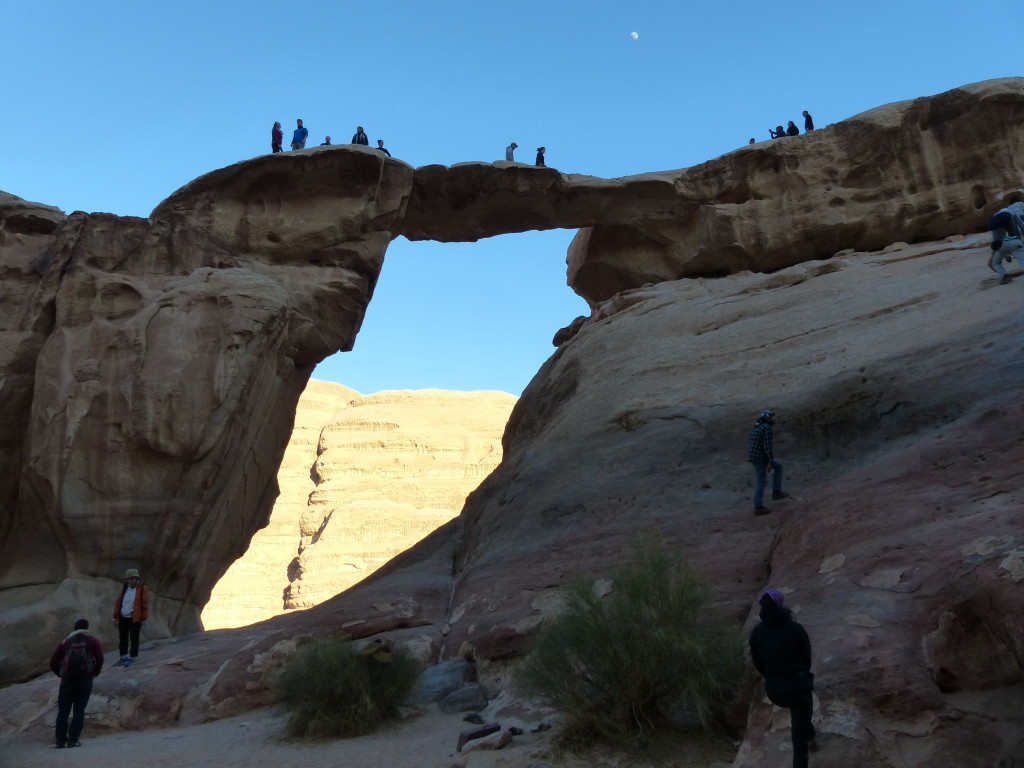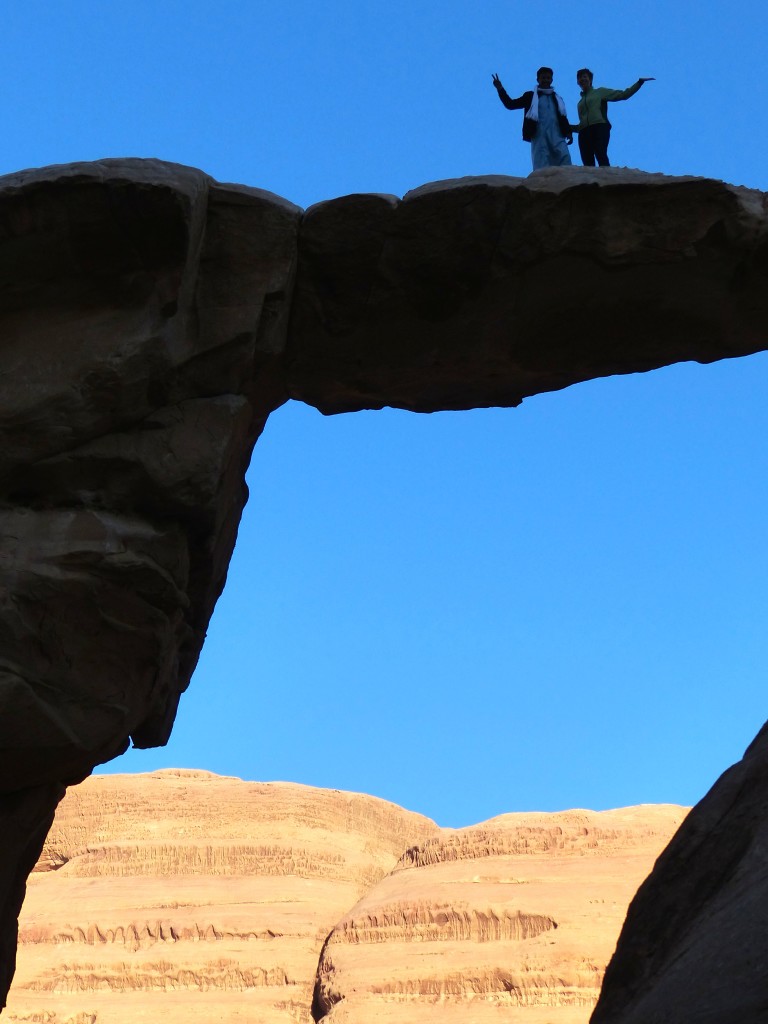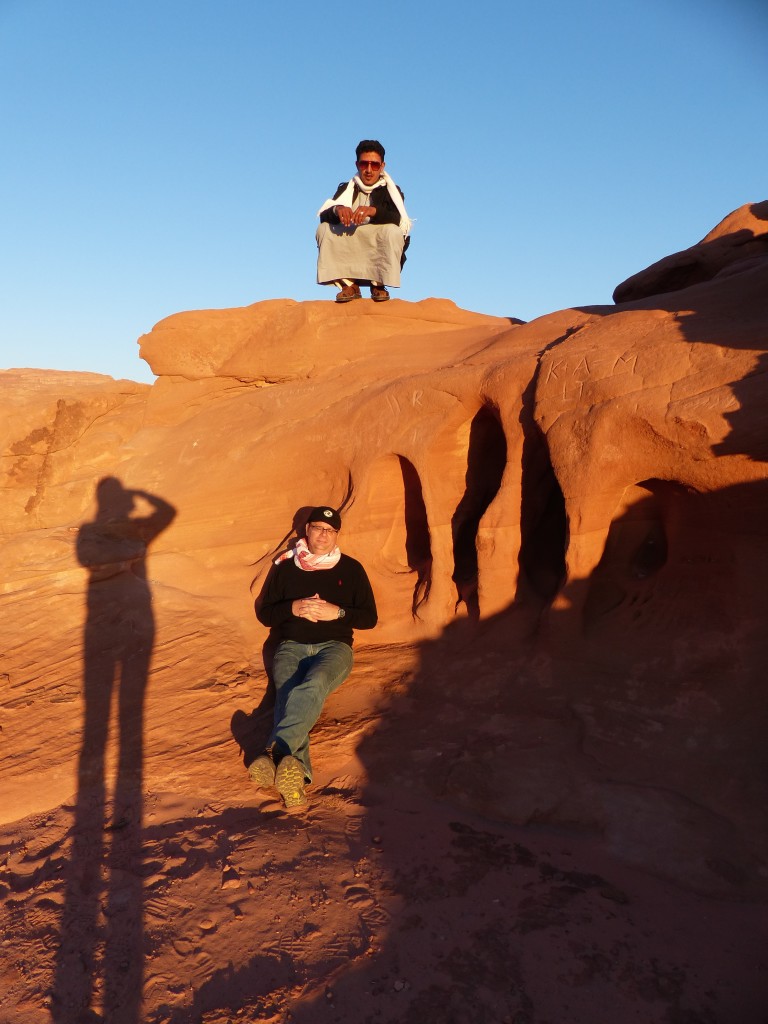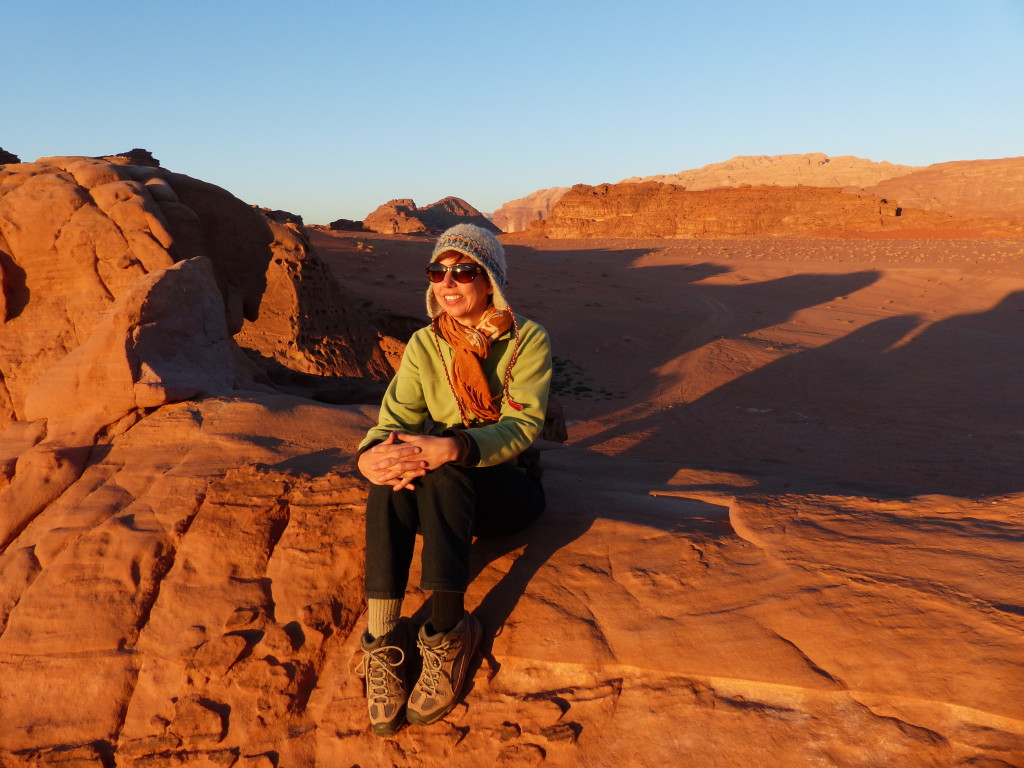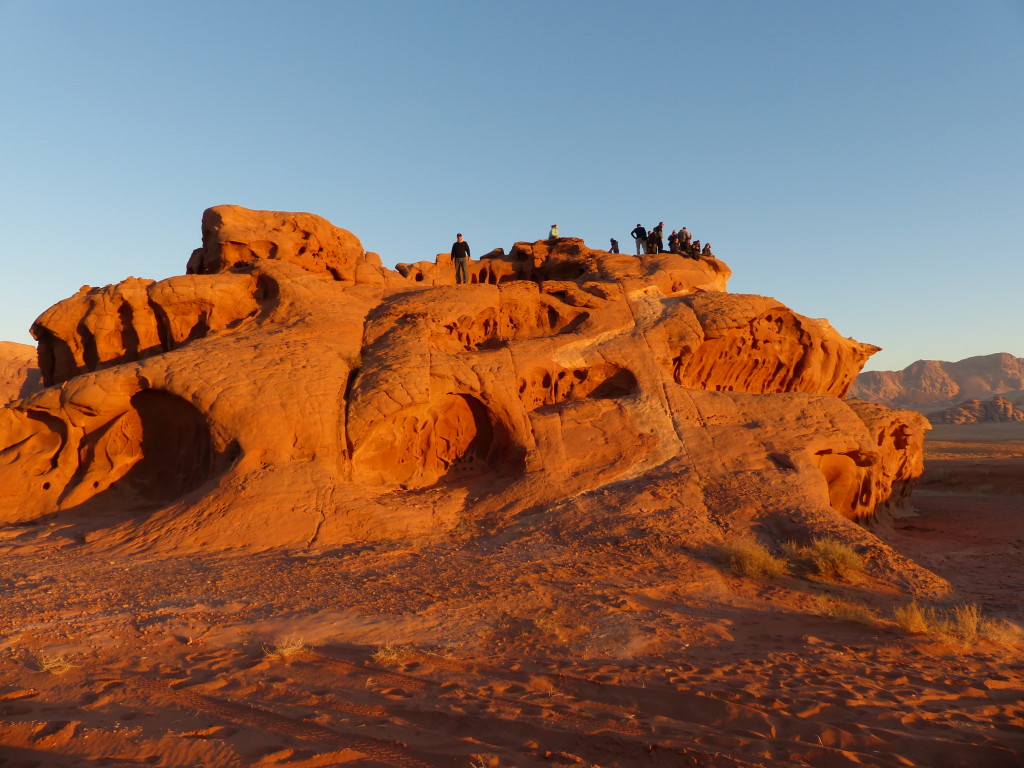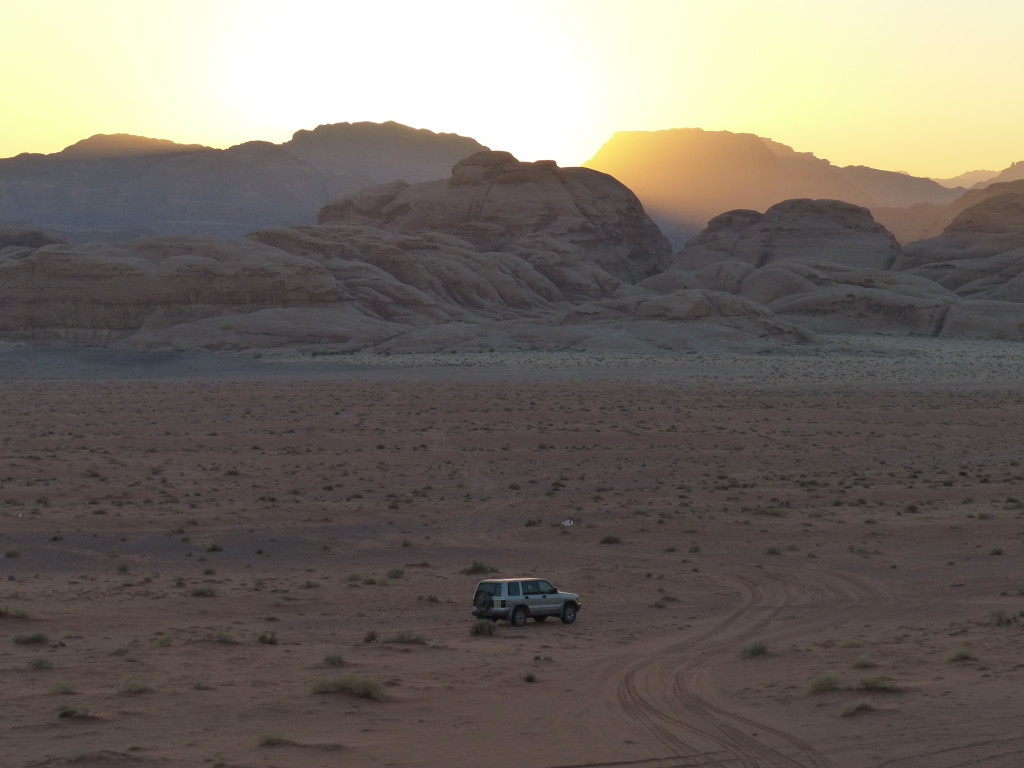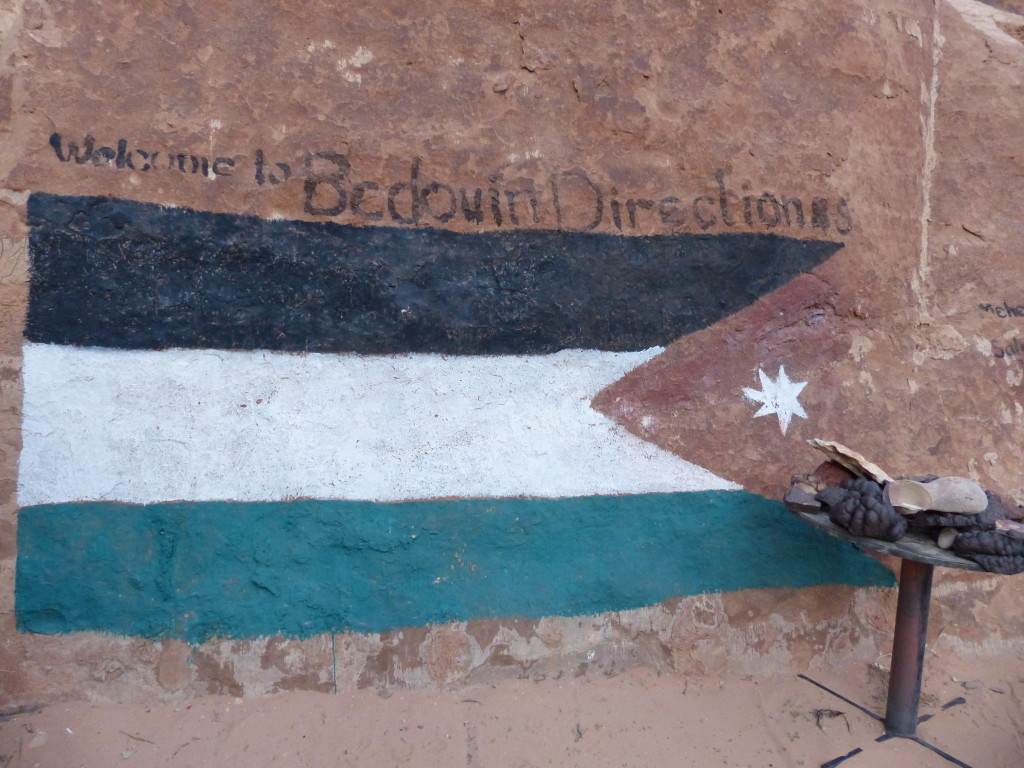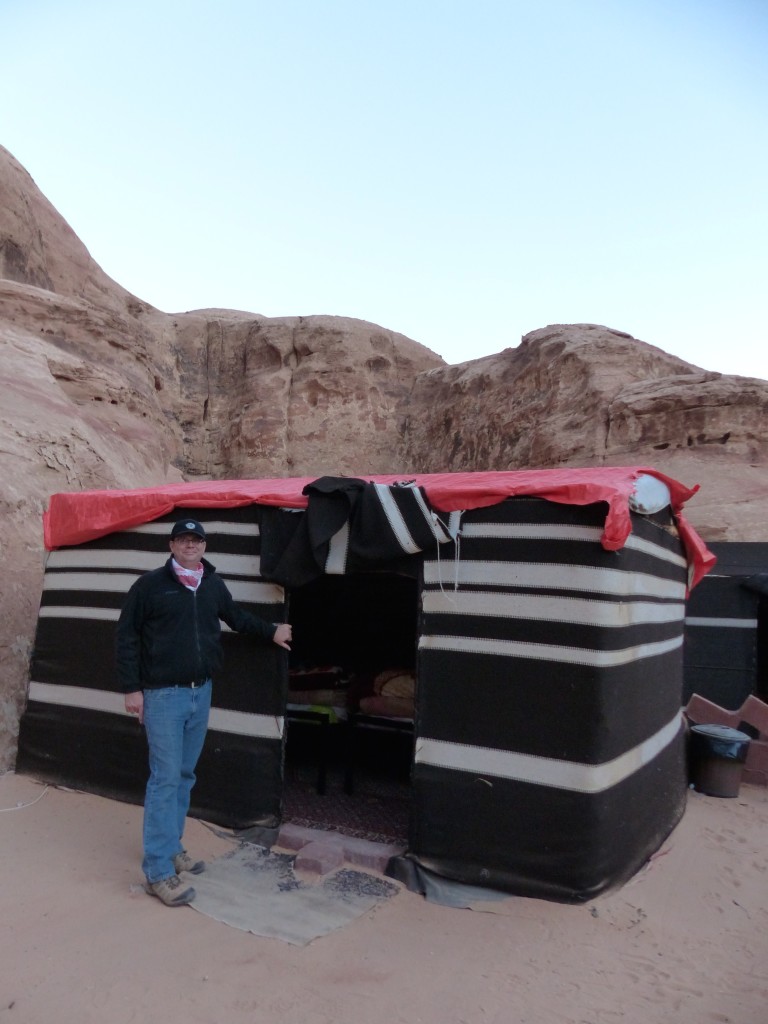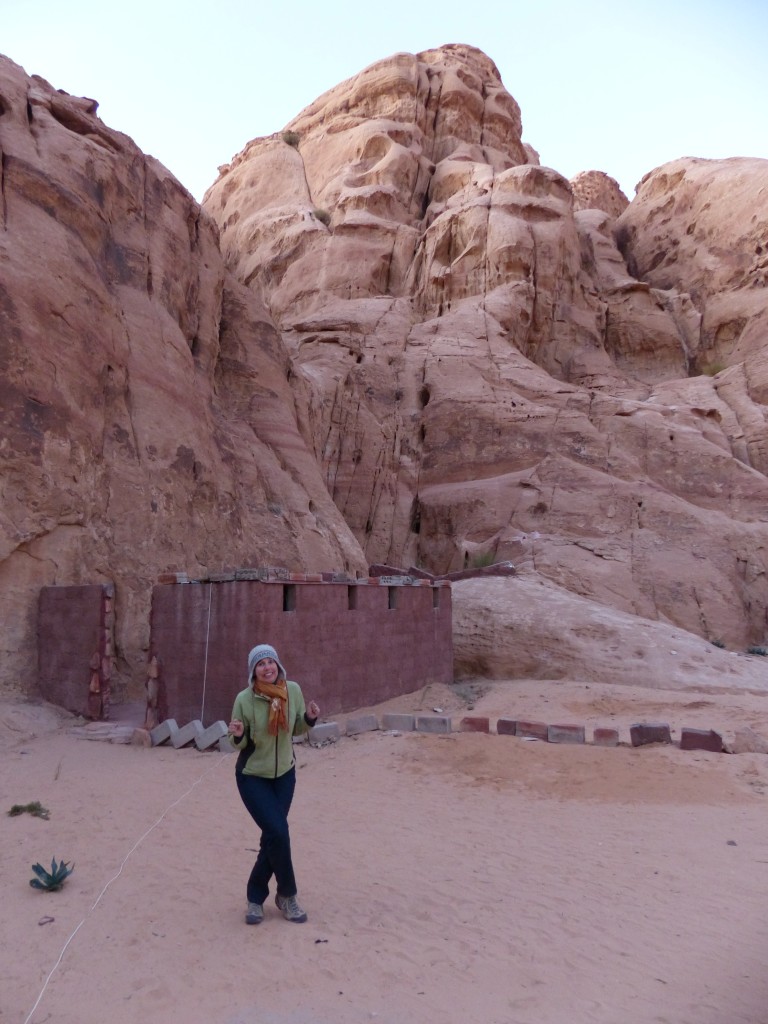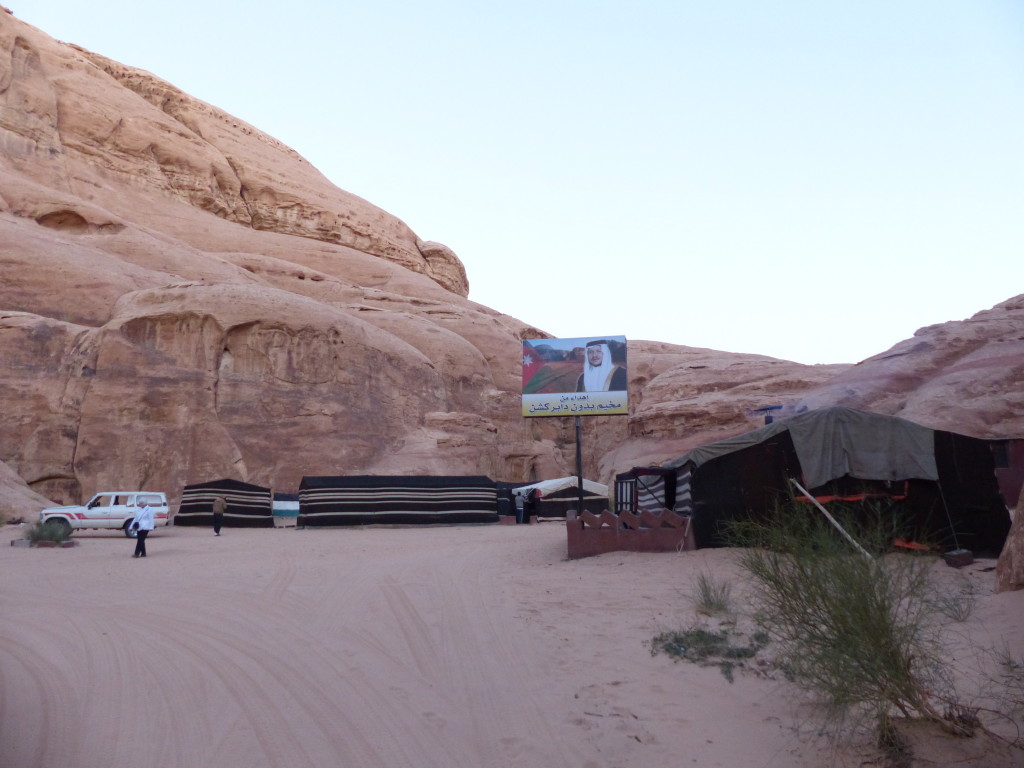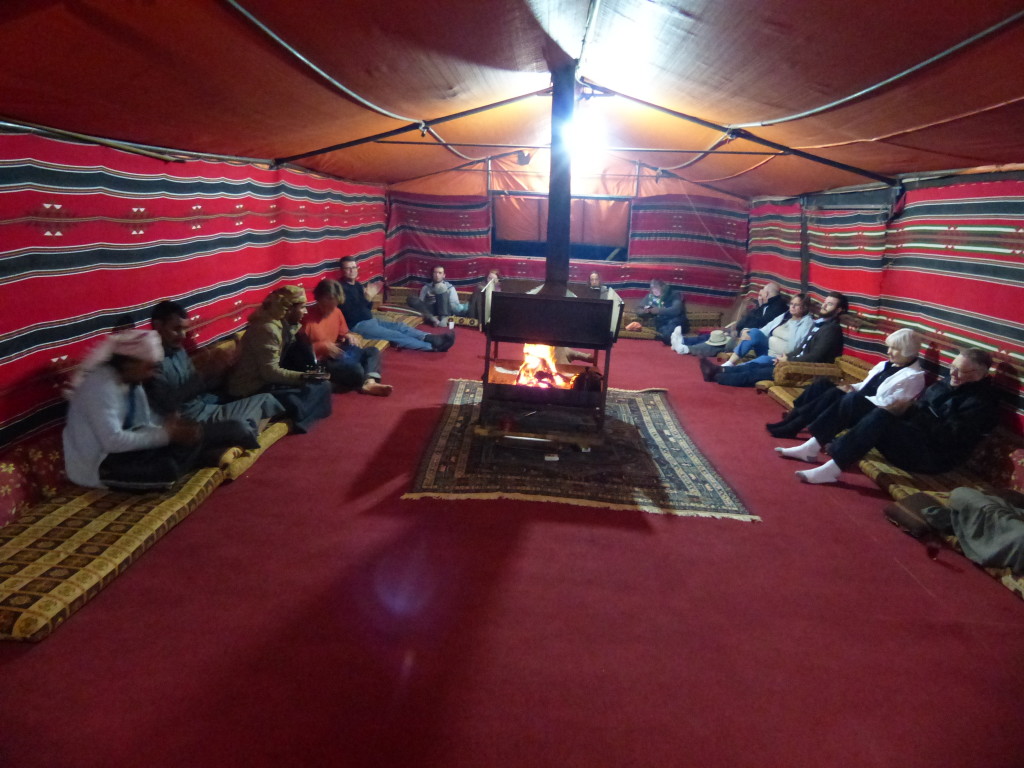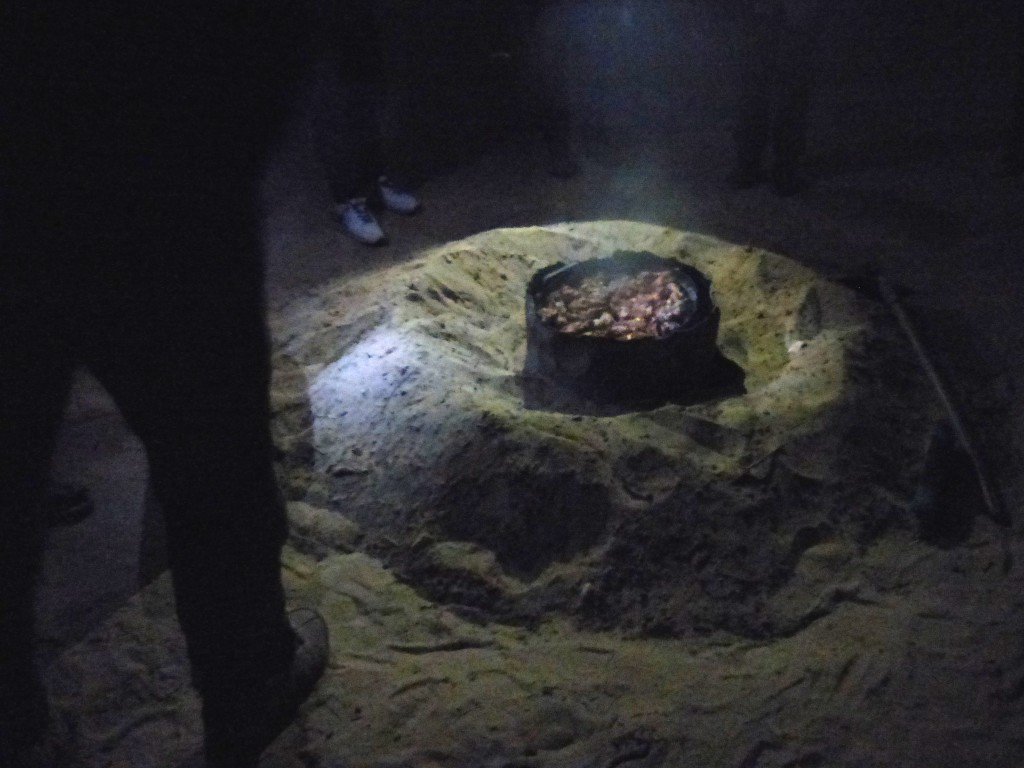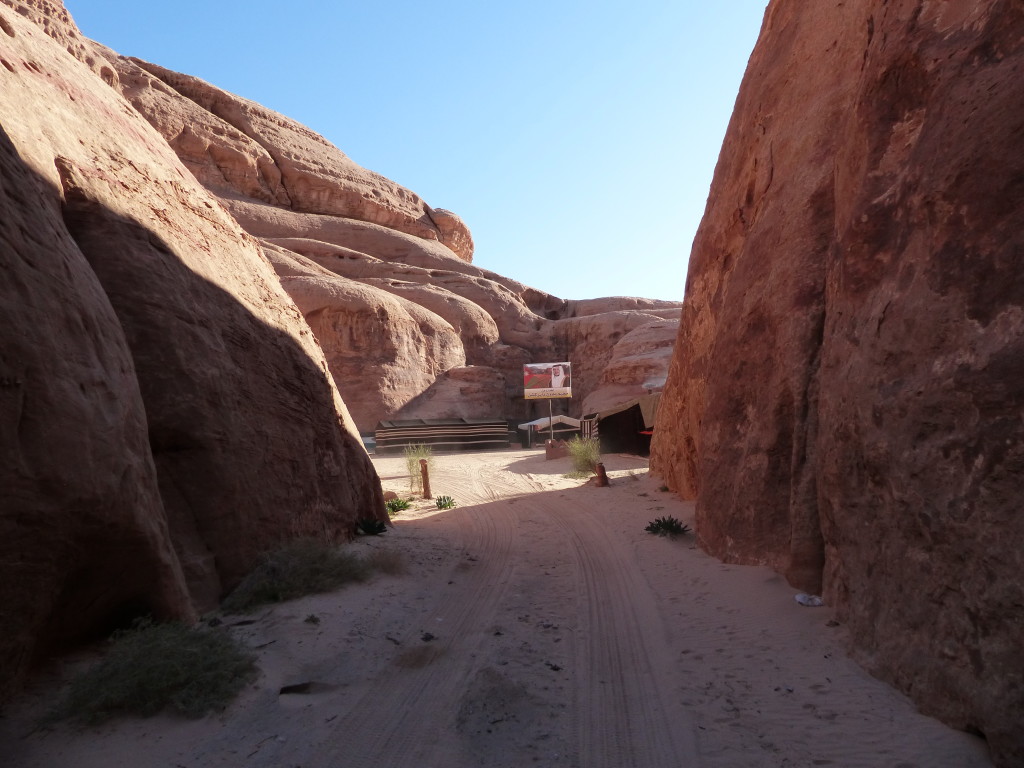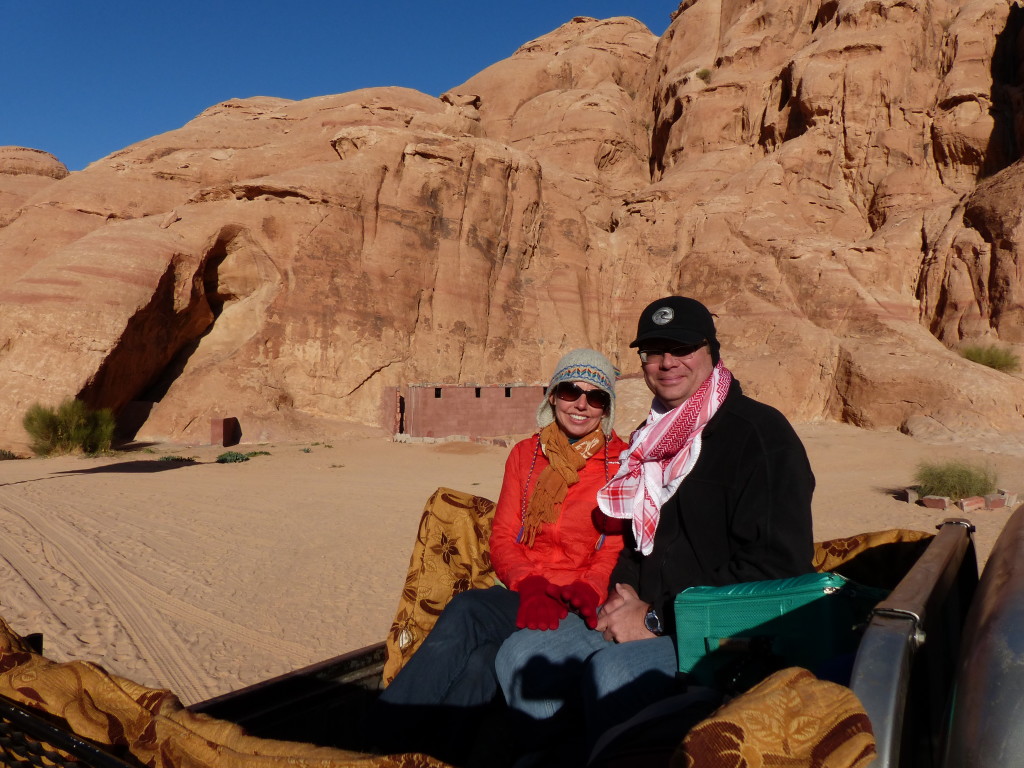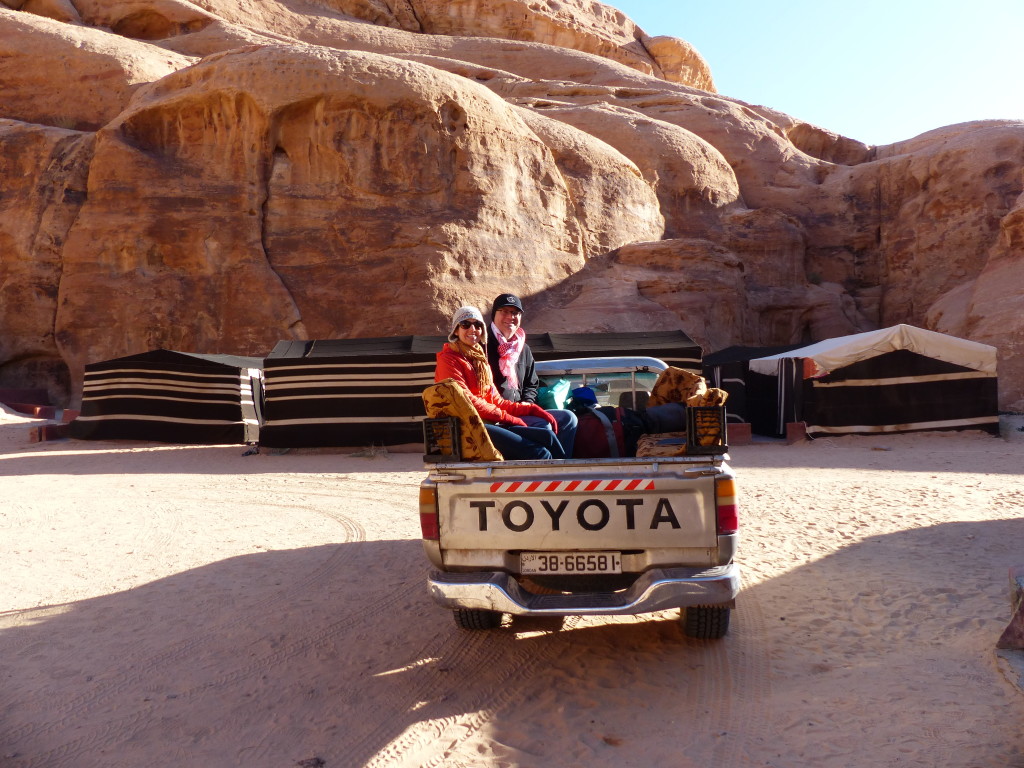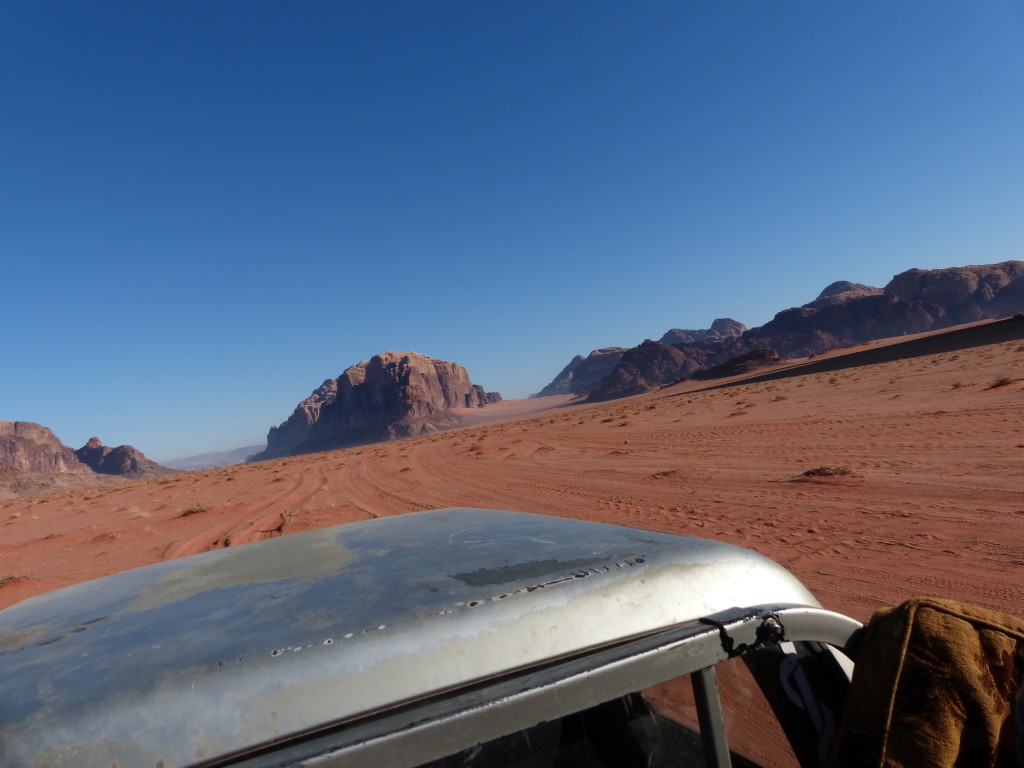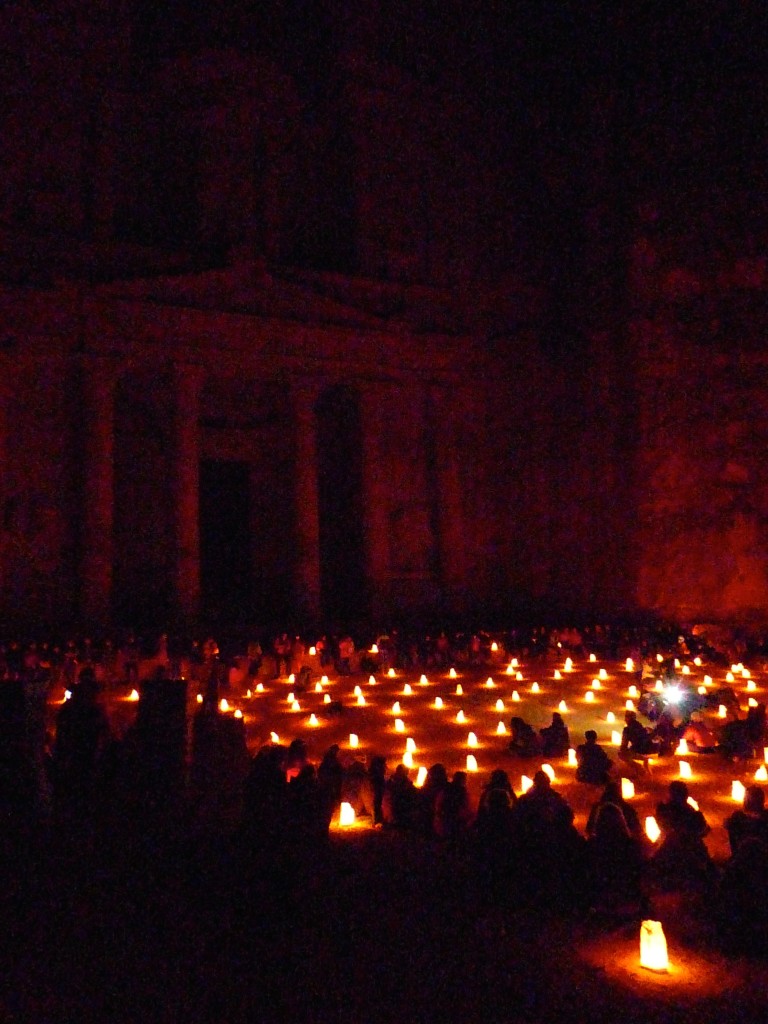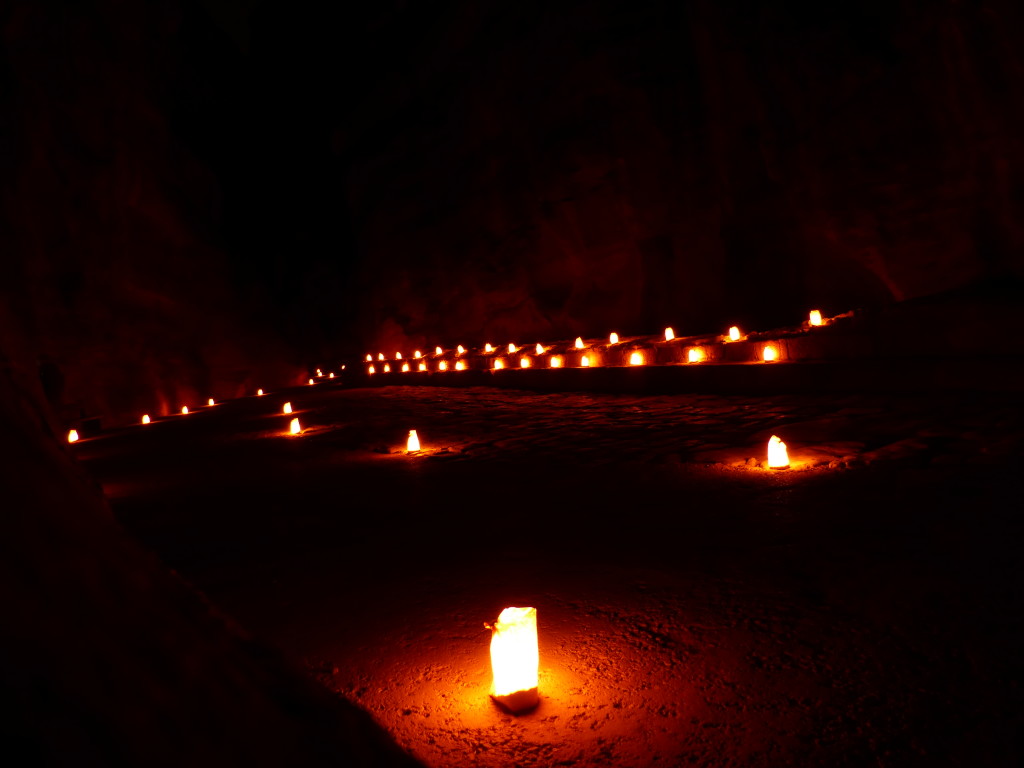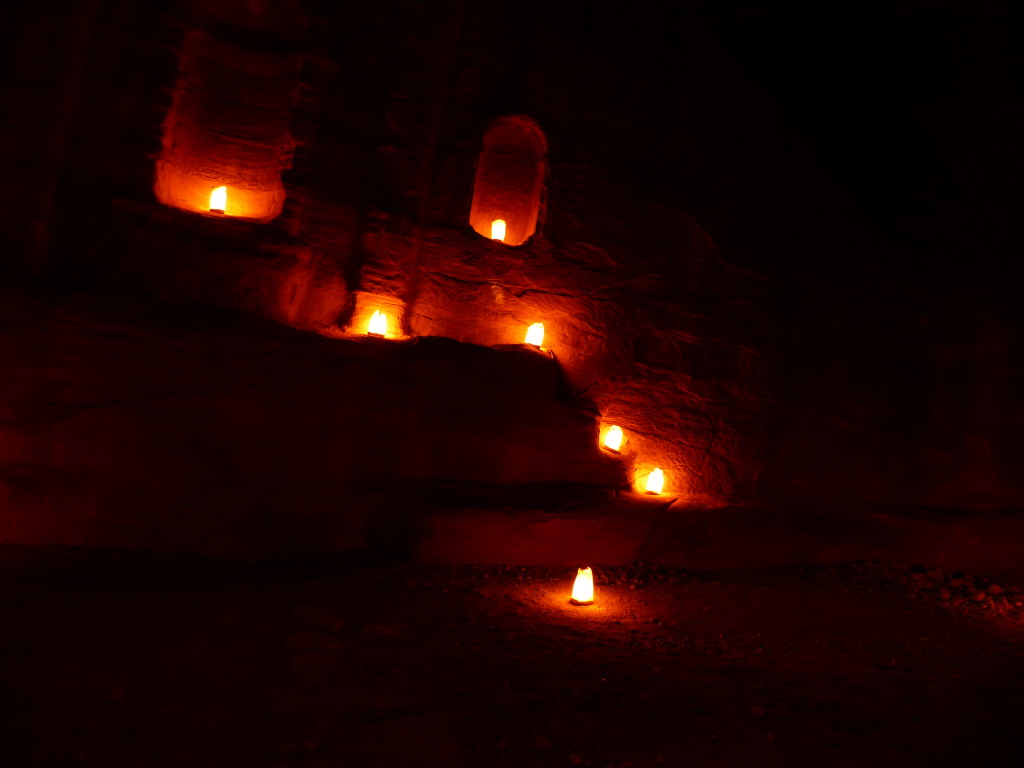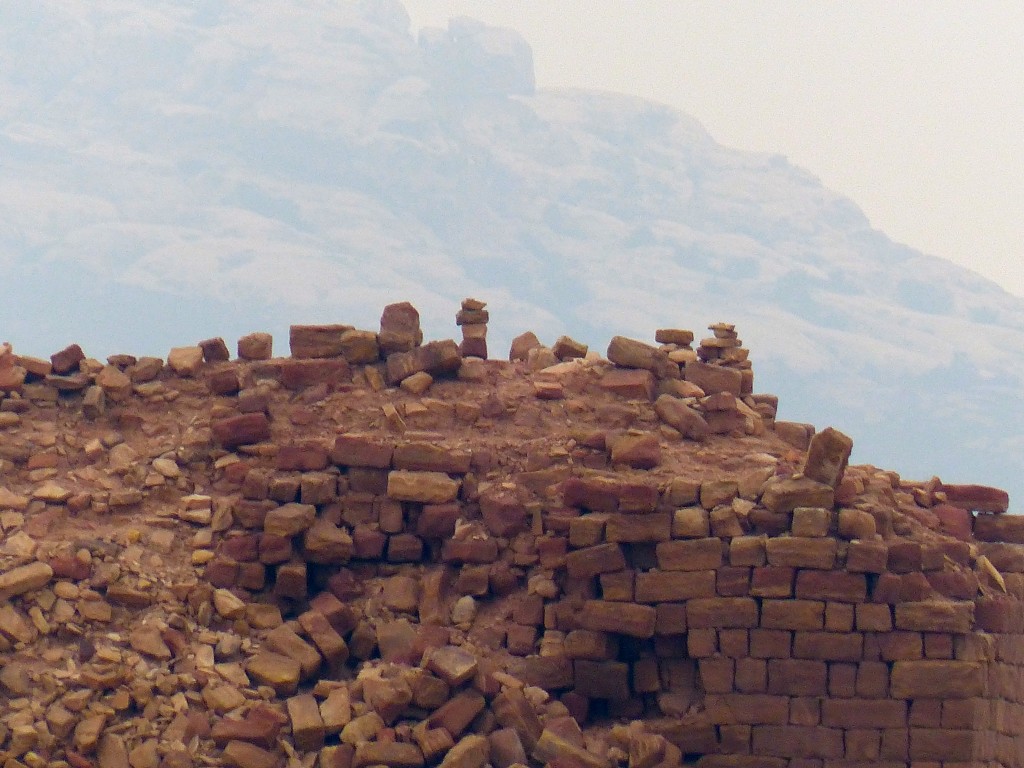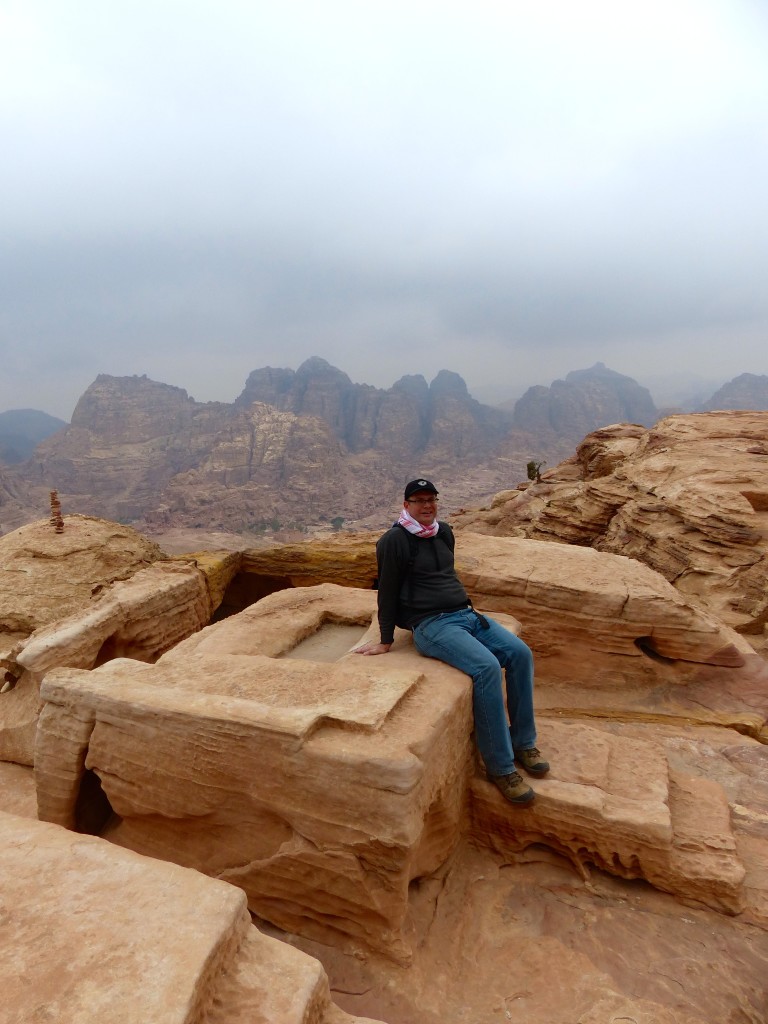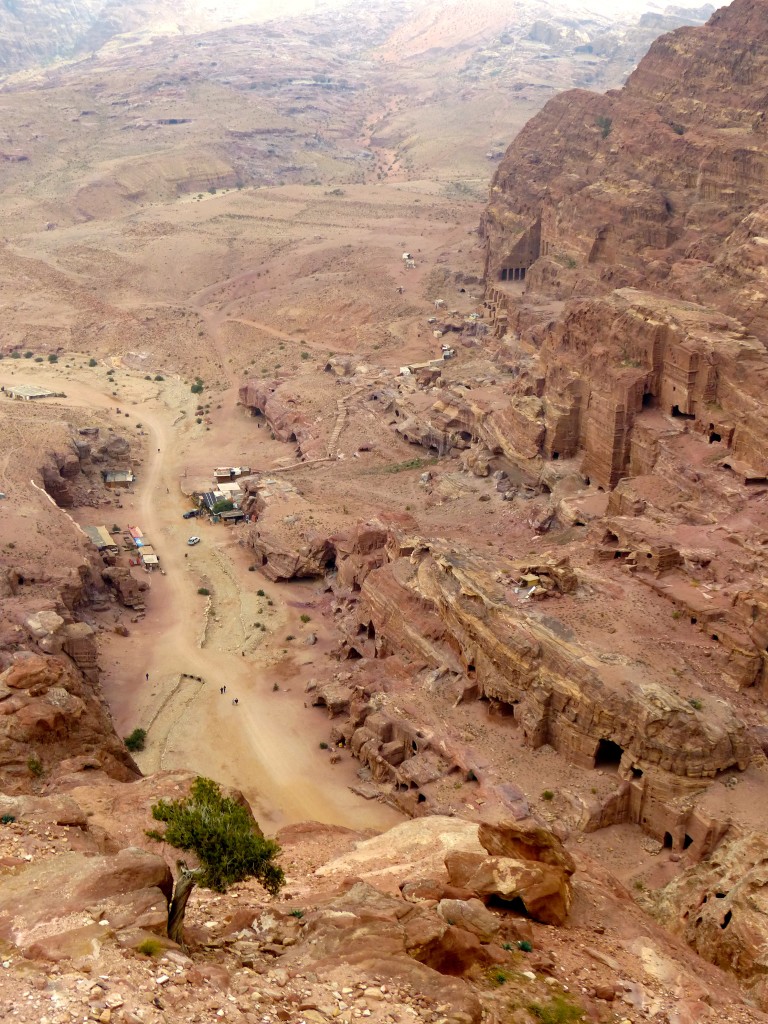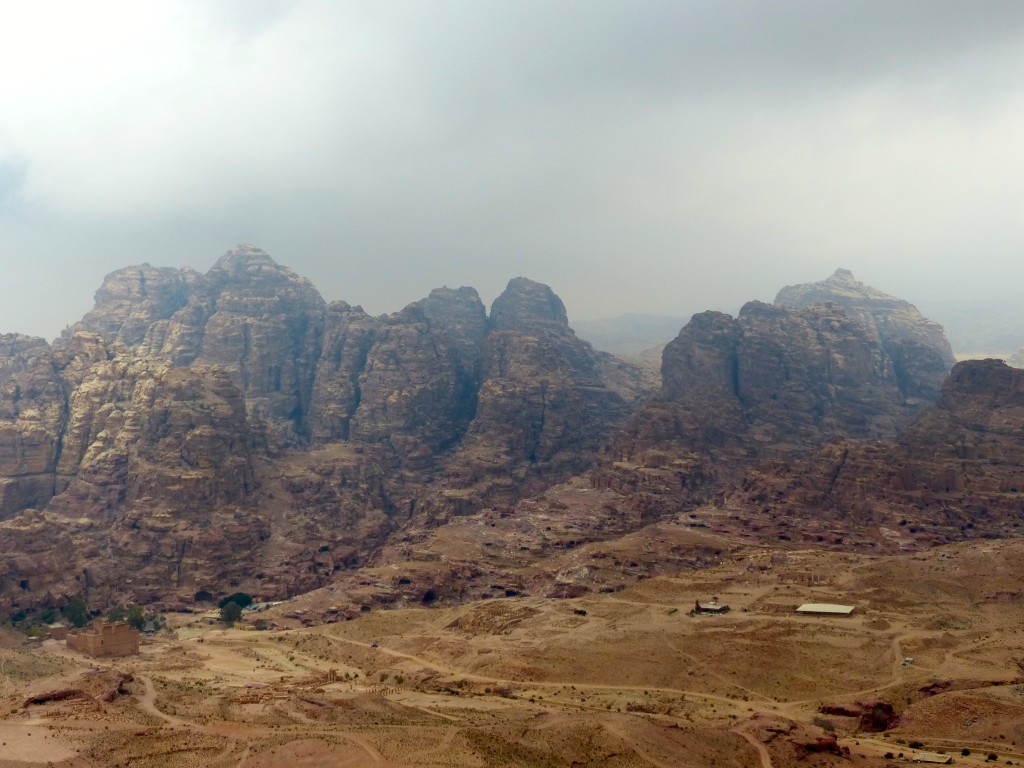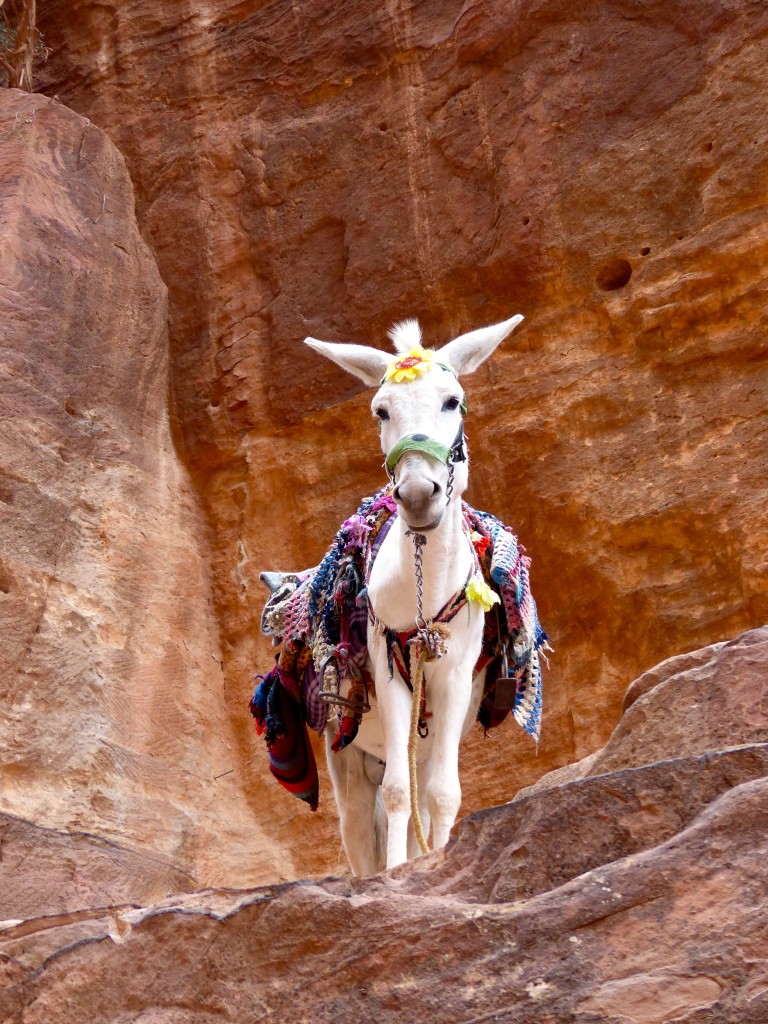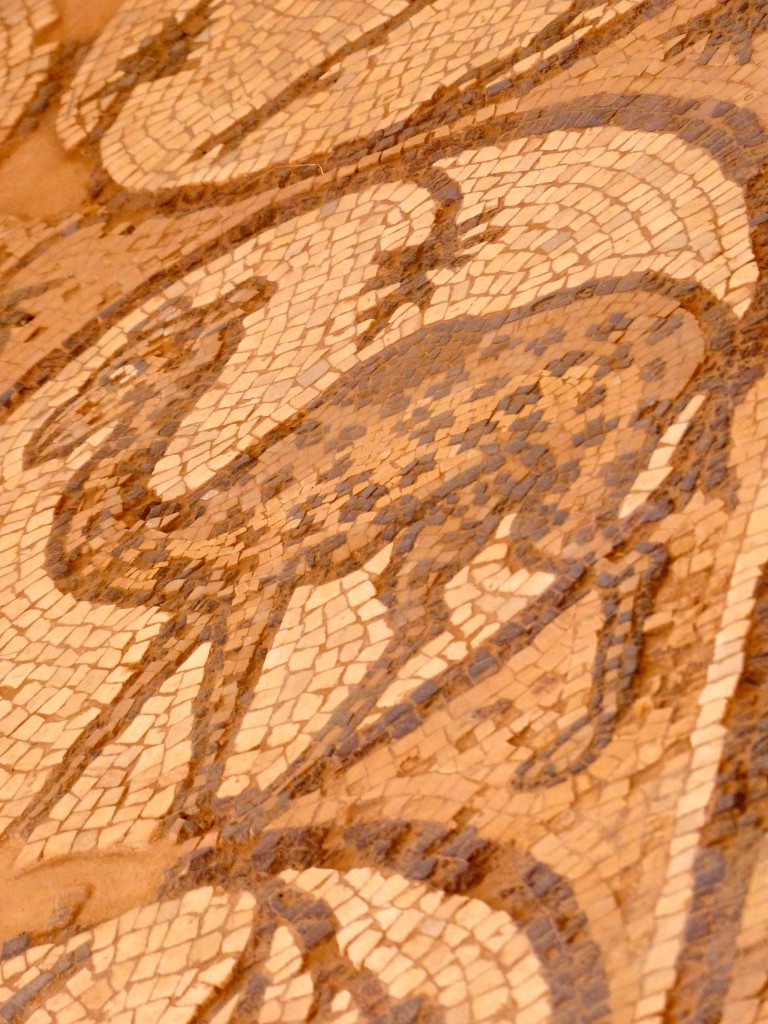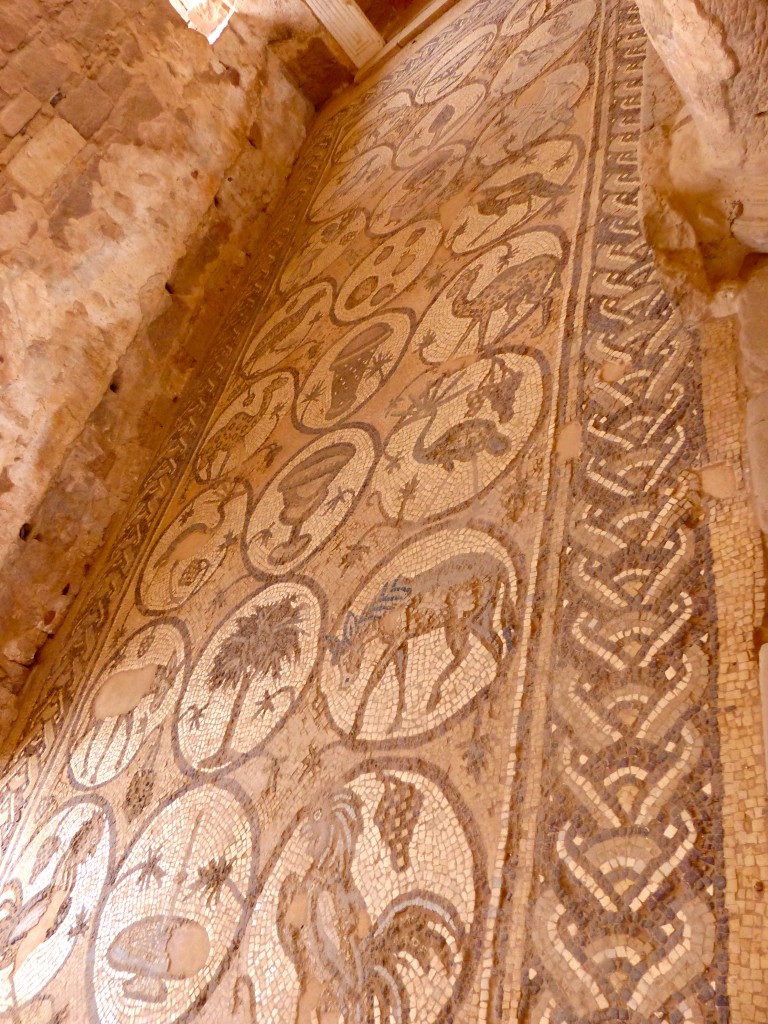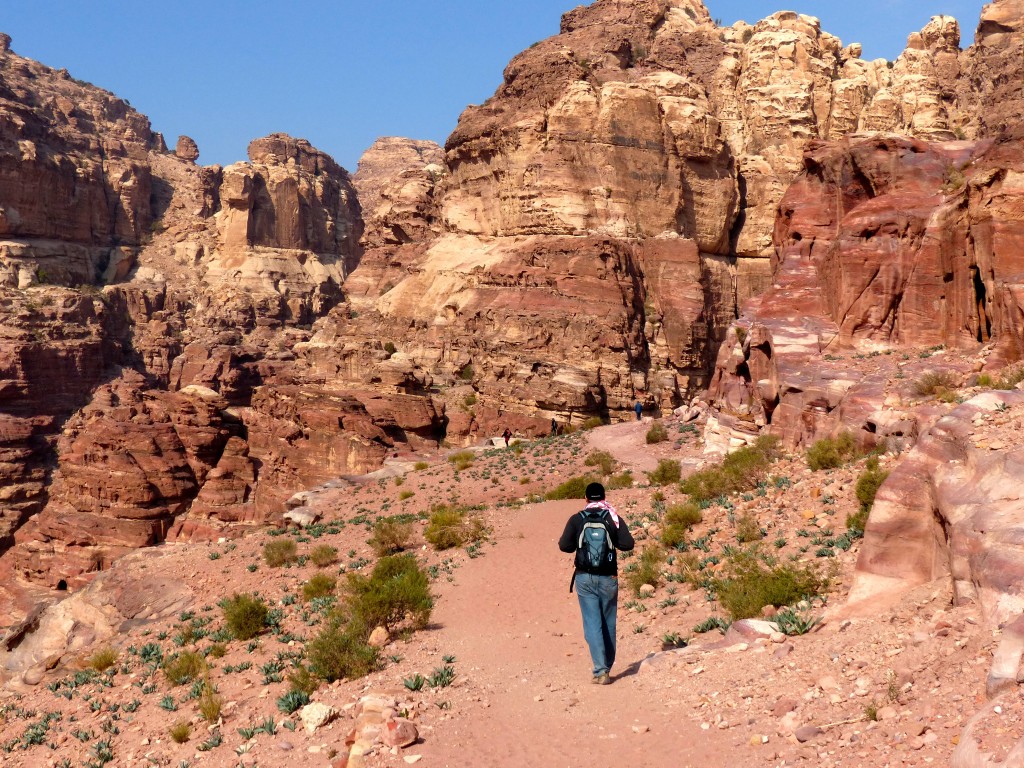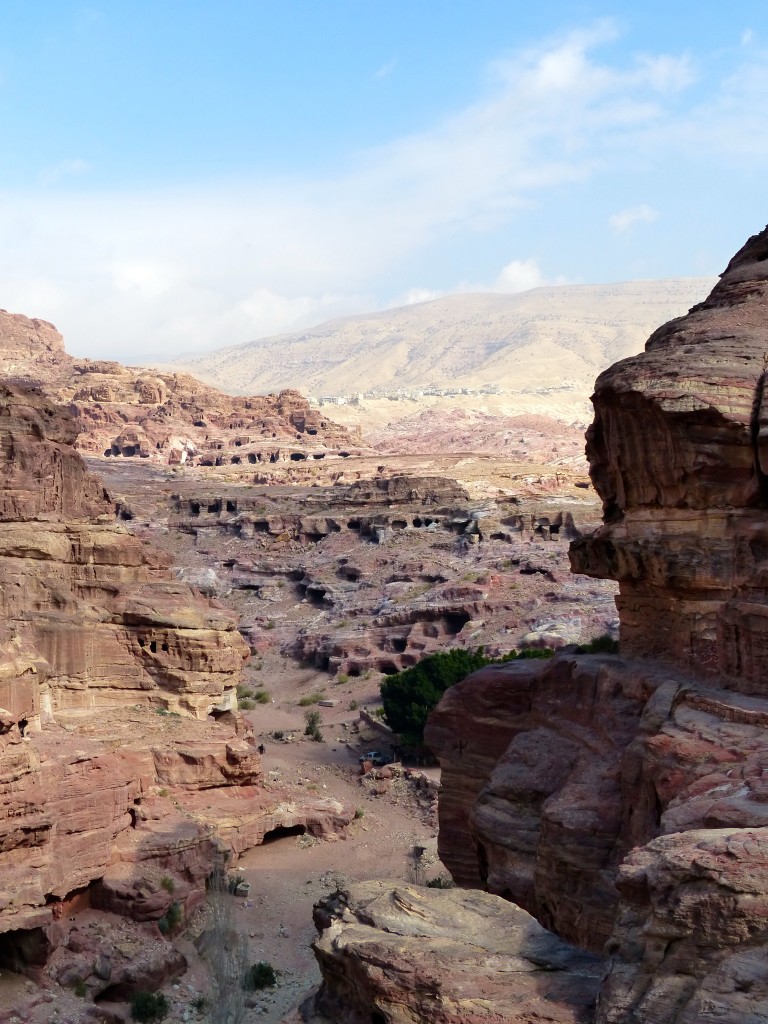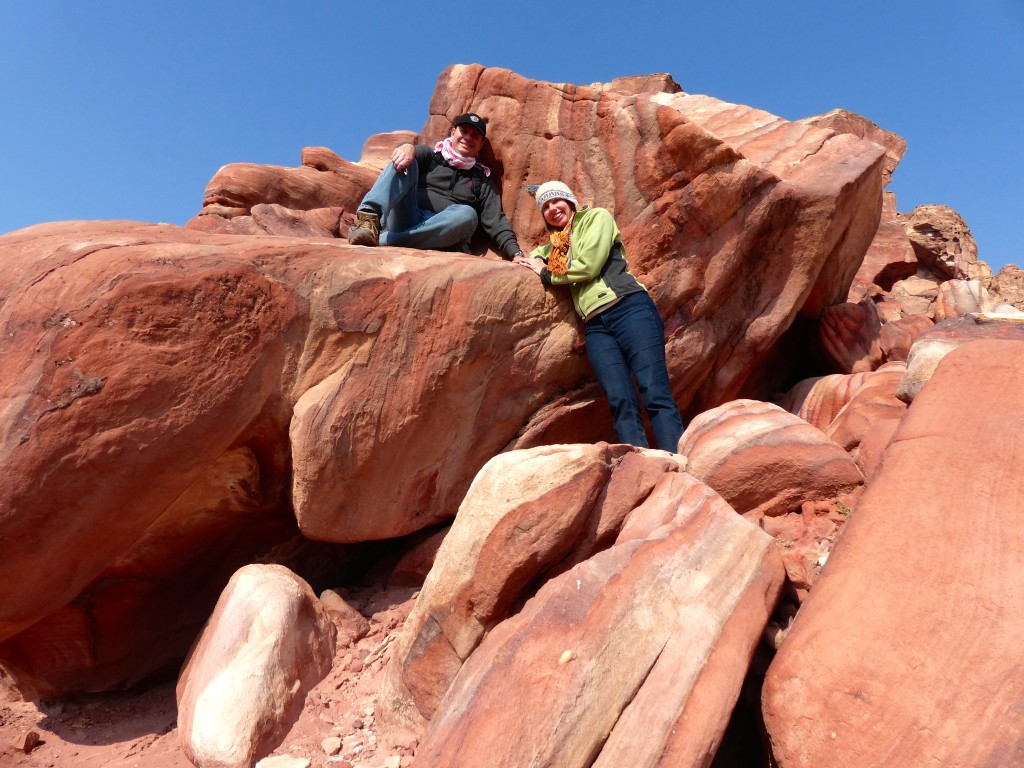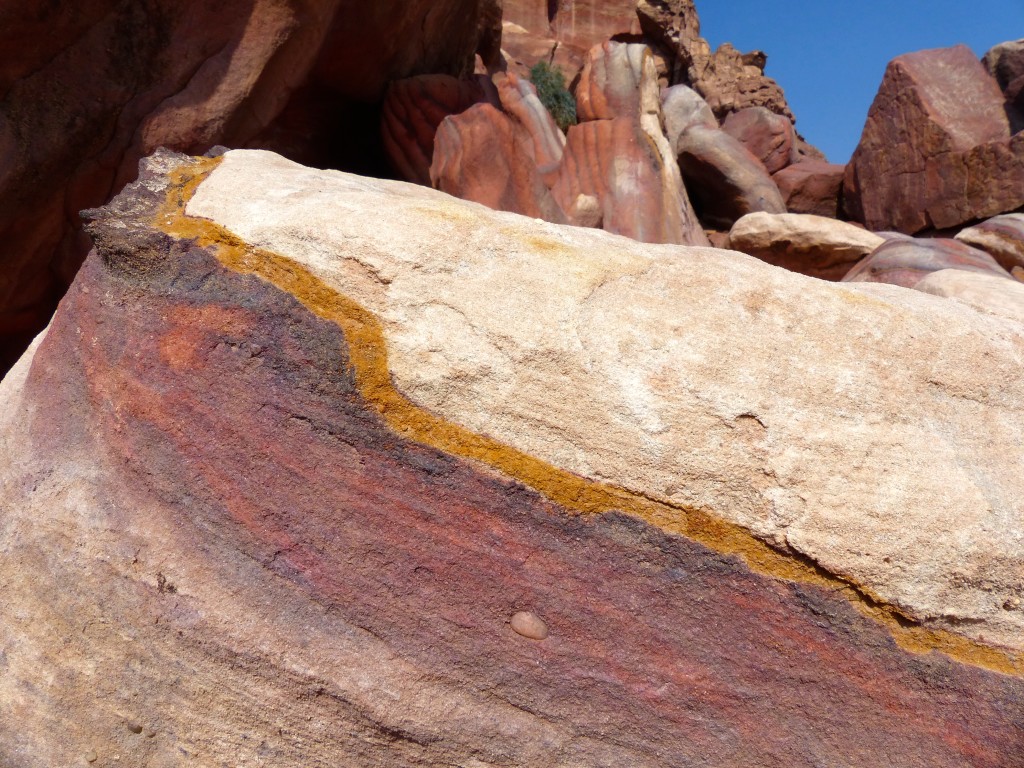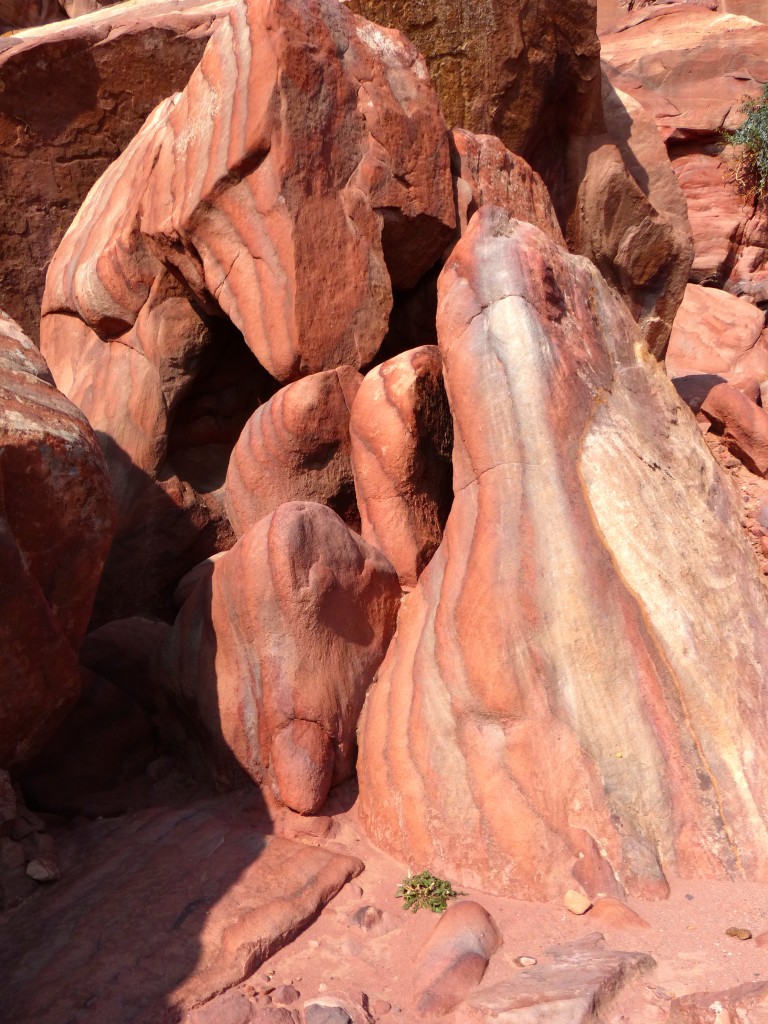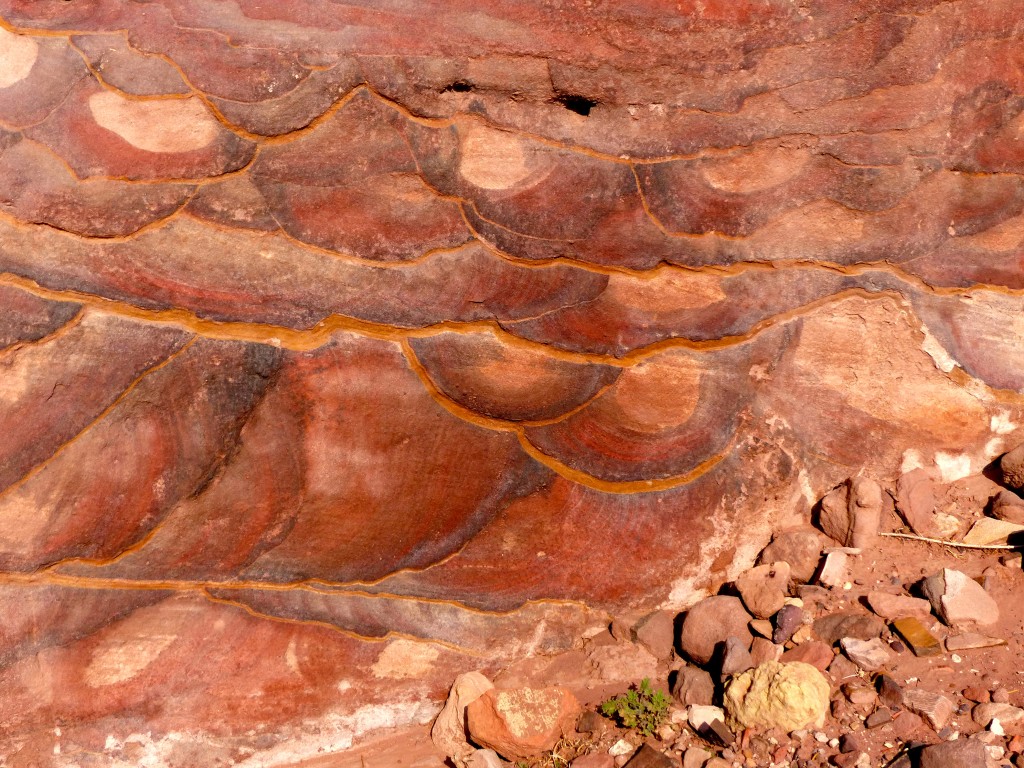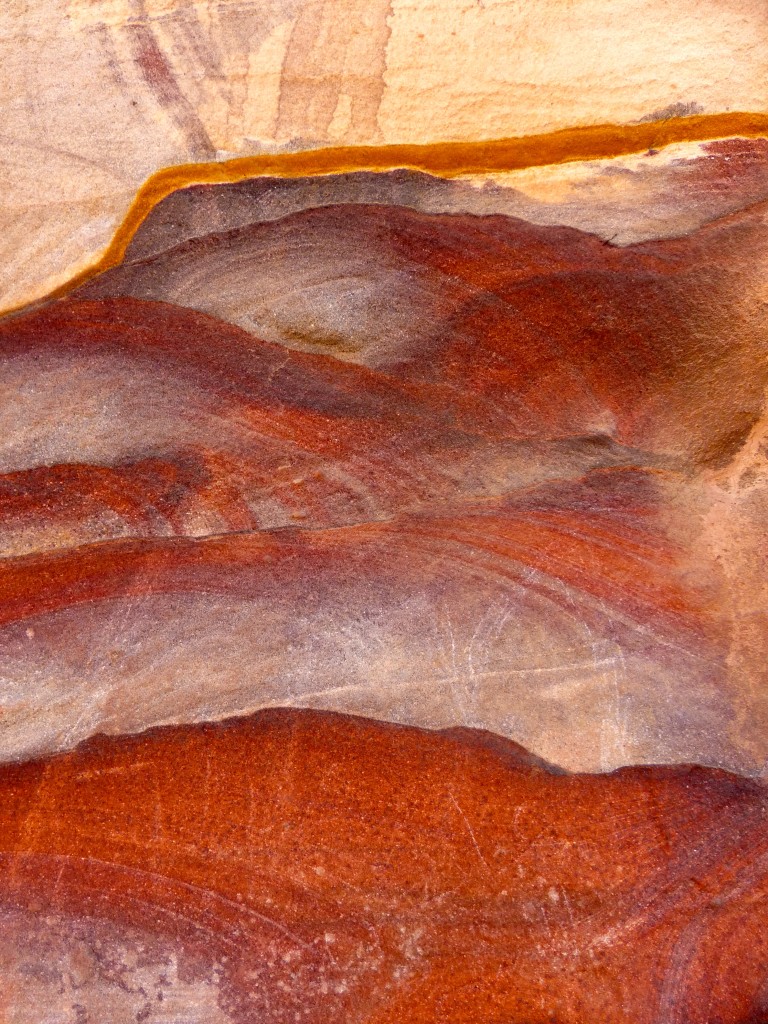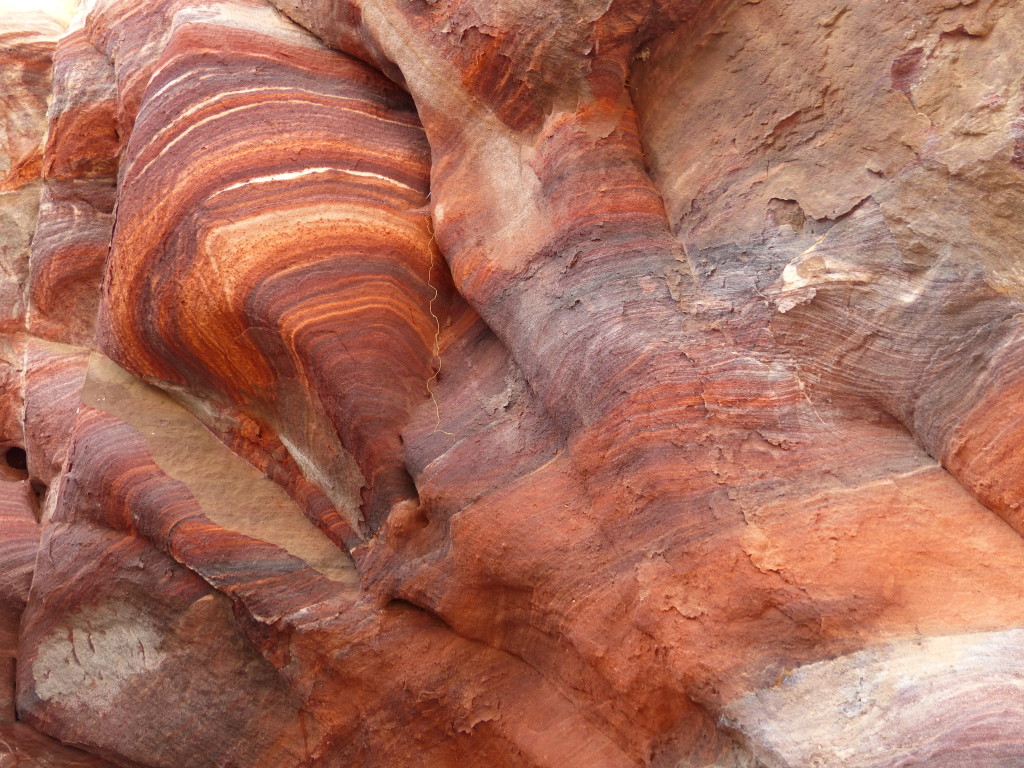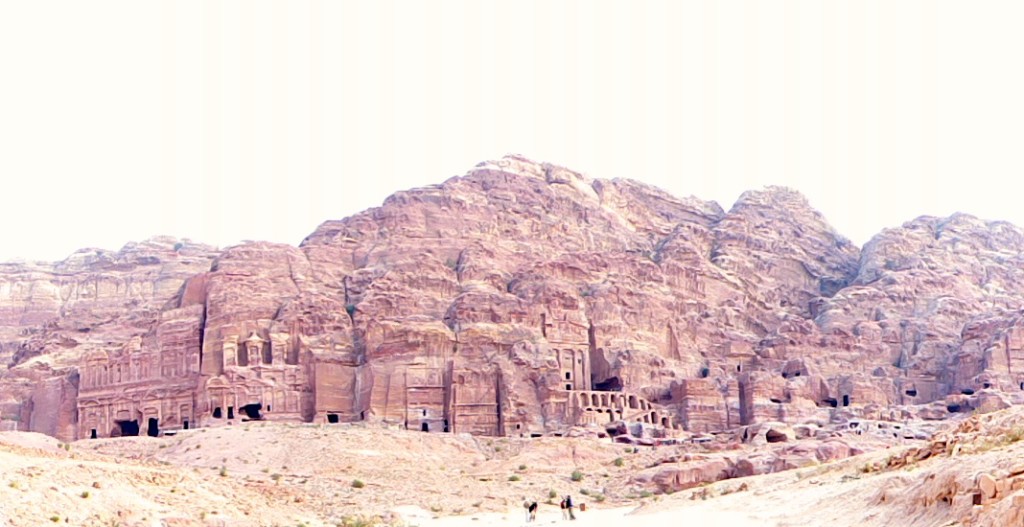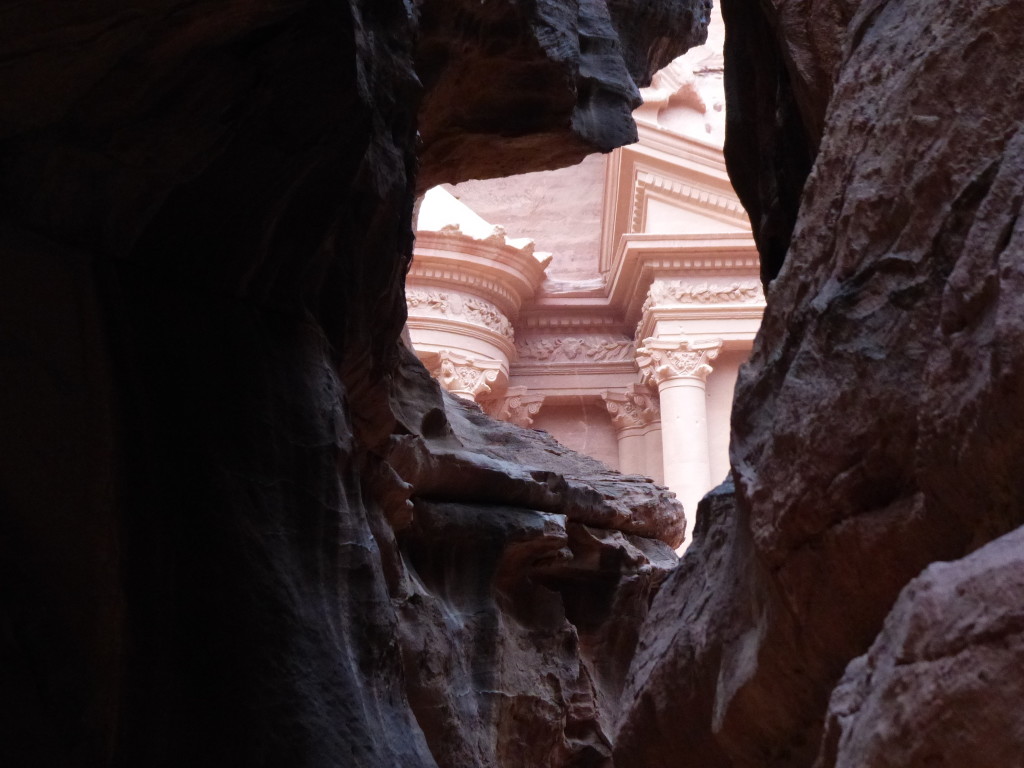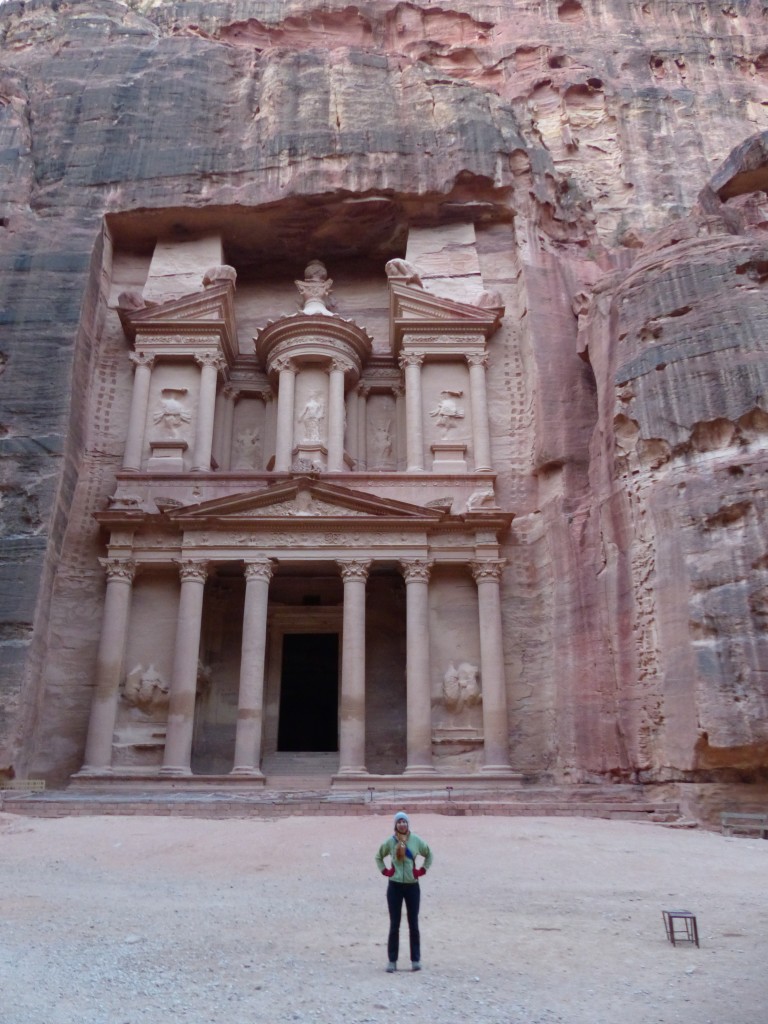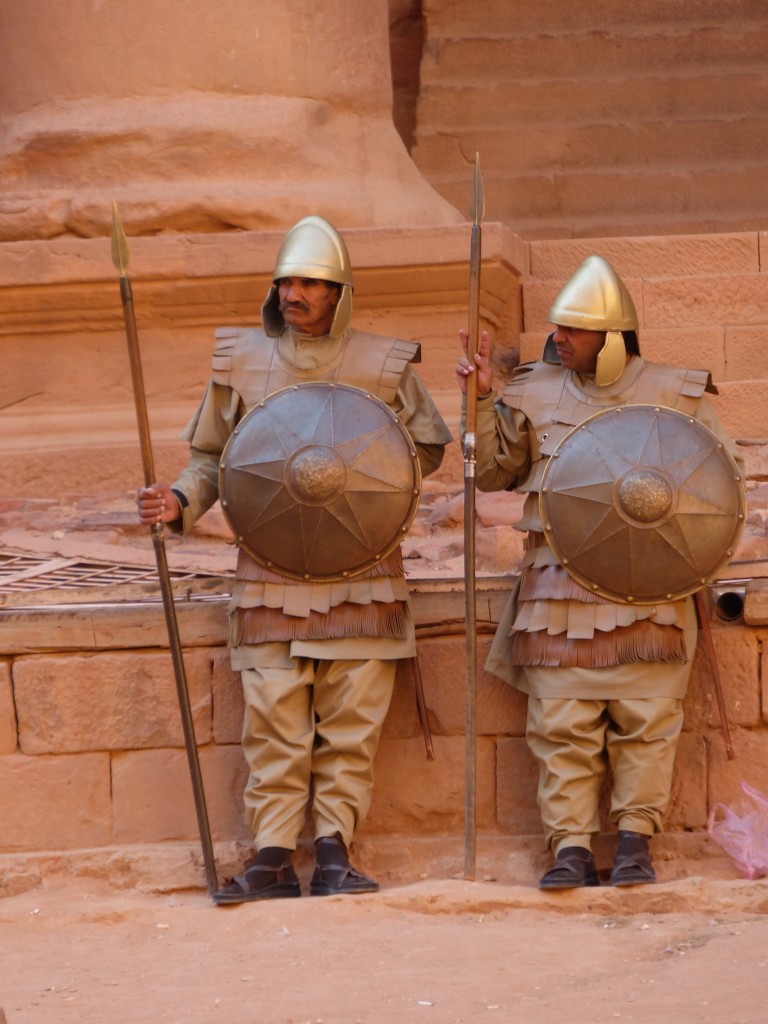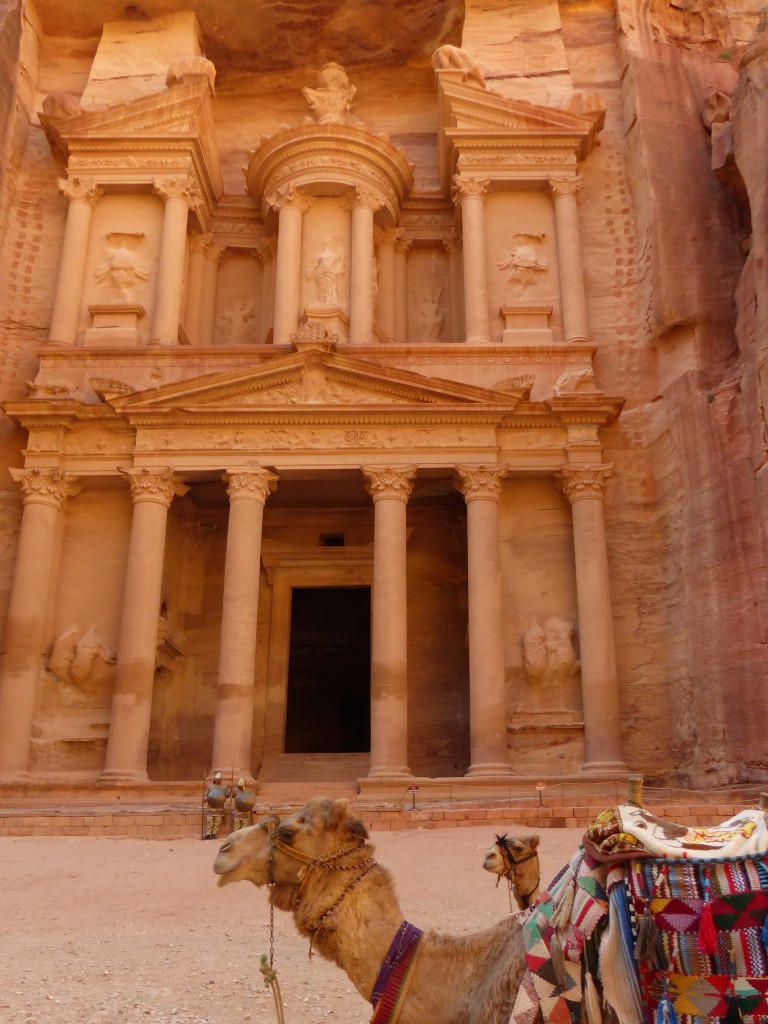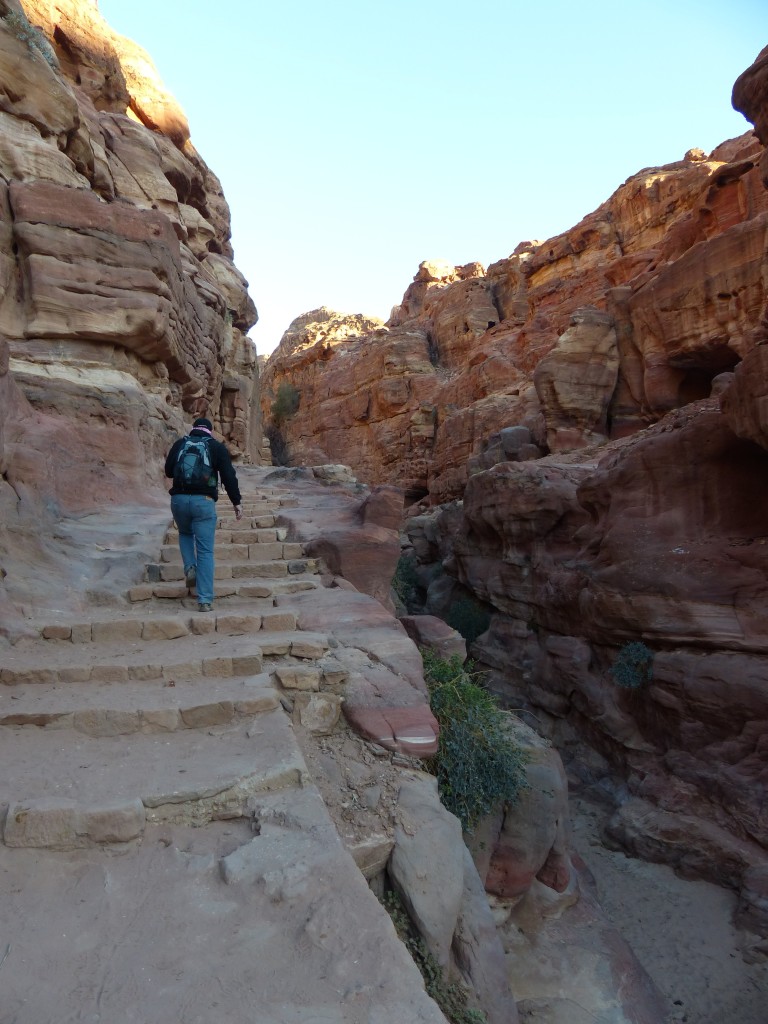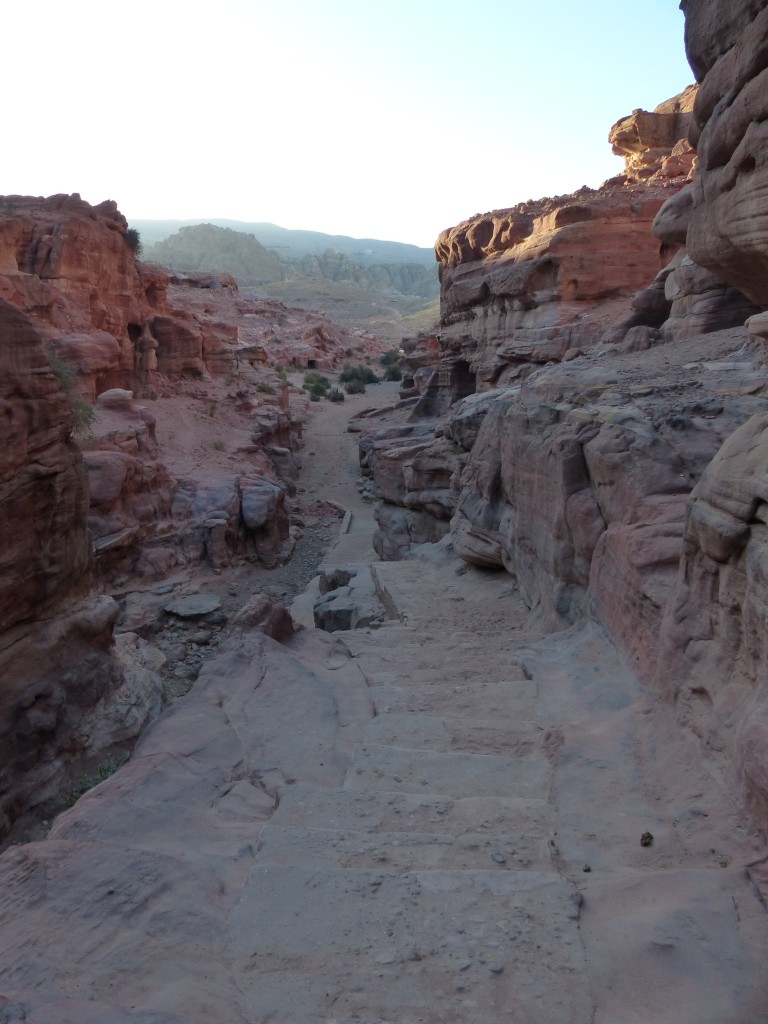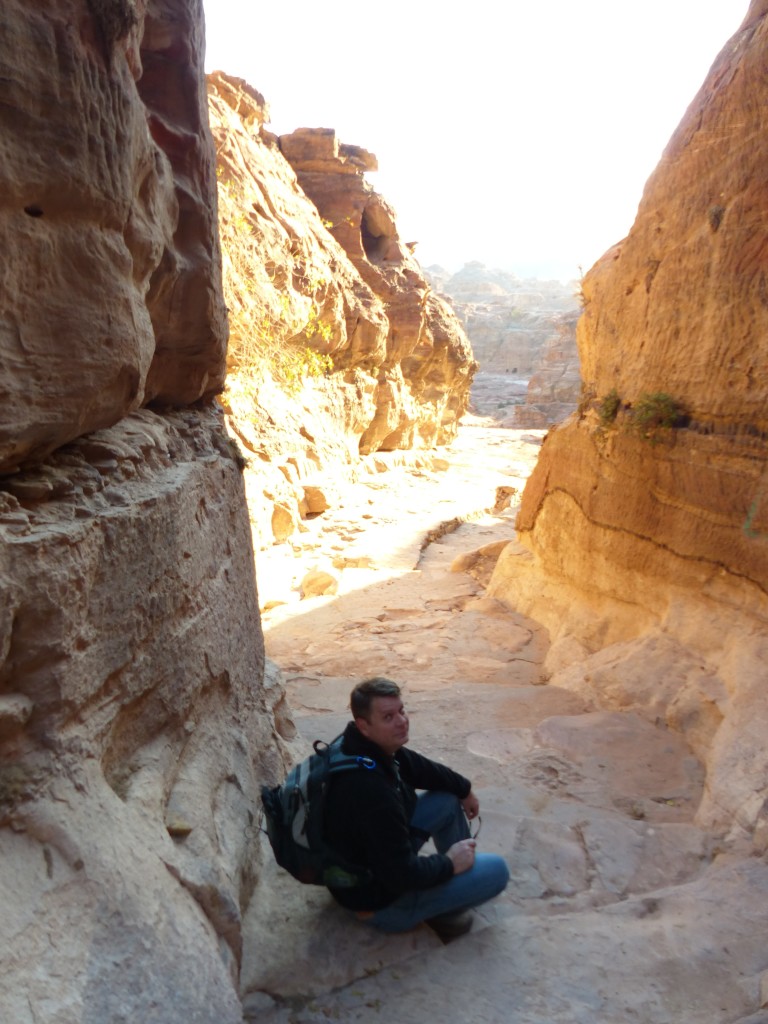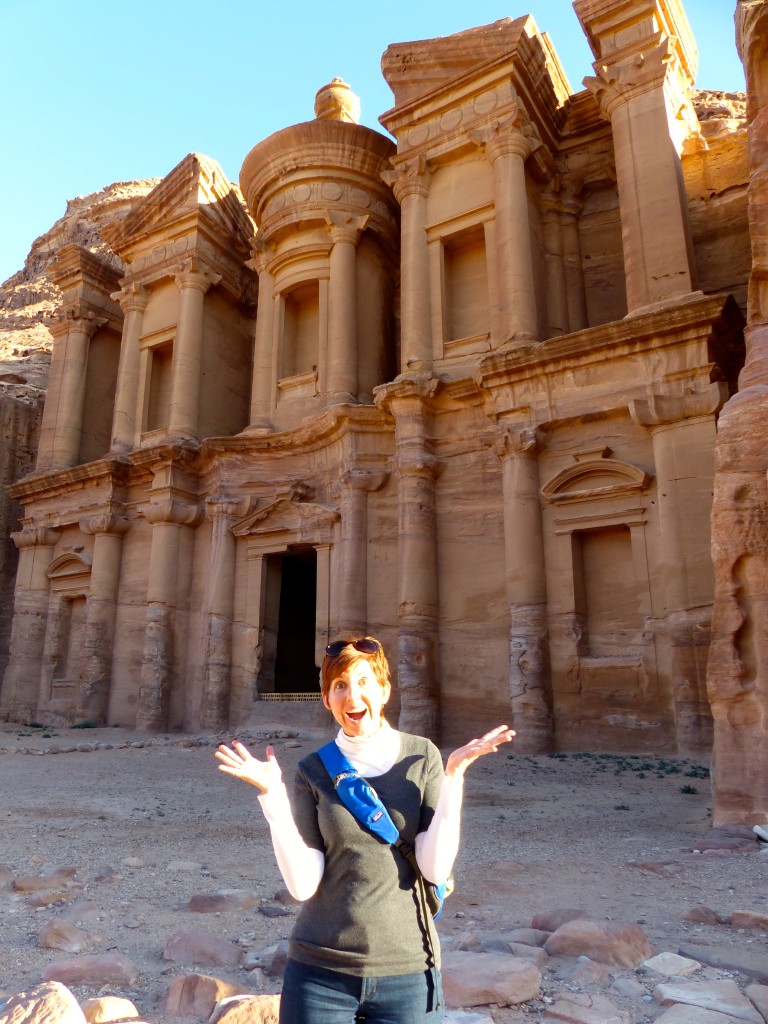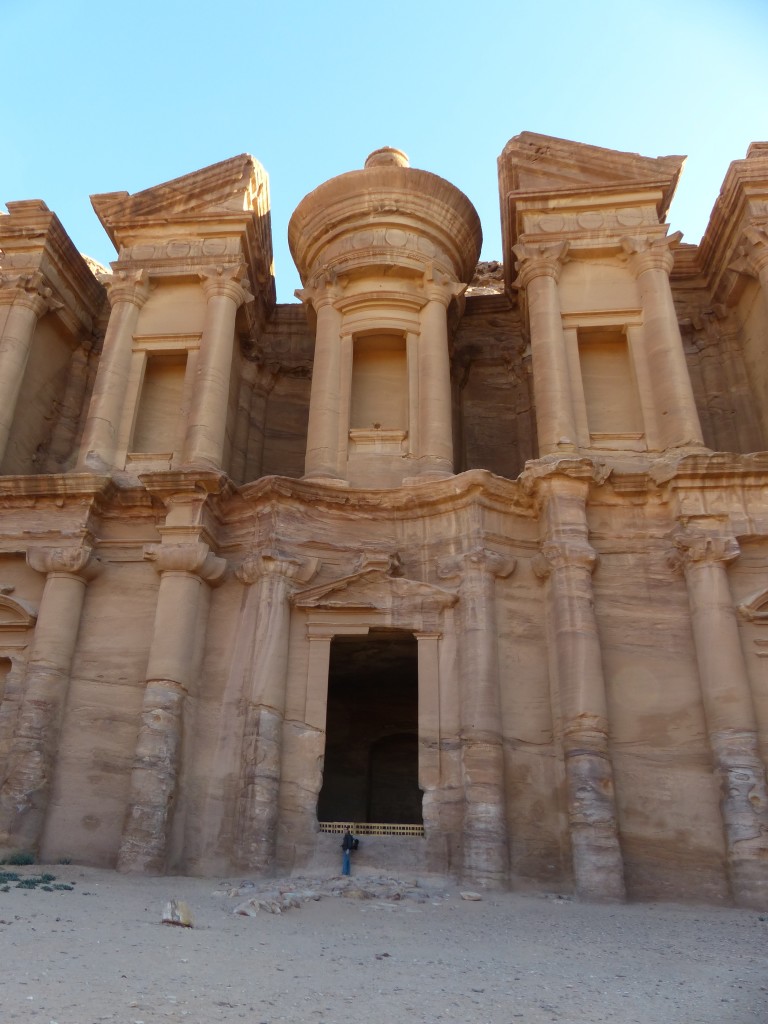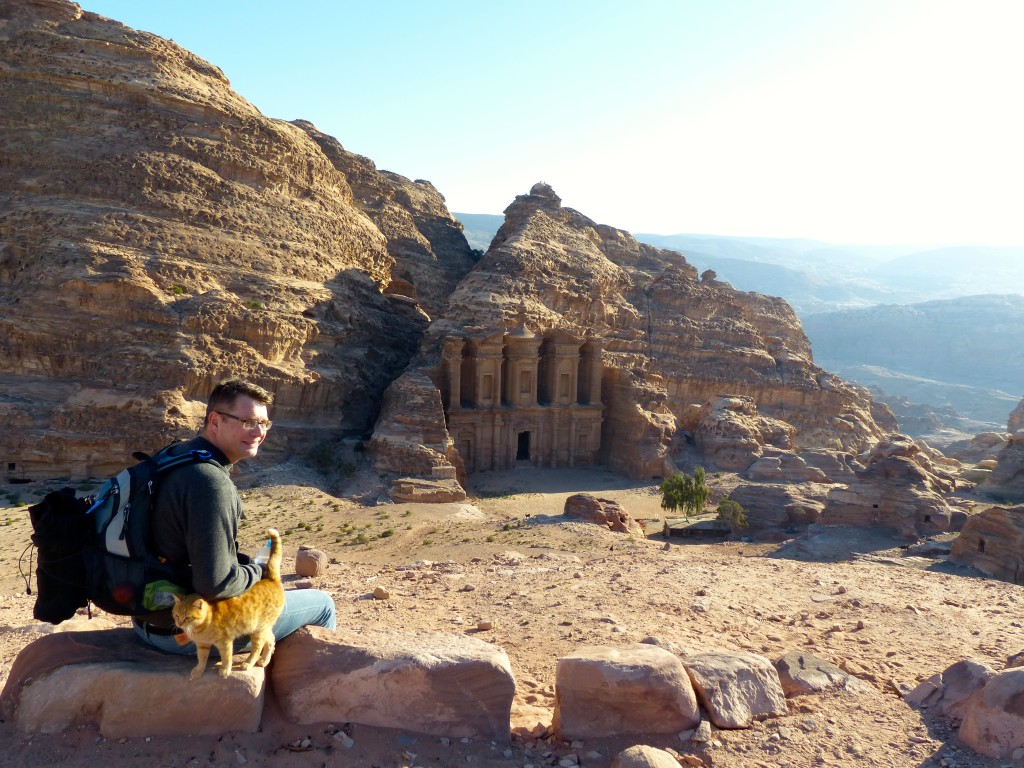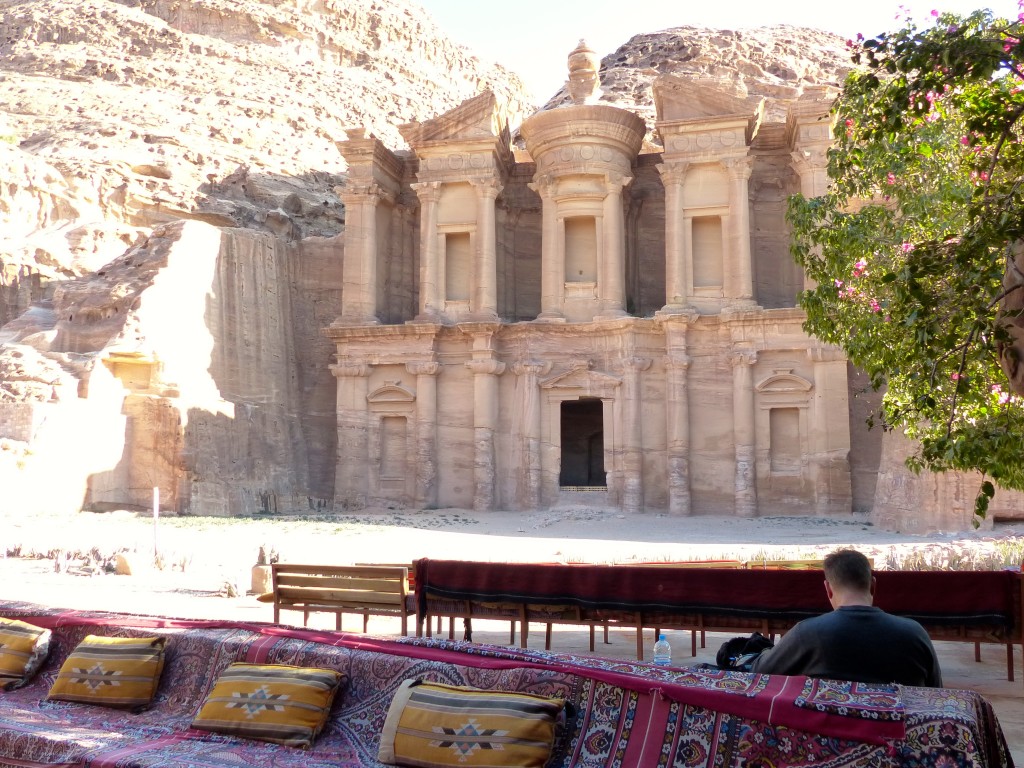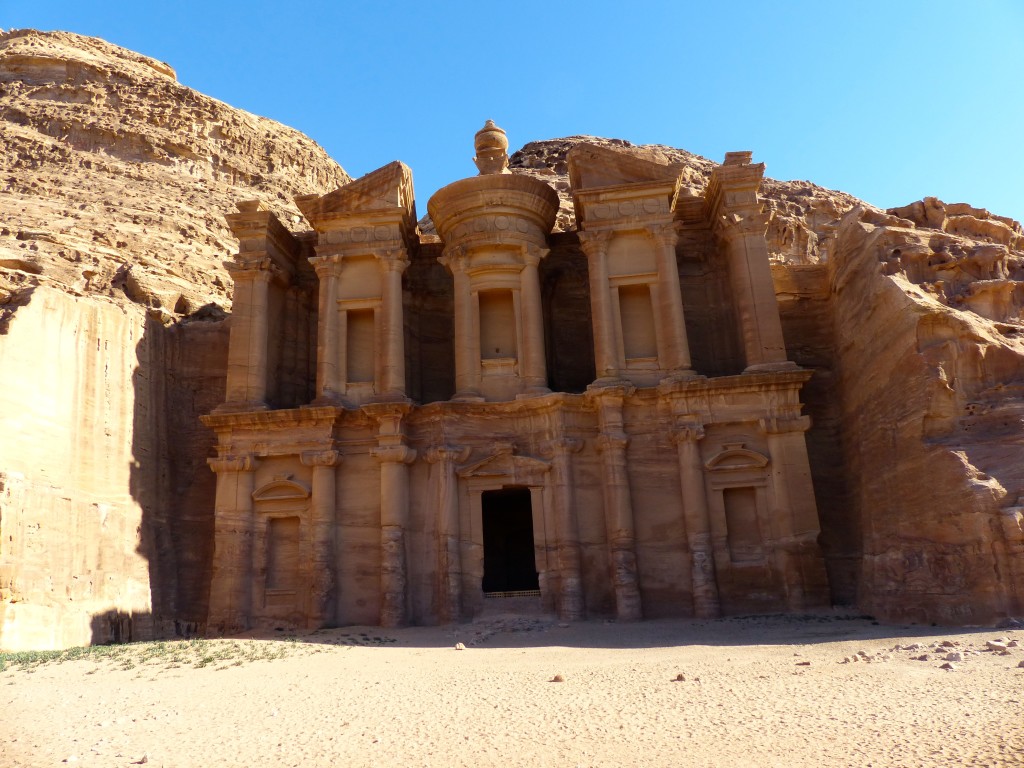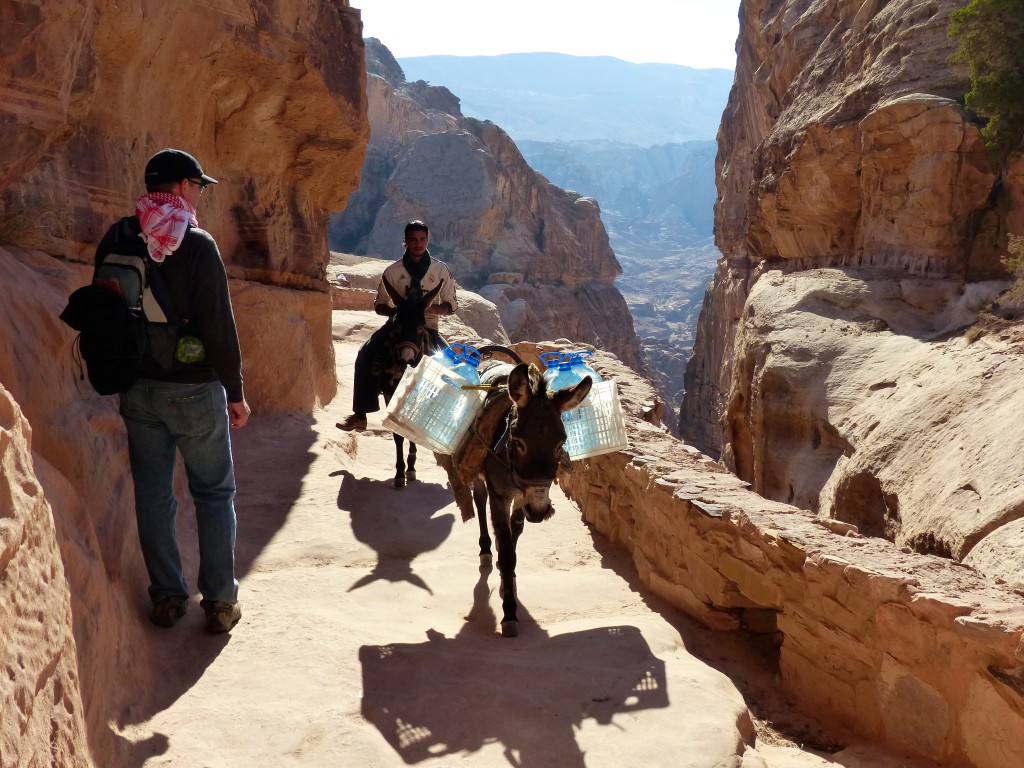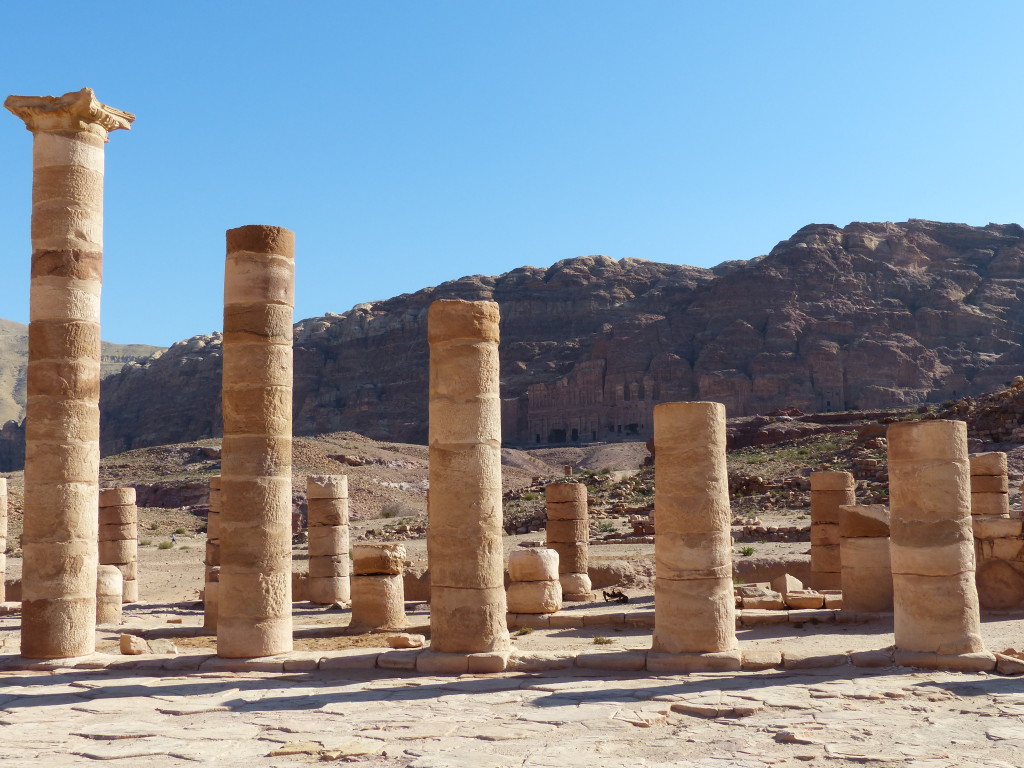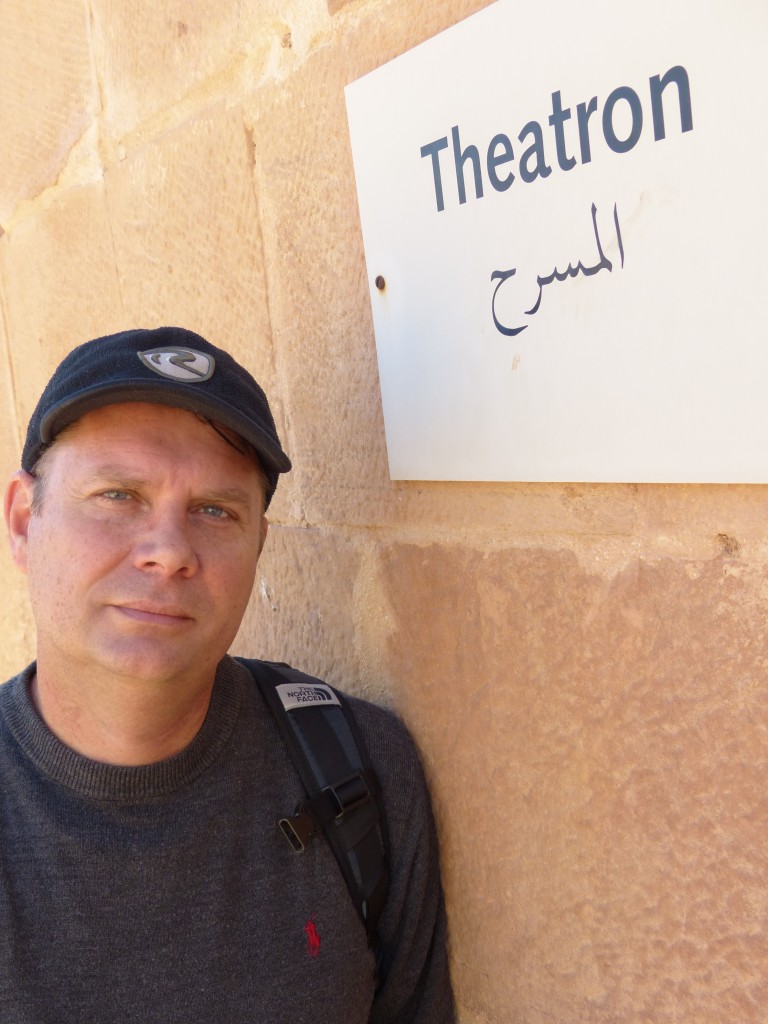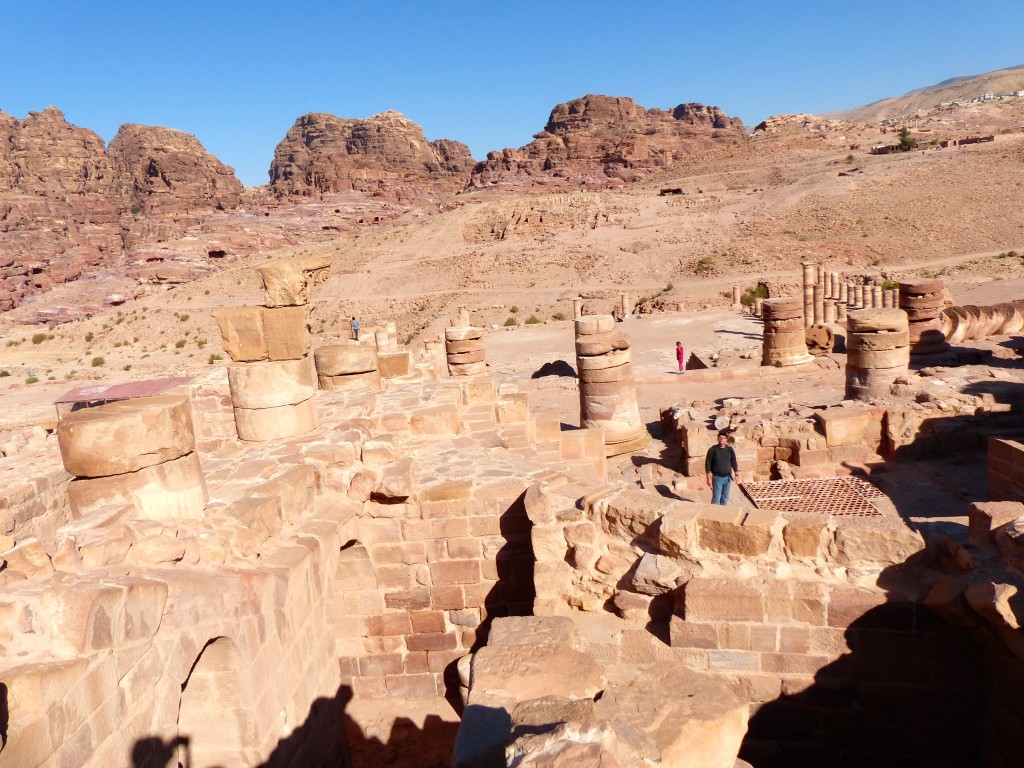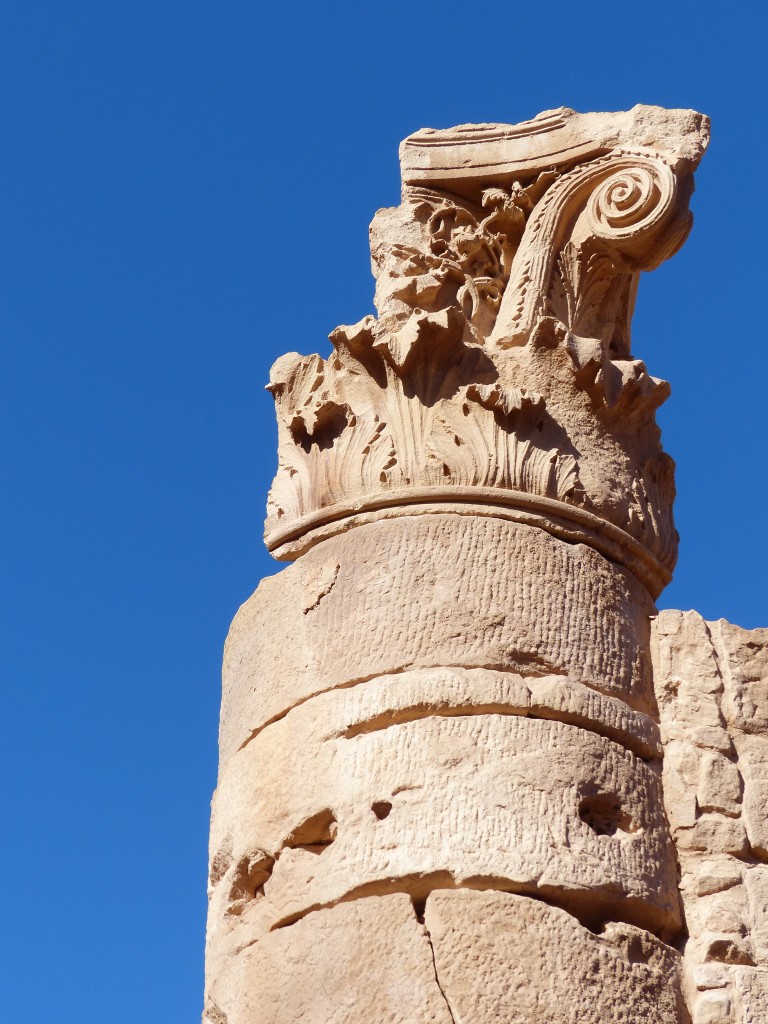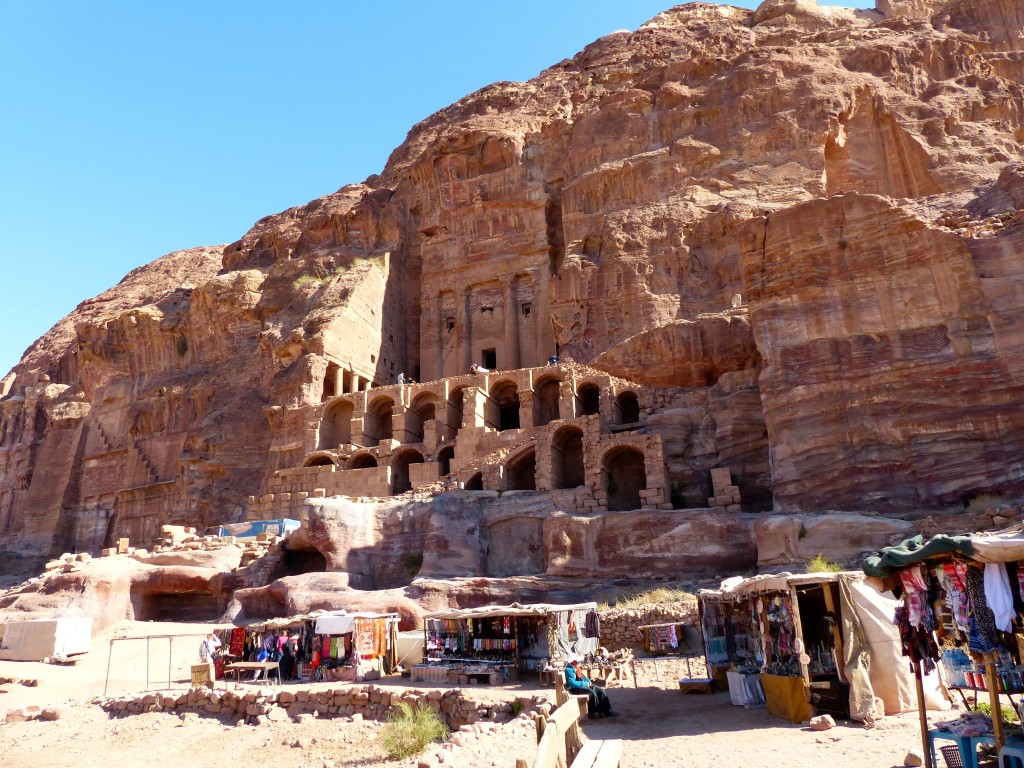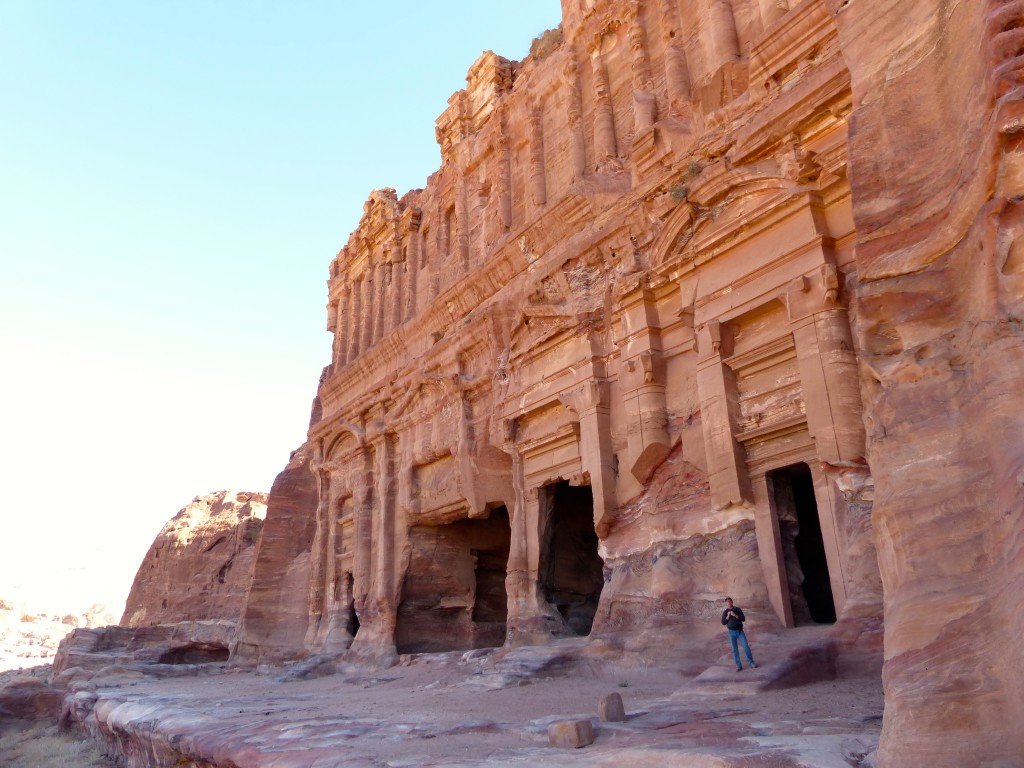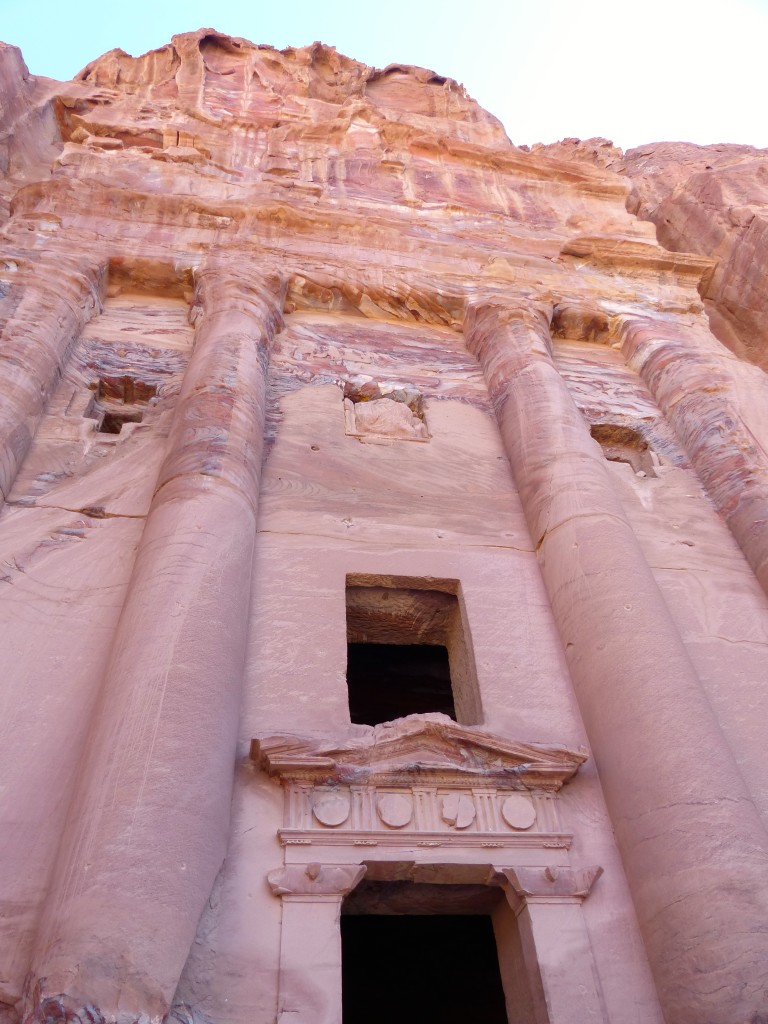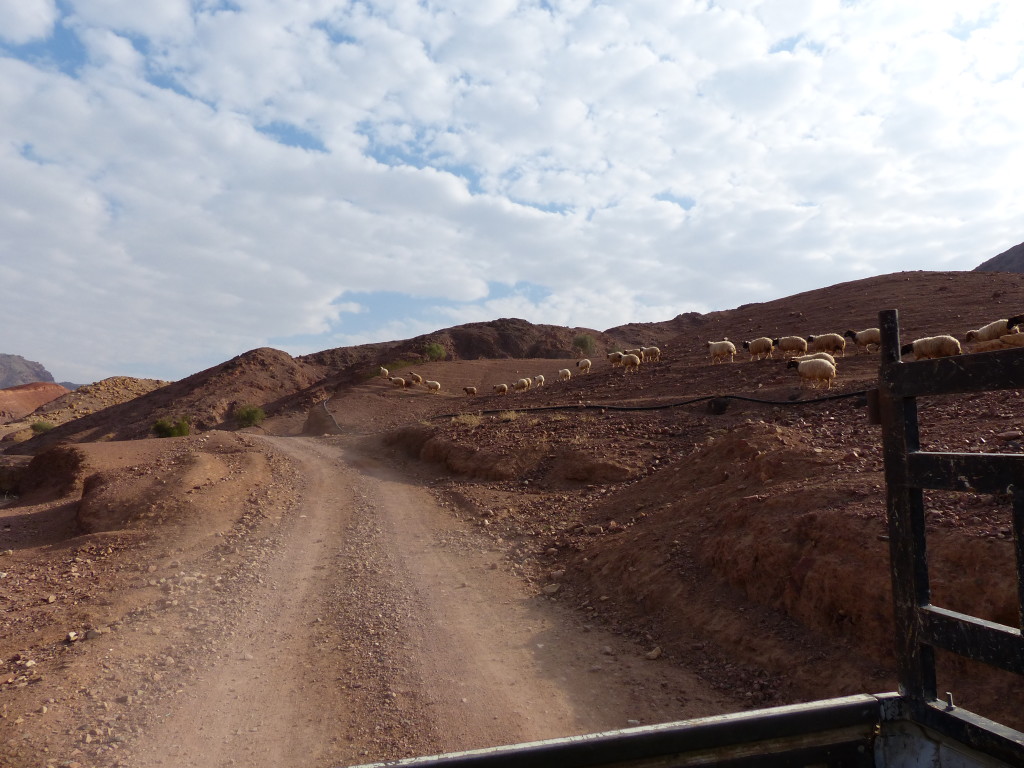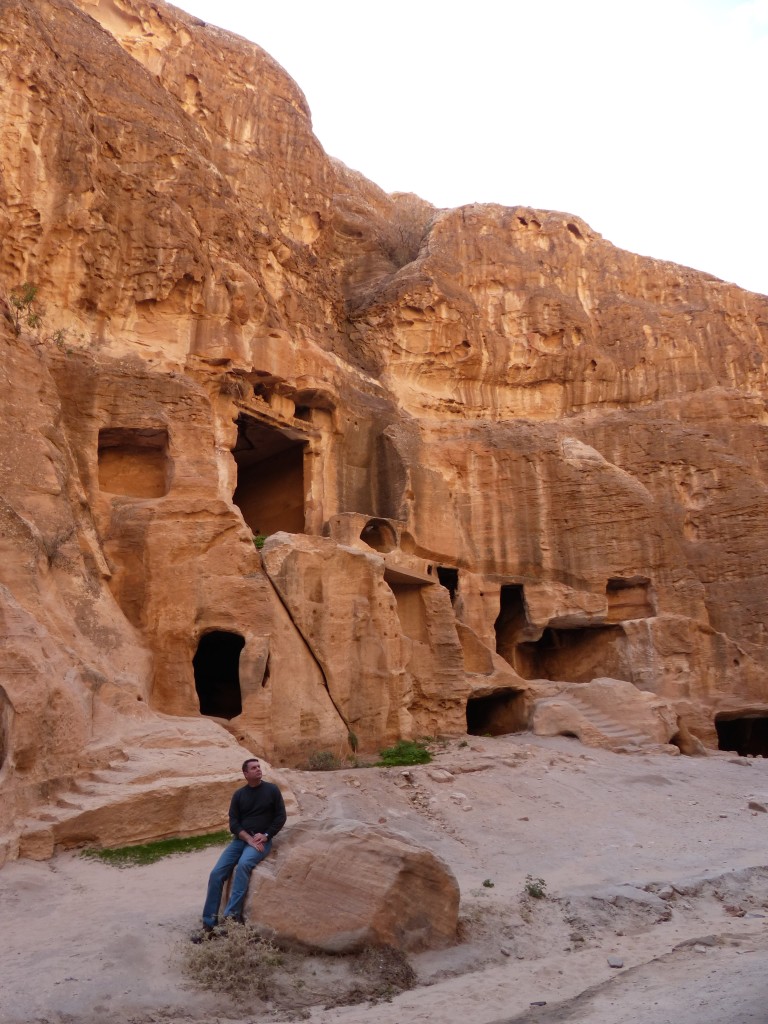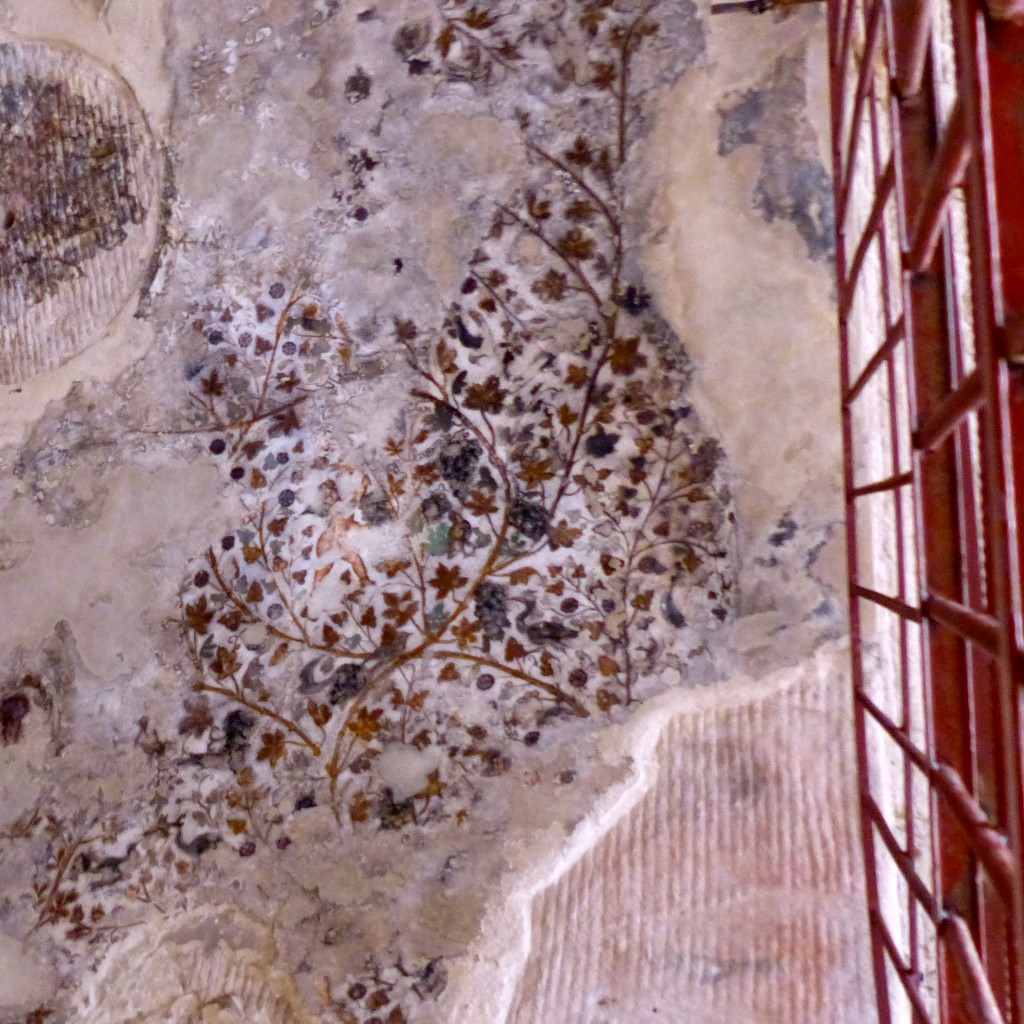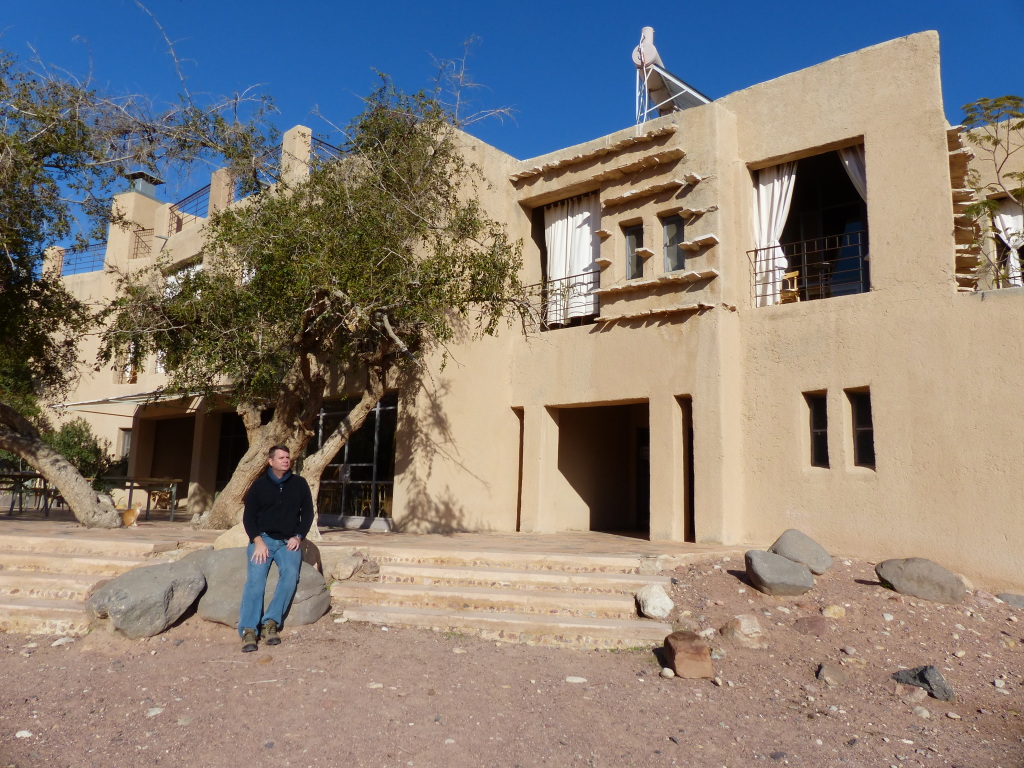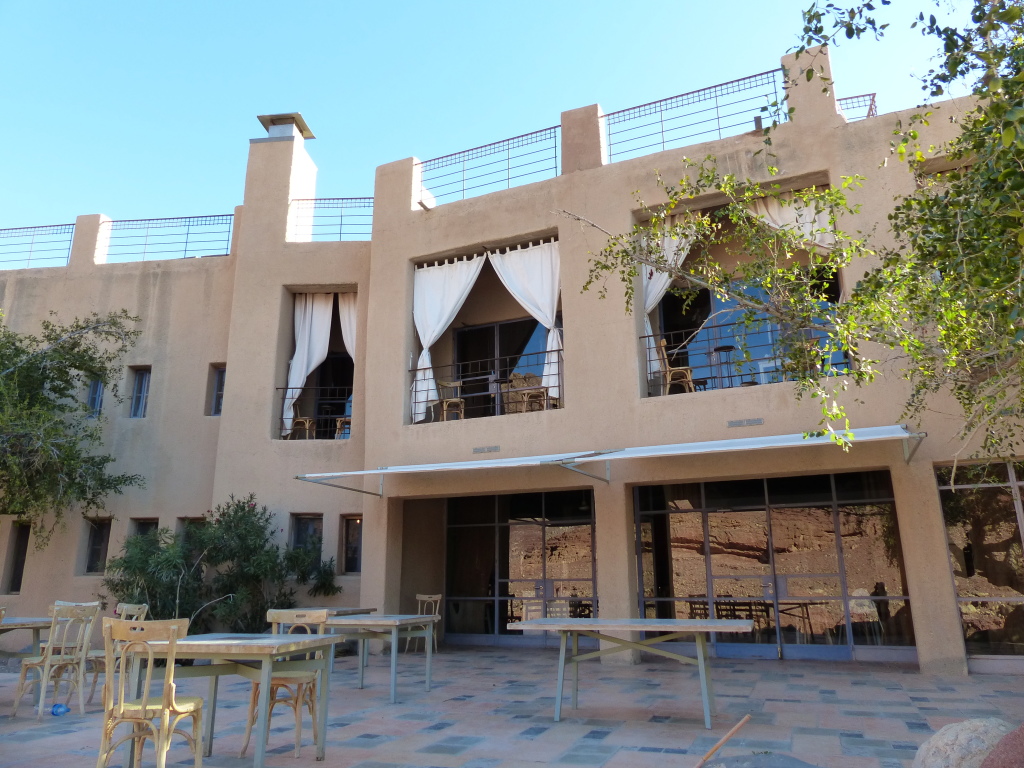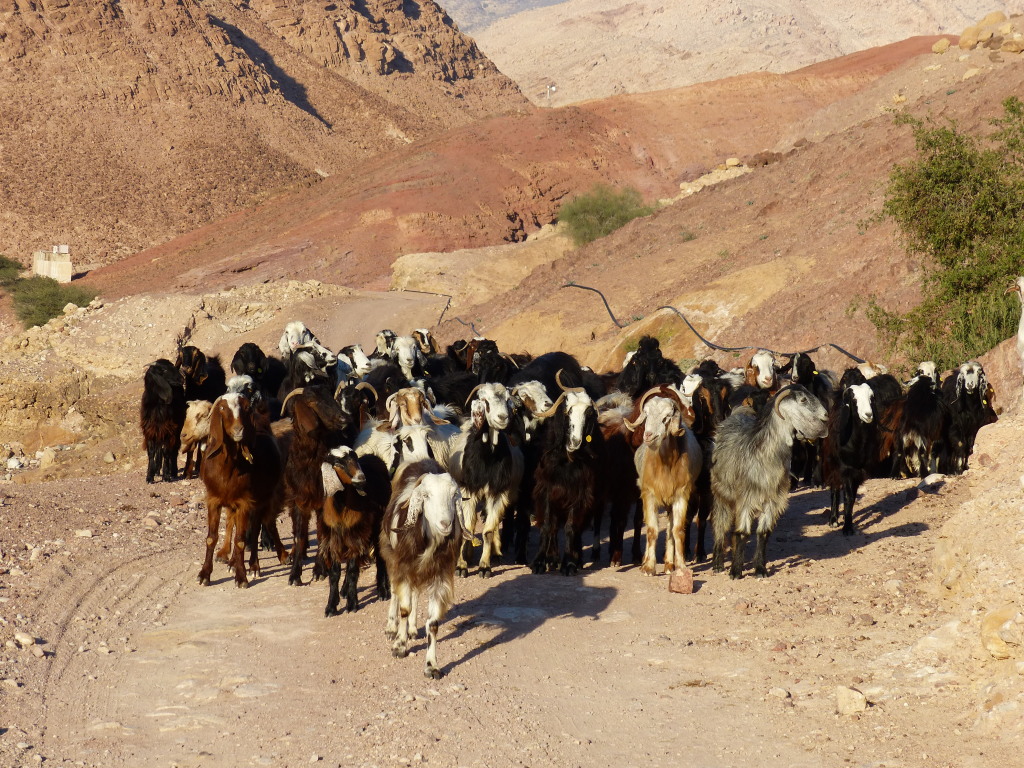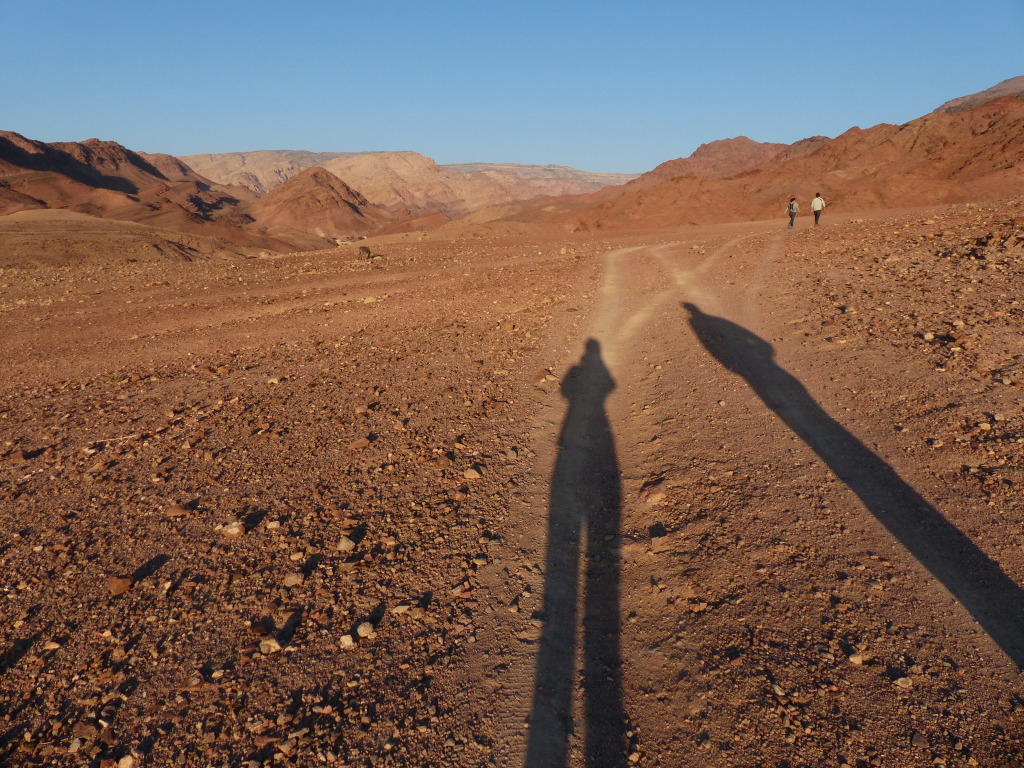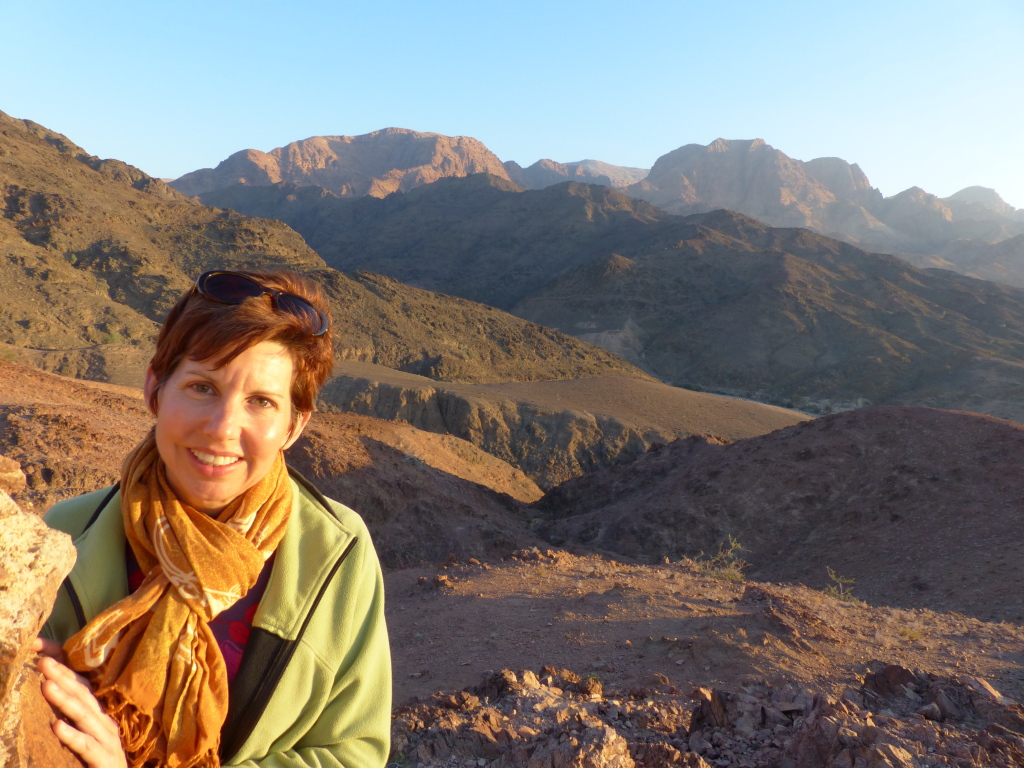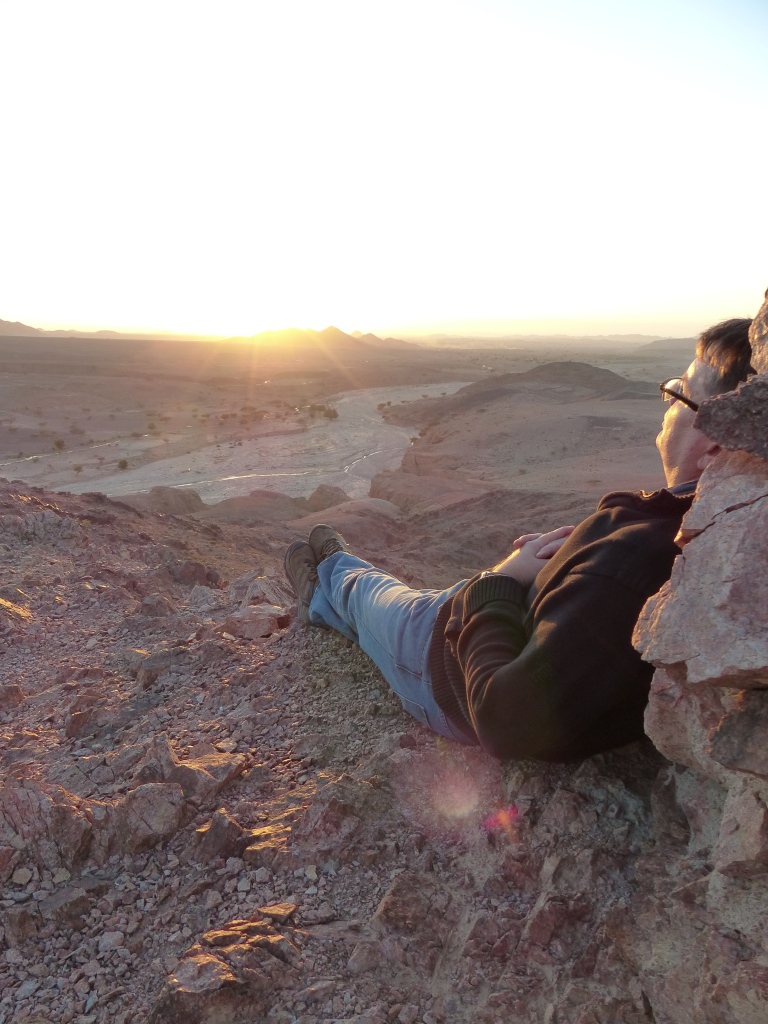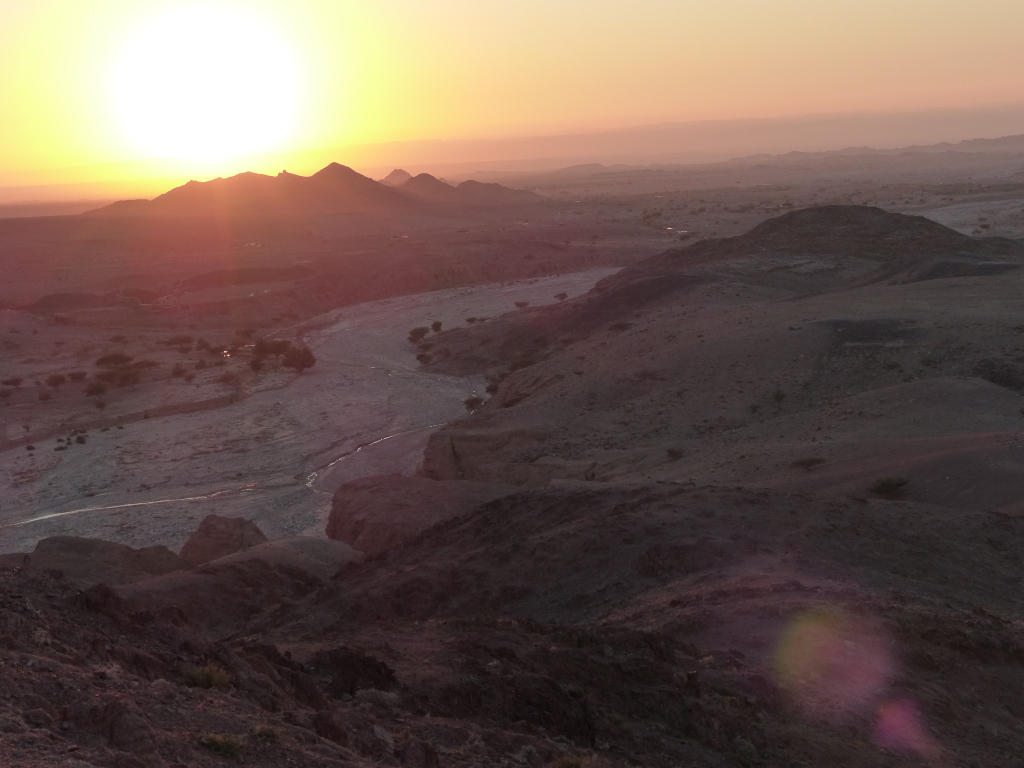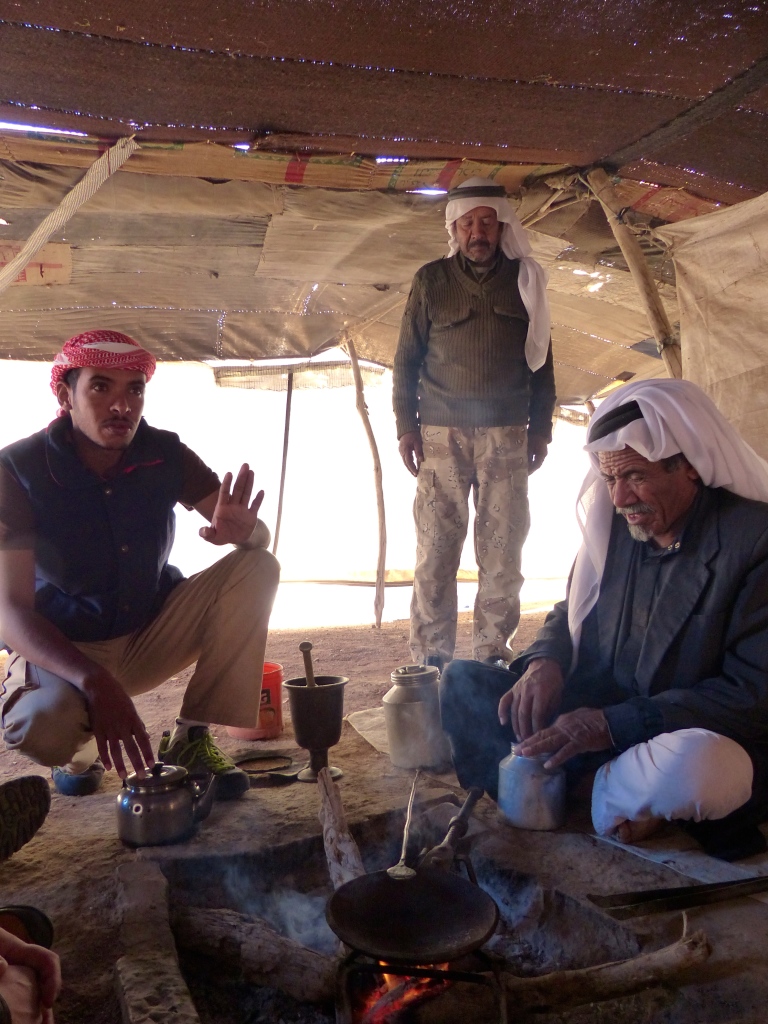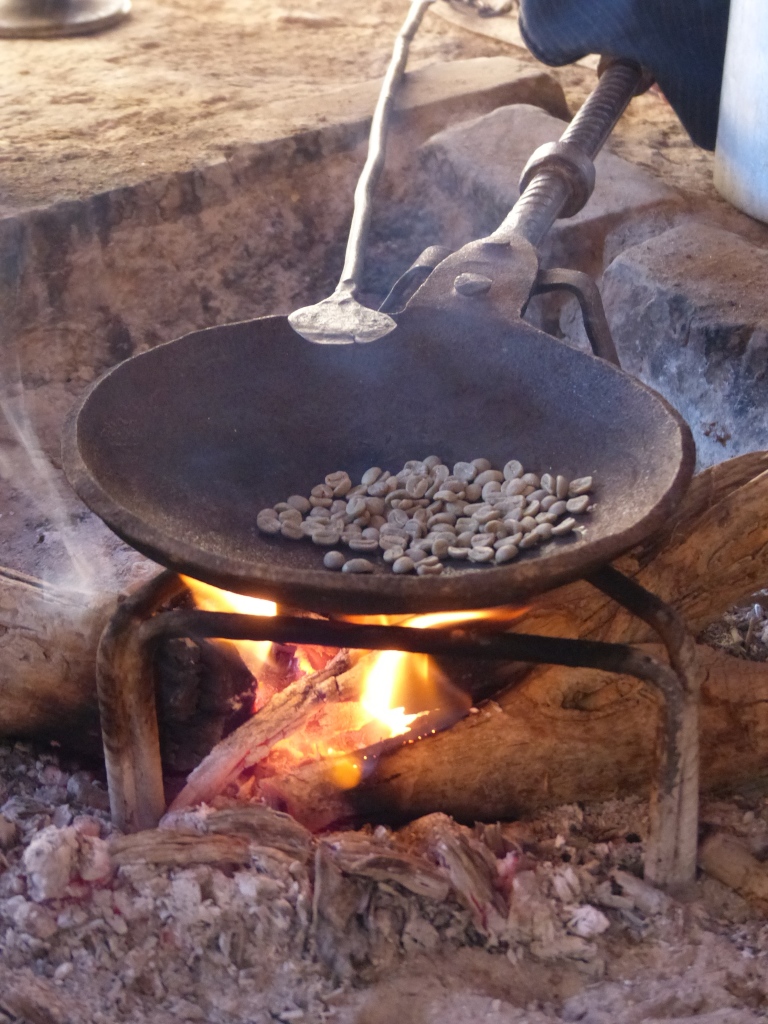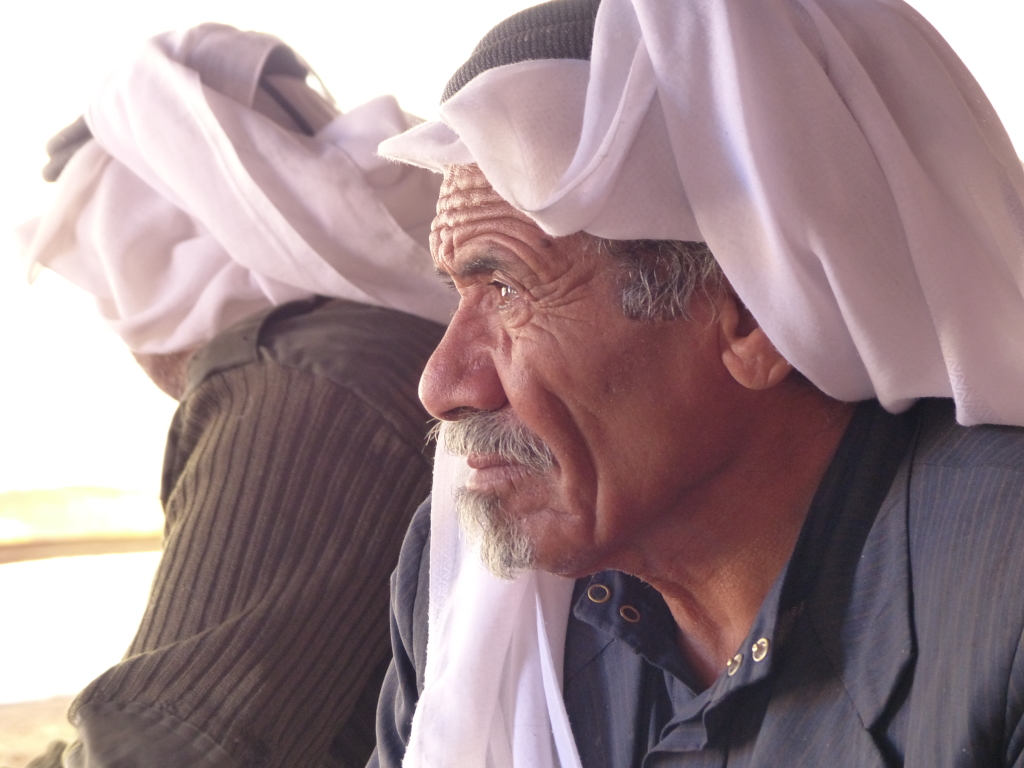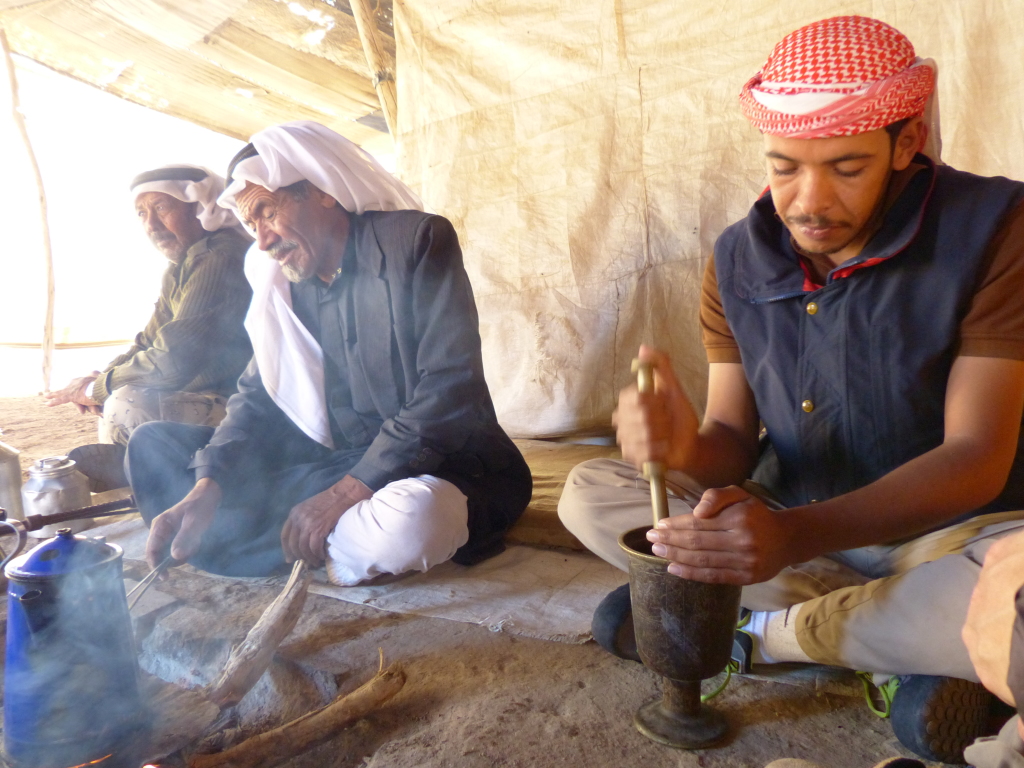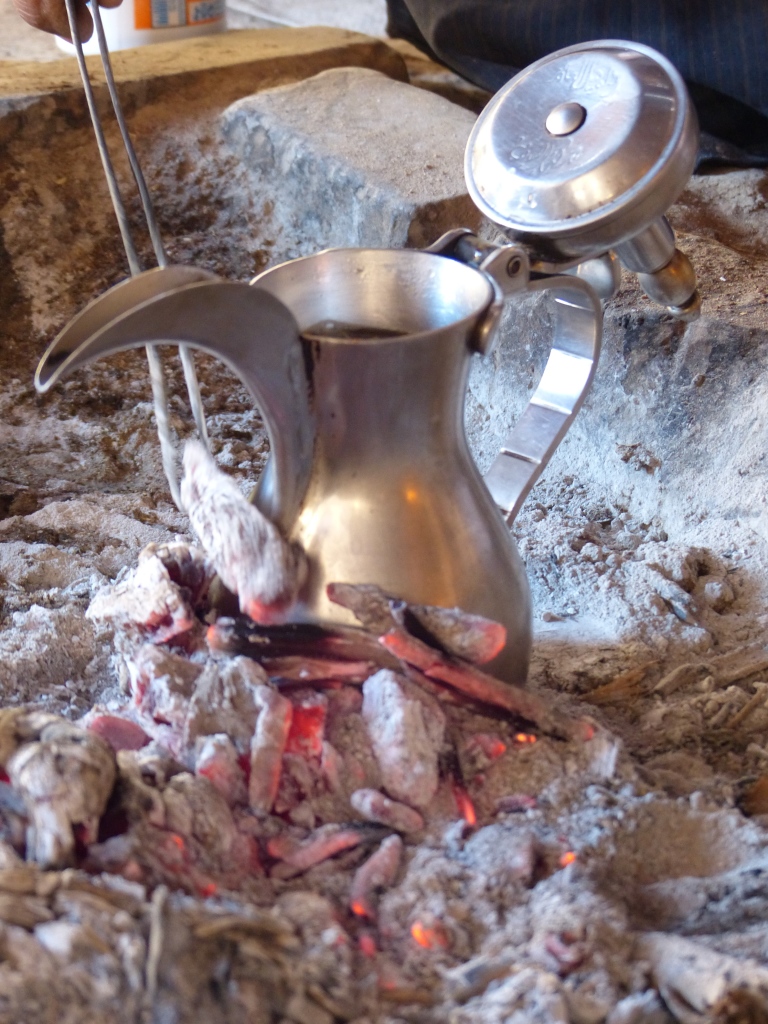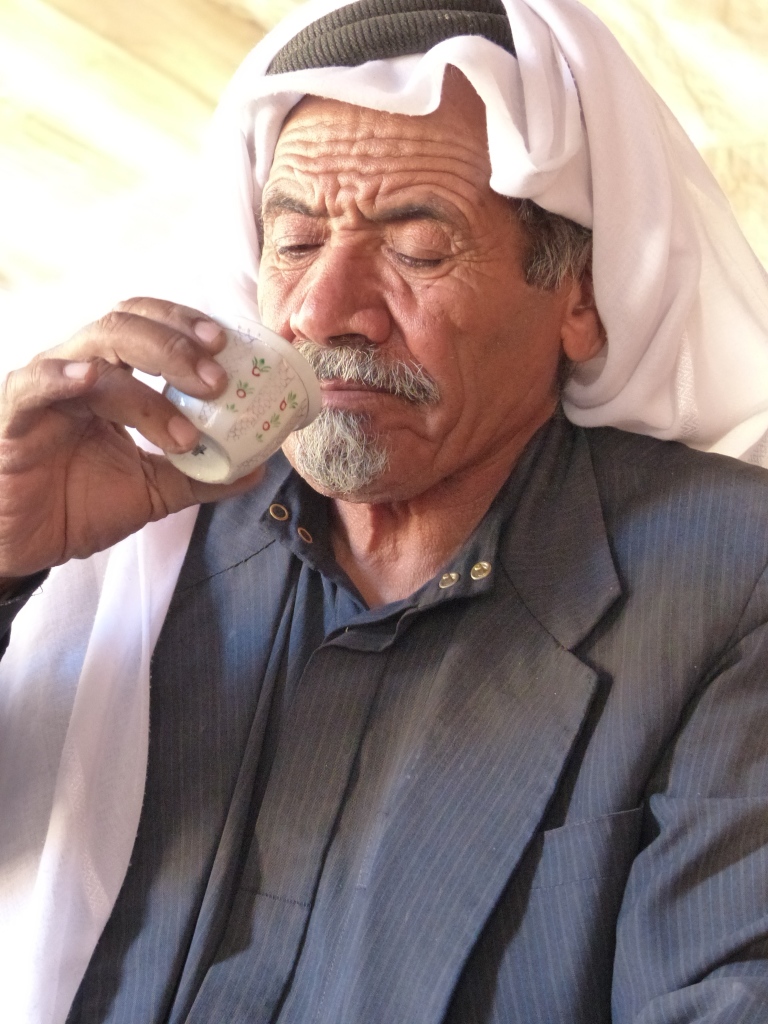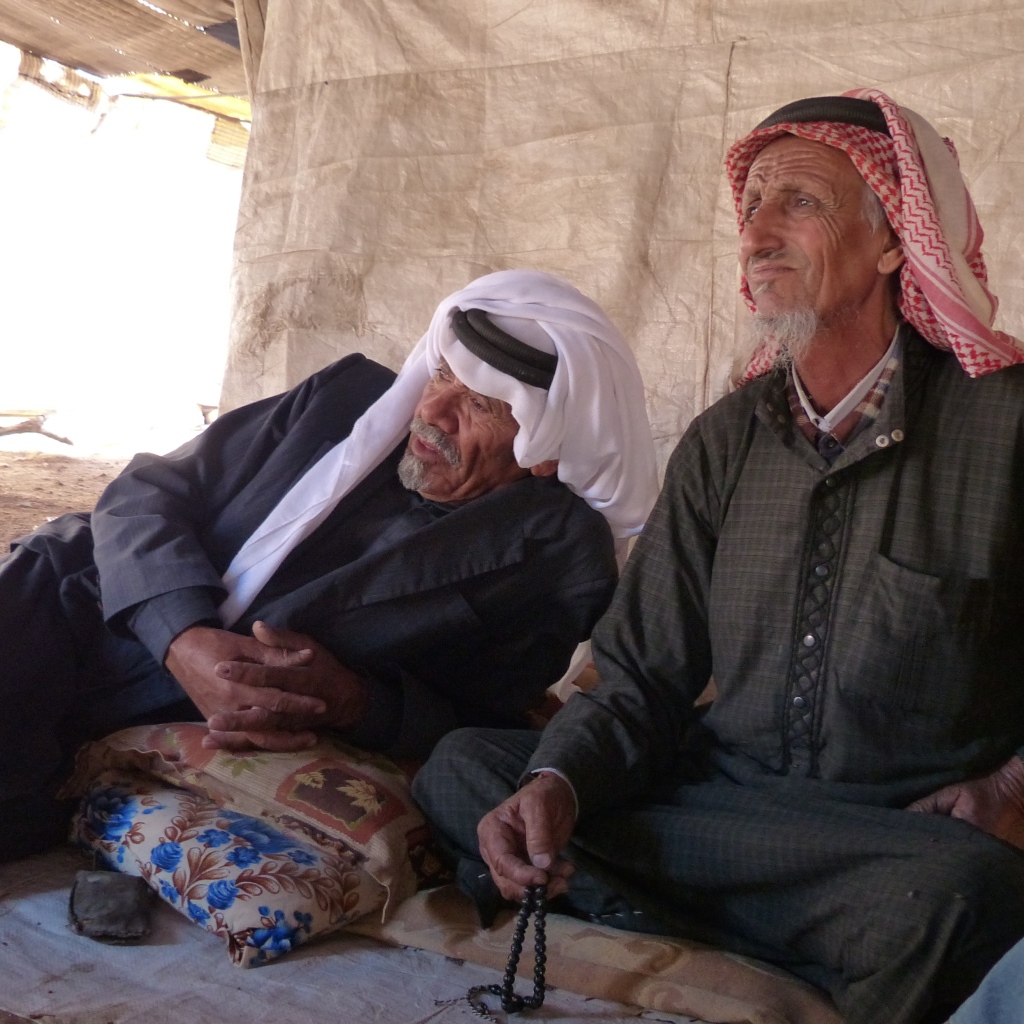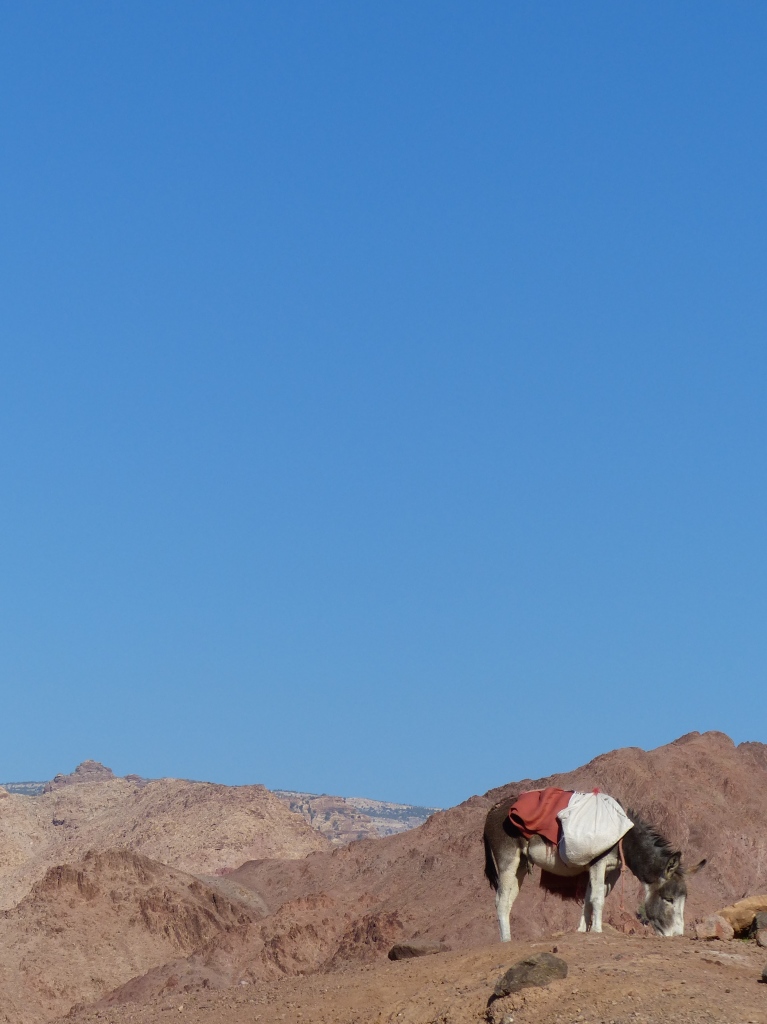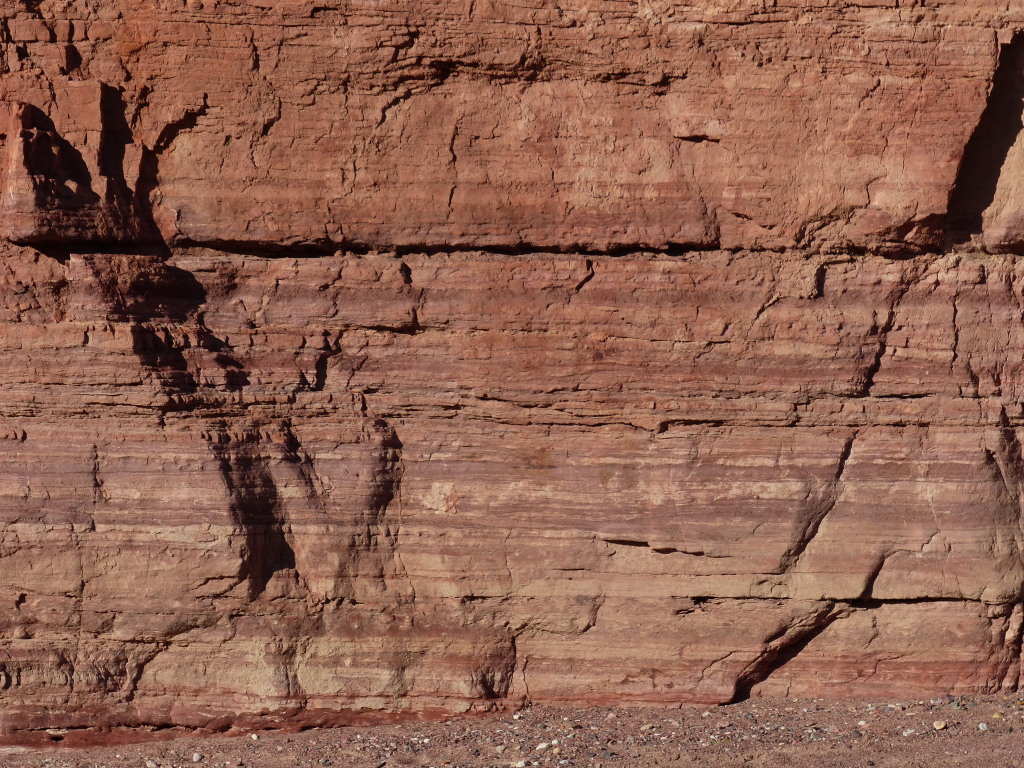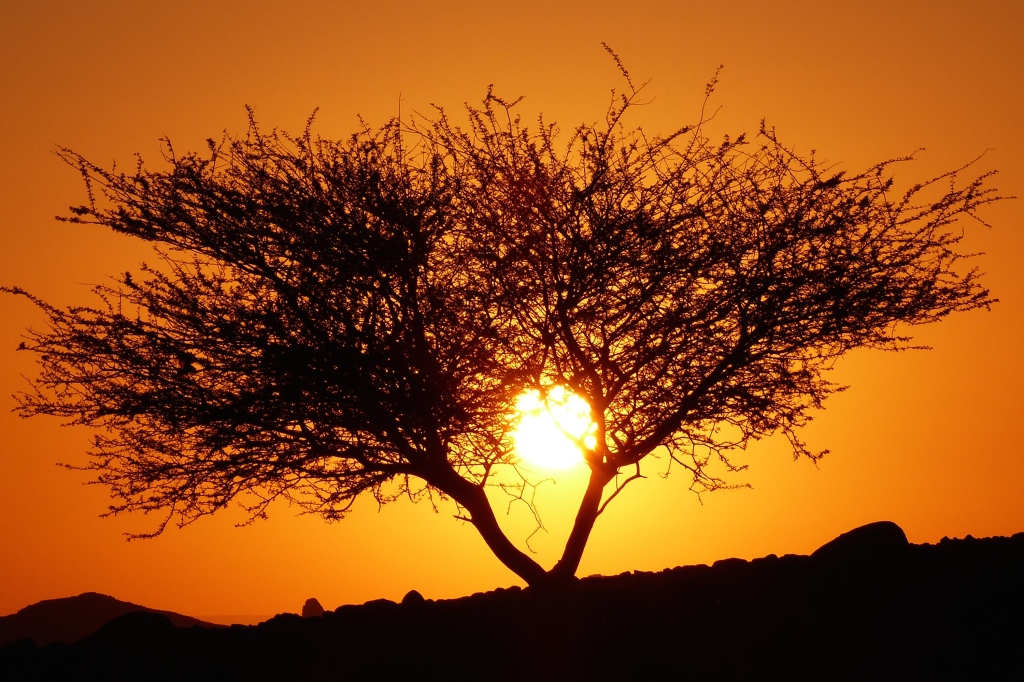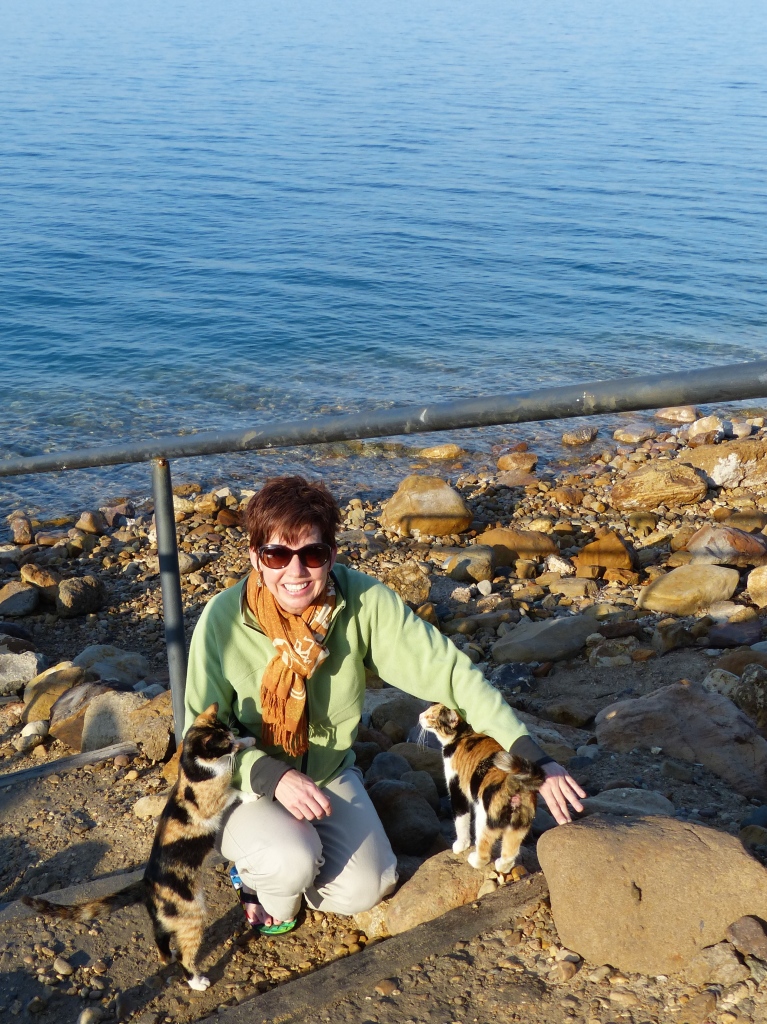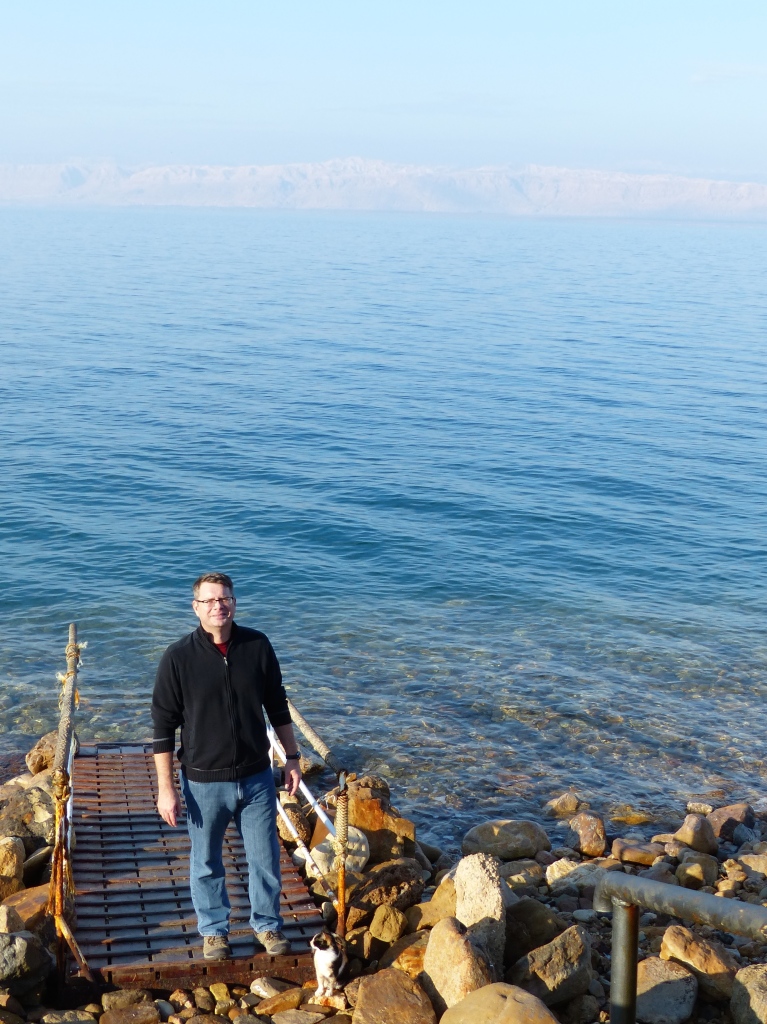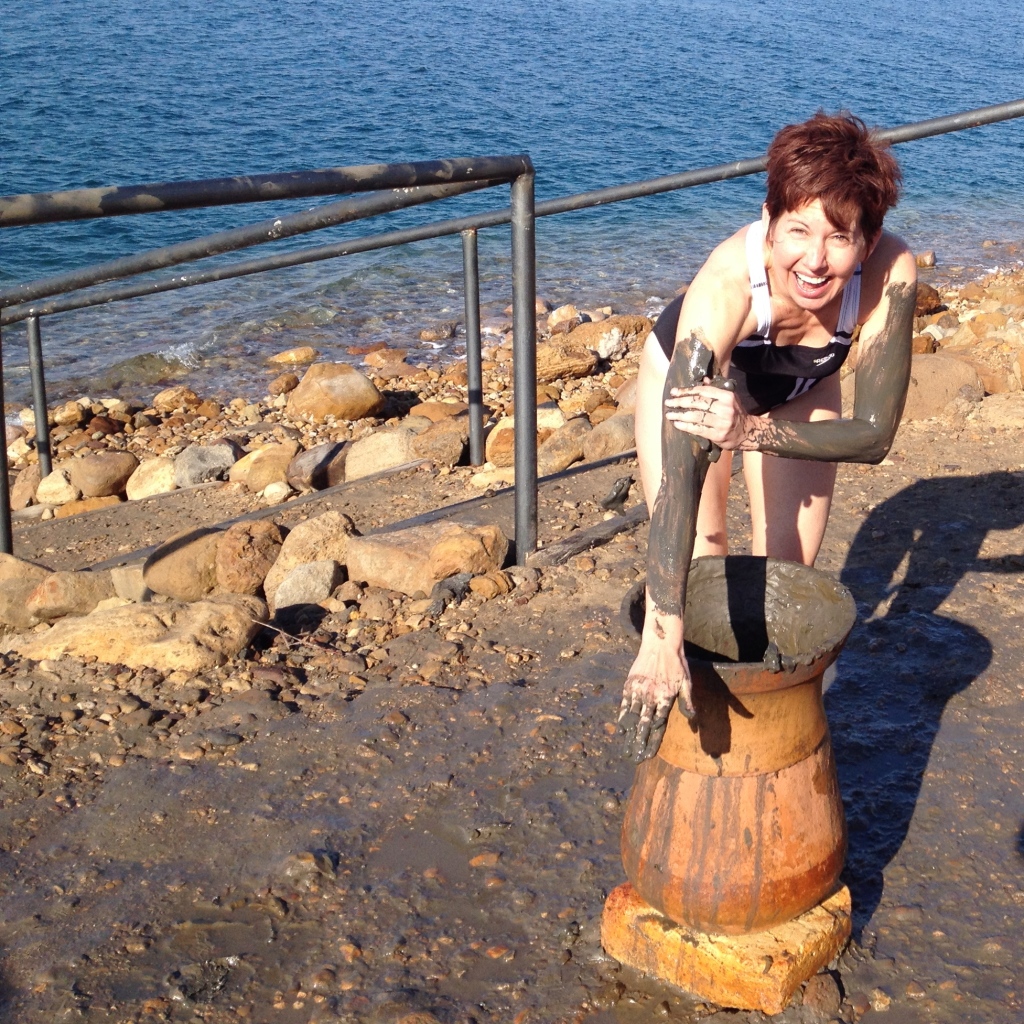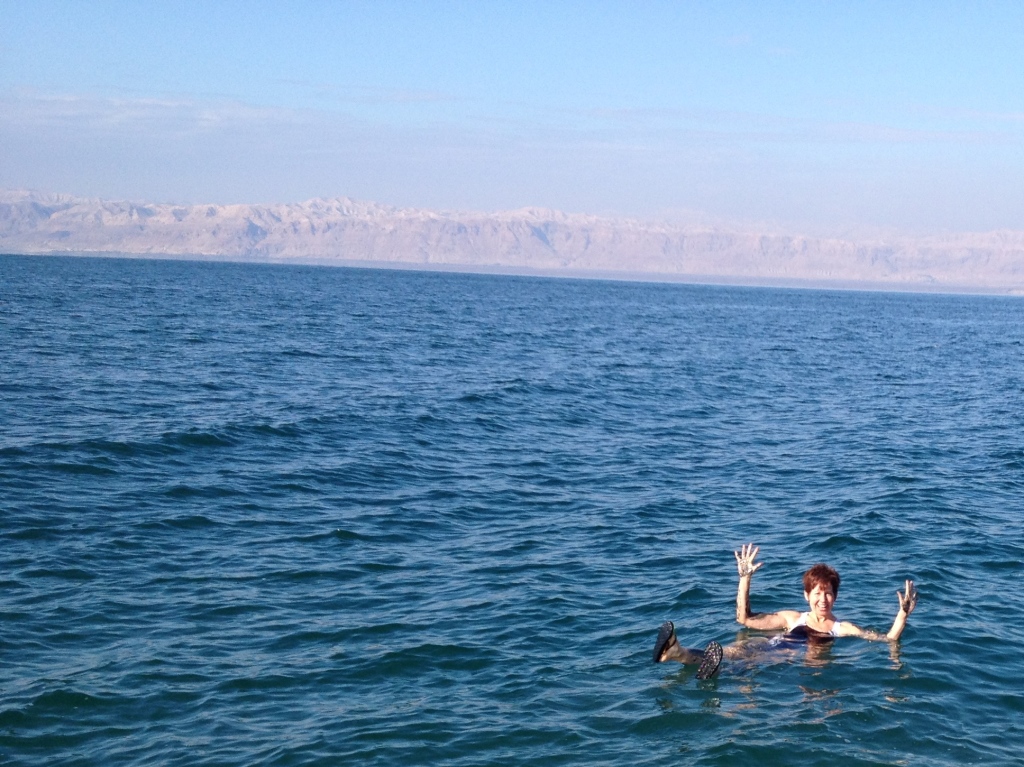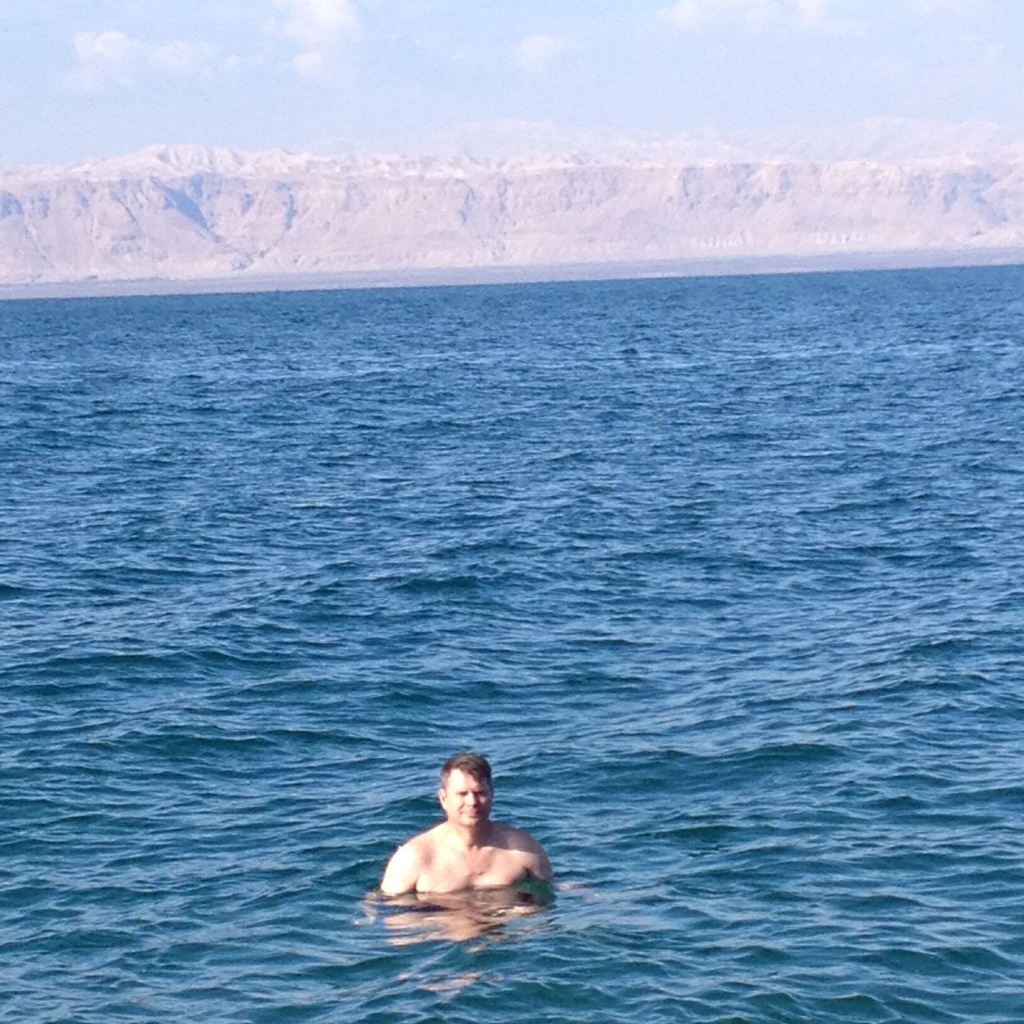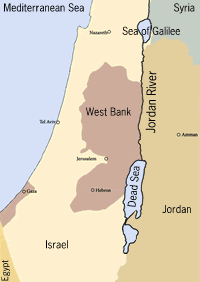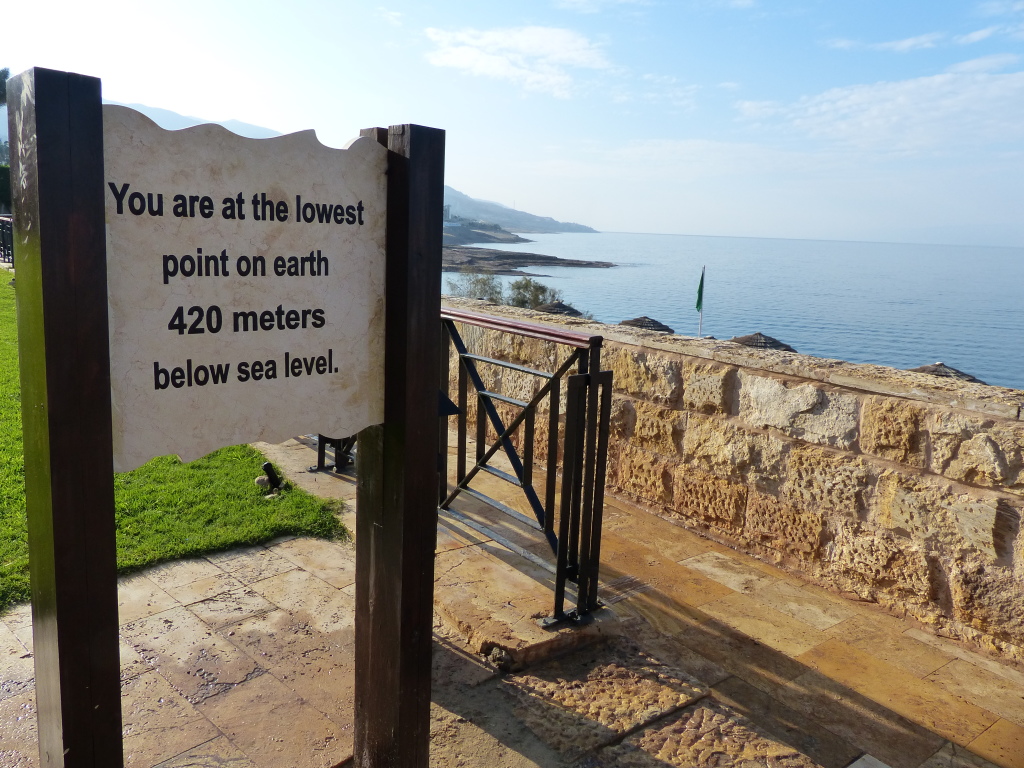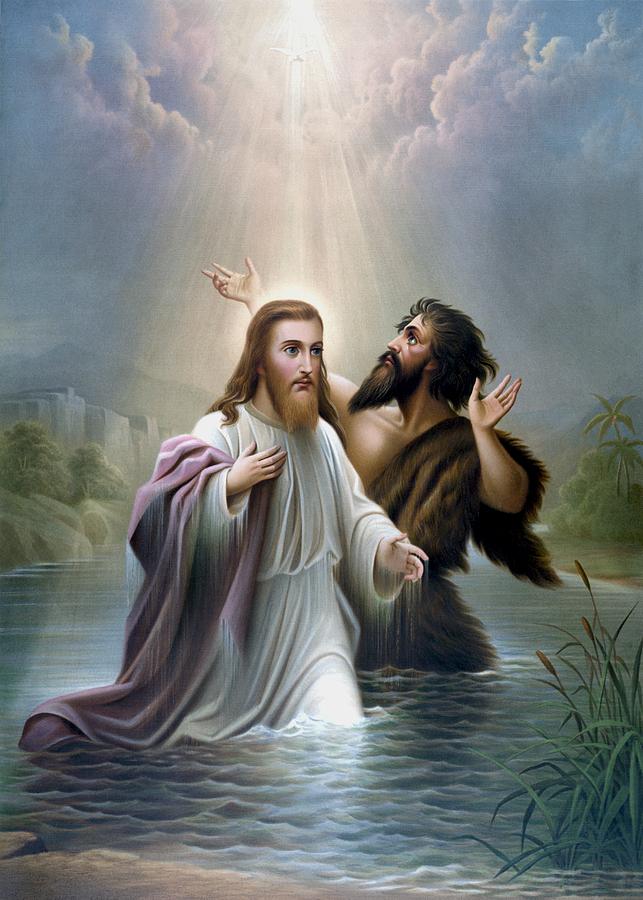The Dead Sea region features prominently in the Bible, and today our driver, George, took us to three sites of Christian significance: Mount Nebo, where Moses saw the Promised Land before he died; Madaba, where an ancient mosaic map of the Holy Land has helped historians pinpoint biblical locations; and Bethany Beyond the Jordan, the site where Jesus was baptized in the River Jordan.
On the way to Mount Nebo, we stopped at La Storia Tourism Complex, a “museum” and factory shop. George was very enthusiastic about the museum and said he’d brought his family here a couple times. It started with strange life-sized dioramas of Bible scenes (including haggard taxidermied animals boarding Noah’s ark that looked like they may have been the original animals). After awhile, the theme morphed into traditional clothing from Jordan and surrounding countries, the three most sacred mosques in the world, Jordanian military uniforms and insignia, and a Bedouin tent depicting typical daily life. Very stream of consciousness … The rest of it was also weird but in a more meaningful way. We strolled through a re-created Jordanian village with all the traditional craftsmen, shops, service people and families doing what families do. The mannequins needed some upkeep, but still, it was enlightening. We exited the museum and stepped into the factory store, where a few sullen ladies pieced together small mosaics. The shop featured all kinds of local souvenirs, but we dashed through pretty quickly. We skipped the opportunity to contribute to the world’s largest mosaic, which I kind of regret now.
Mount Nebo
Then Moses climbed Mount Nebo from the plains of Moab to the top of Pisgah, across from Jericho. There the Lord showed him the whole land. … Then the Lord said to him, “This is the land I promised on oath to Abraham, Isaac and Jacob when I said, ‘I will give it to your descendants.’ I have let you see it with your eyes, but you will not cross over into it.” And Moses the servant of the Lord died there in Moab, as the Lord had said. He buried him in Moab, in the valley opposite Beth Peor, but to this day no one knows where his grave is. (Deuteronomy 34:1-6)
The main attraction at Mount Nebo was the view from Mount Nebo. There really wasn’t much to see other than a couple markers, a small museum and the exterior of a church that has been under renovation for more than four years. The church was built over the foundation of a Byzantine basilica, which was discovered by archaeologists in the 1930s.
The museum displayed artifacts from the original church. According to the website Sacred Destinations:
The baptistery and the mosaic can be precisely dated to August 531 thanks to a Greek inscription, which also names the three workers who created it and the bishop at the time (Elias). The Old Baptistery mosaic is in remarkably pristine condition because another one was laid over it just a few decades later in 597. The underlying mosaic remained hidden for nearly 1,400 years until it was discovered in 1976 when the one on top was removed for restoration (it now hangs on a wall).
From the top of the 820-meter-high mountain, Tony and I looked out at the valley and beyond to Israel and realized it may have been the very spot from which Moses saw the Promised Land.
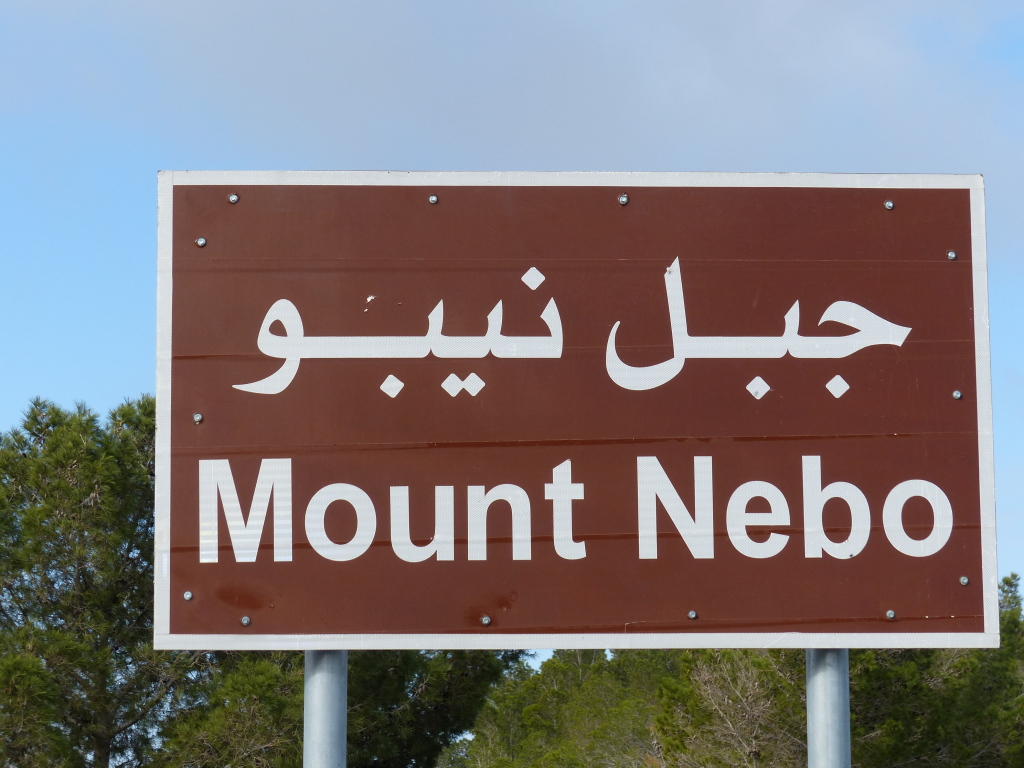
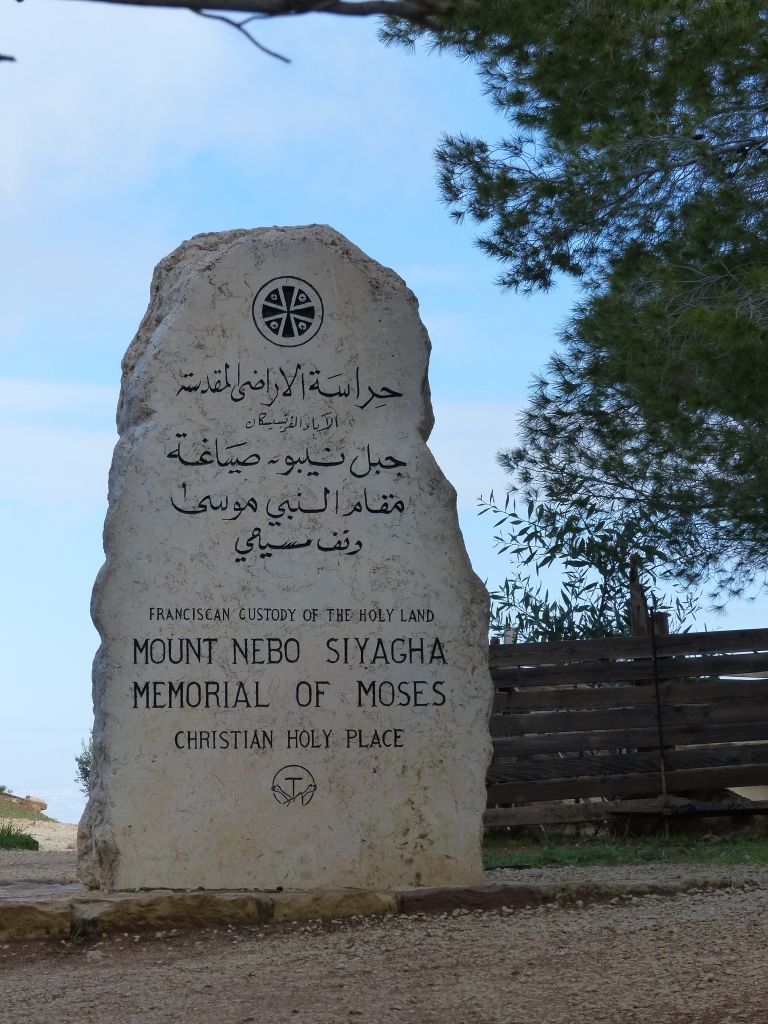
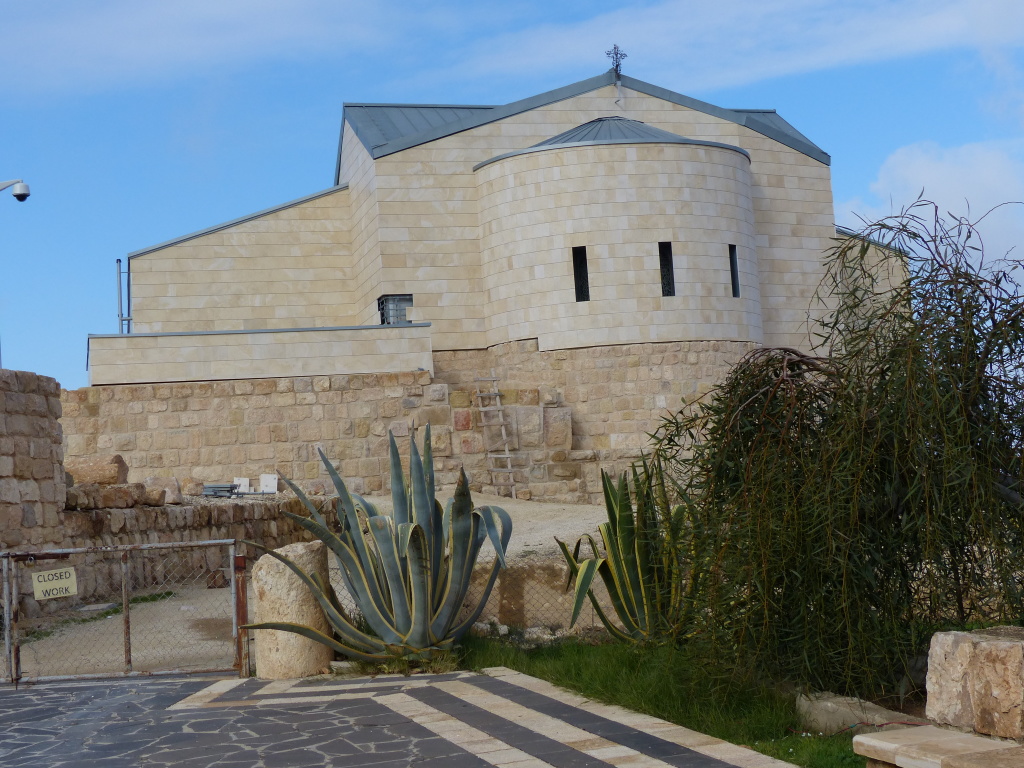
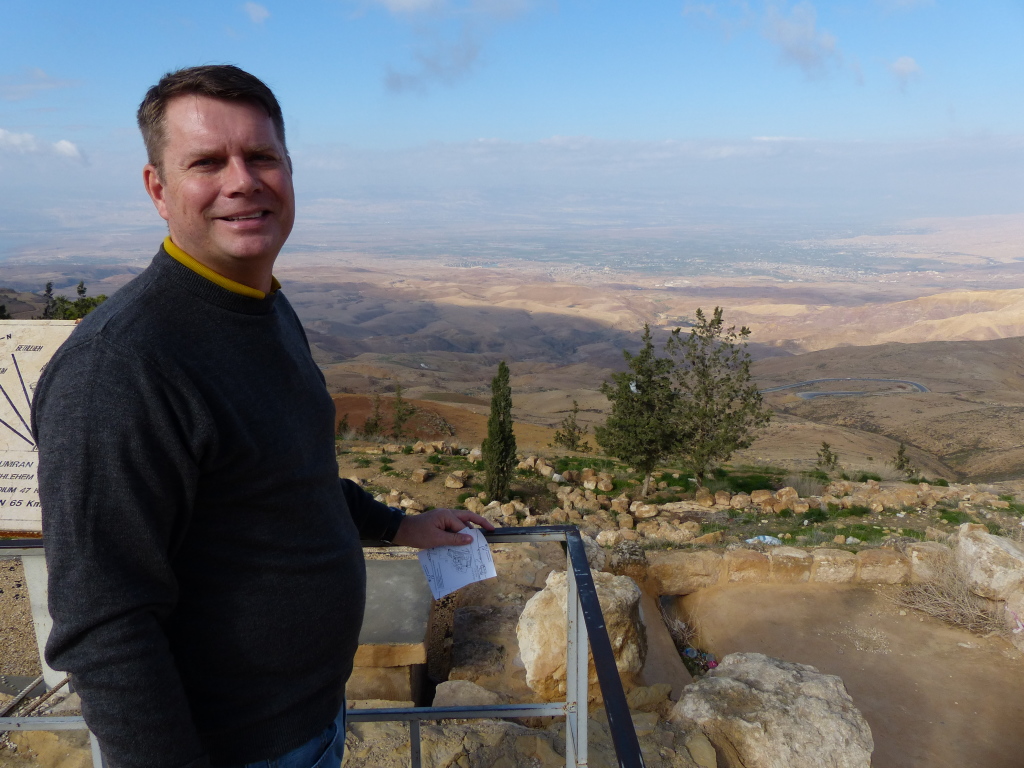
I spaced off taking pictures of the actual mosaics. Geez. But this poster shows the most famous one.
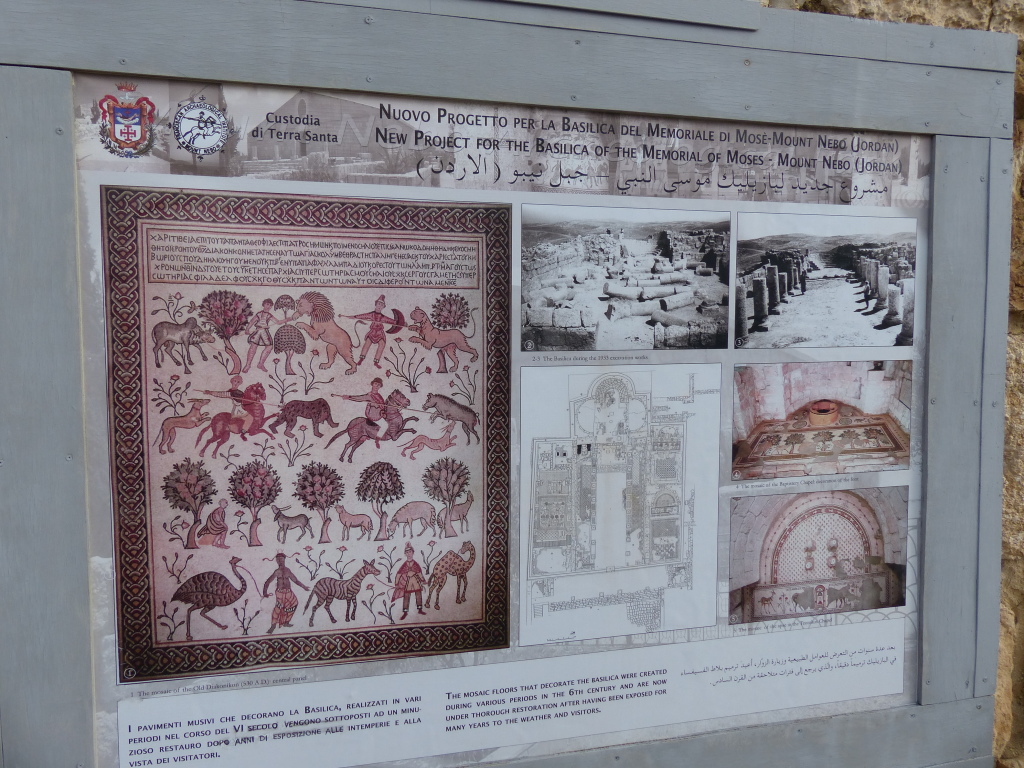
Madaba
George dropped us off and we wandered through the streets of souvenir shops to reach the Church of St. George, home of the oldest known geographic floor mosaic. Based on buildings pictured and those missing in the map, historians date it to between 542 and 570 AD. An earthquake in 746 destroyed the town, and the mosaic was forgotten until its rediscovery in 1896 during construction of a new church.
According to wikipedia:
The mosaic map depicts an area from Lebanon in the north to the Nile Delta in the south, and from the Mediterranean Sea in the west to the Eastern Desert. Among other features, it depicts the Dead Sea with two fishing boats, a variety of bridges linking the banks of the Jordan, fish swimming in the river and receding from the Dead Sea; a lion (rendered nearly unrecognisable by the insertion of random tesserae during a period of iconoclasm) hunting a gazelle in the Moab desert, palm-ringed Jericho, Bethlehem and other biblical-Christian sites. The map may partially have served to facilitate pilgrims’ orientation in the Holy Land. All landscape units are labelled with explanations in Greek. A combination of folding perspective and aerial view depicts about 150 towns and villages, all of them labelled.
The largest and most detailed element of the topographic depiction is Jerusalem, at the centre of the map. The mosaic clearly shows a number of significant structures in the Old City of Jerusalem: the Damascus Gate, the Lions’ Gate, the Golden Gate, the Zion Gate, the Church of the Holy Sepulchre, the New Church of the Theotokos, the Tower of David and the Cardo Maximus. The recognisable depiction of the urban topography makes the mosaic a key source on Byzantine Jerusalem. Also unique are the detailed depictions of cities such as Neapolis, Askalon, Gaza, Pelusium and Charachmoba, all of them nearly detailed enough to be described as street maps.
For an exhaustive look at each part of the map, check out the website The Madaba Map.
Aside from its historical and scientific importance, it’s simply mesmerizing.
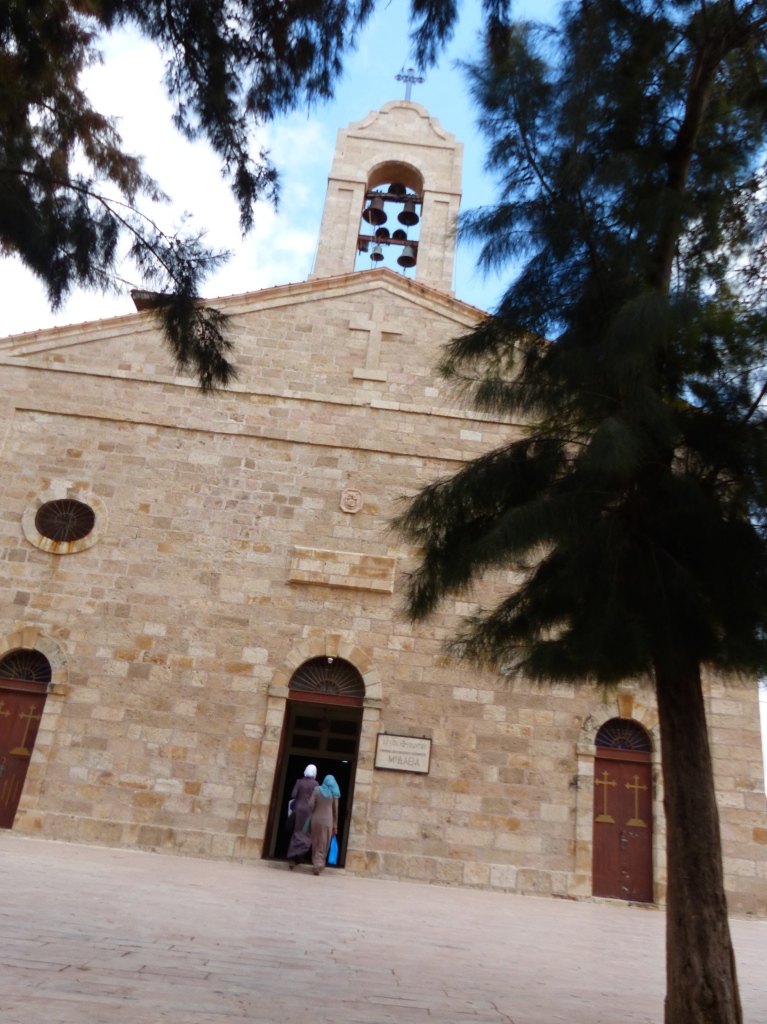
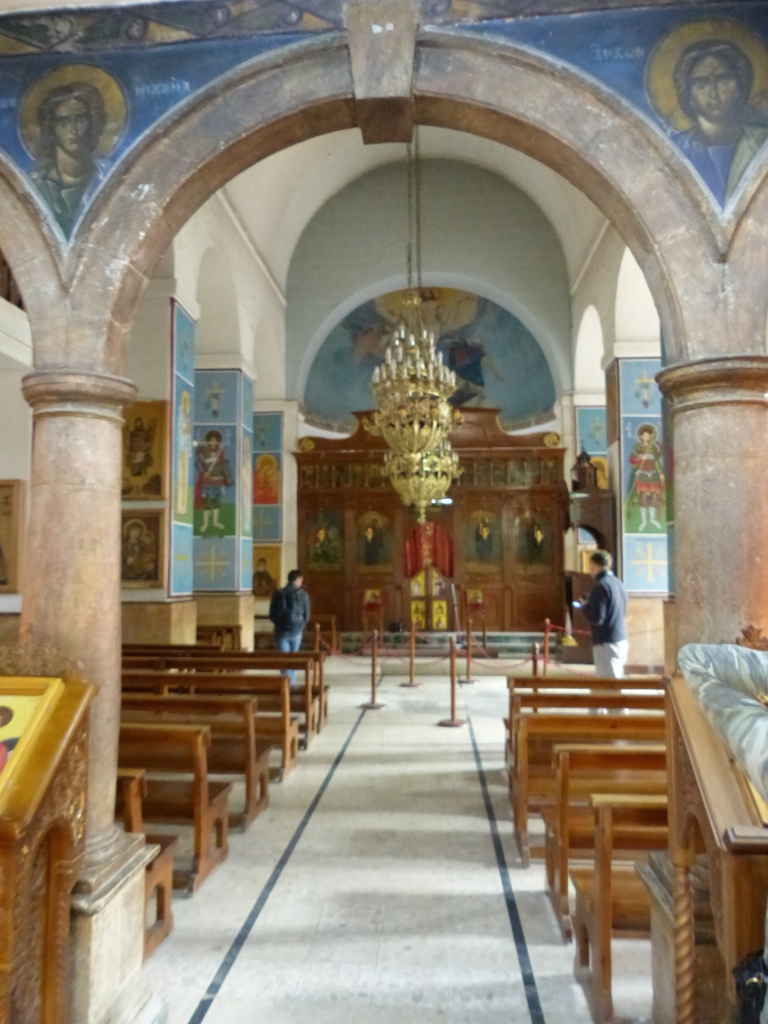
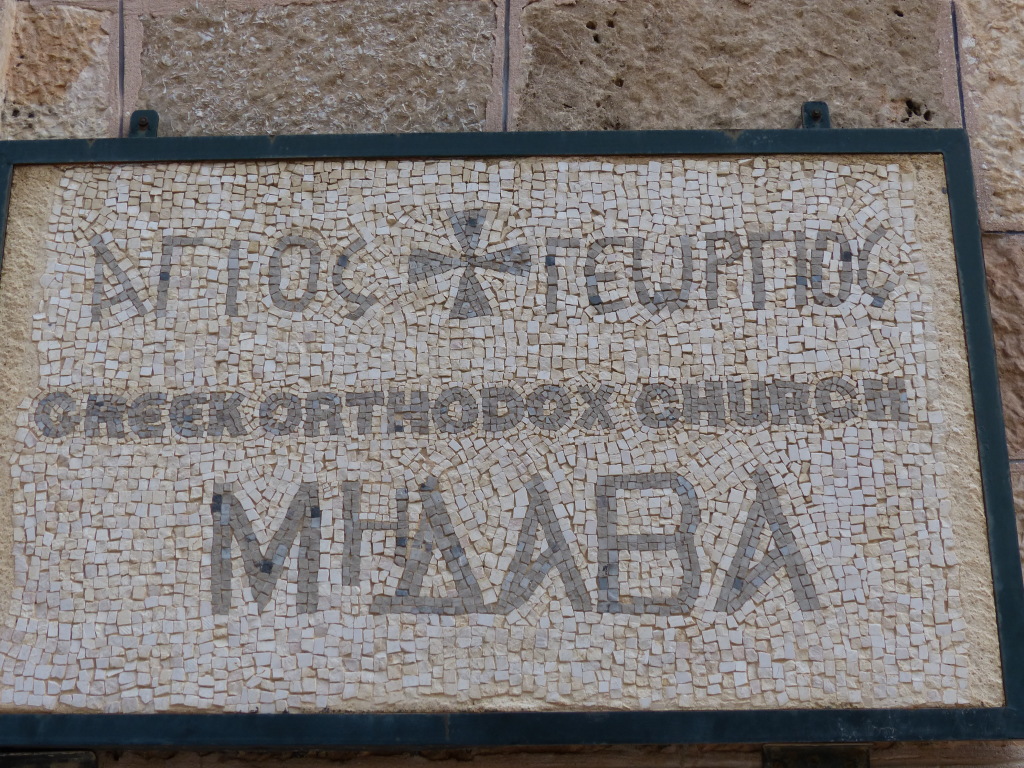
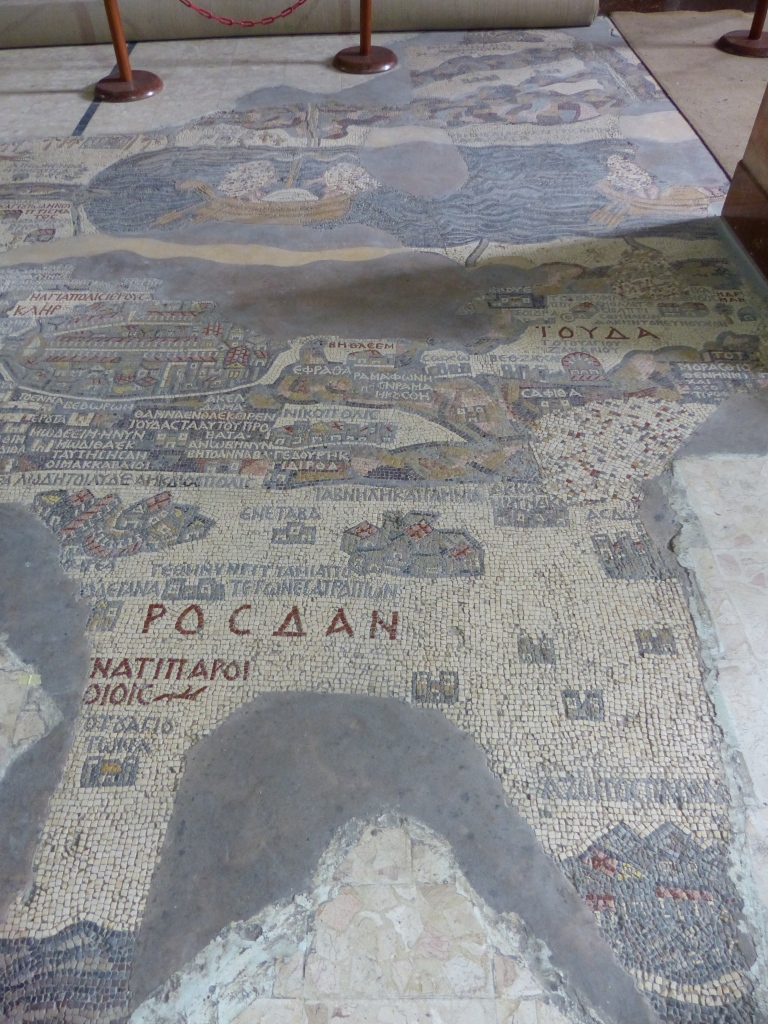
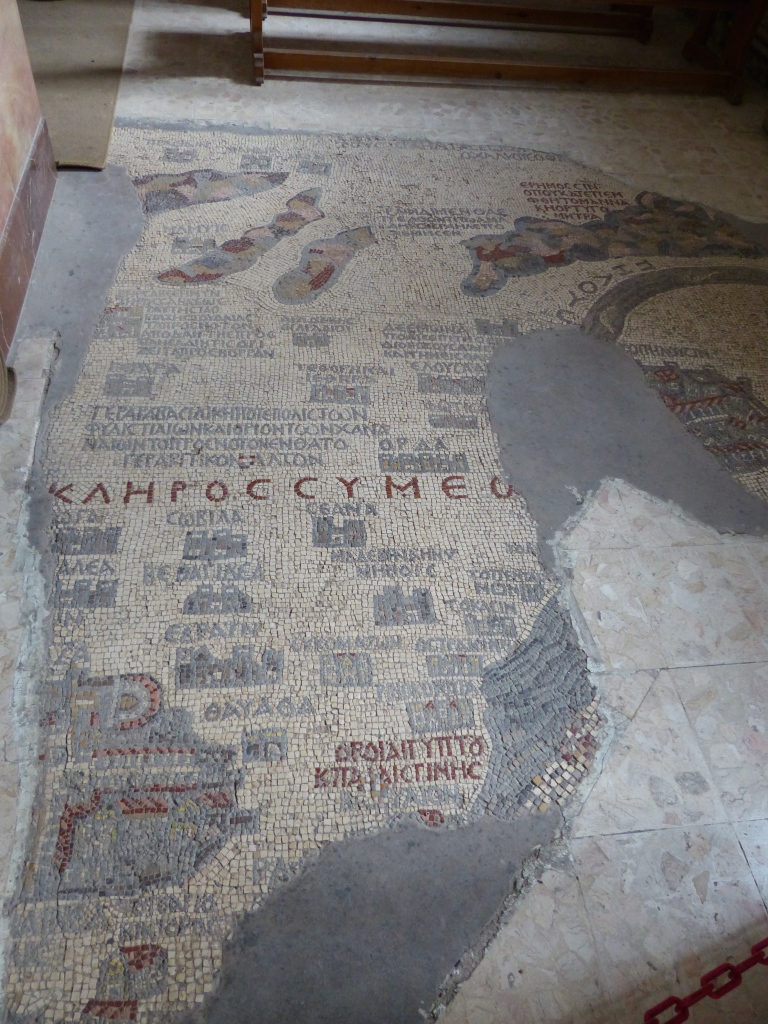
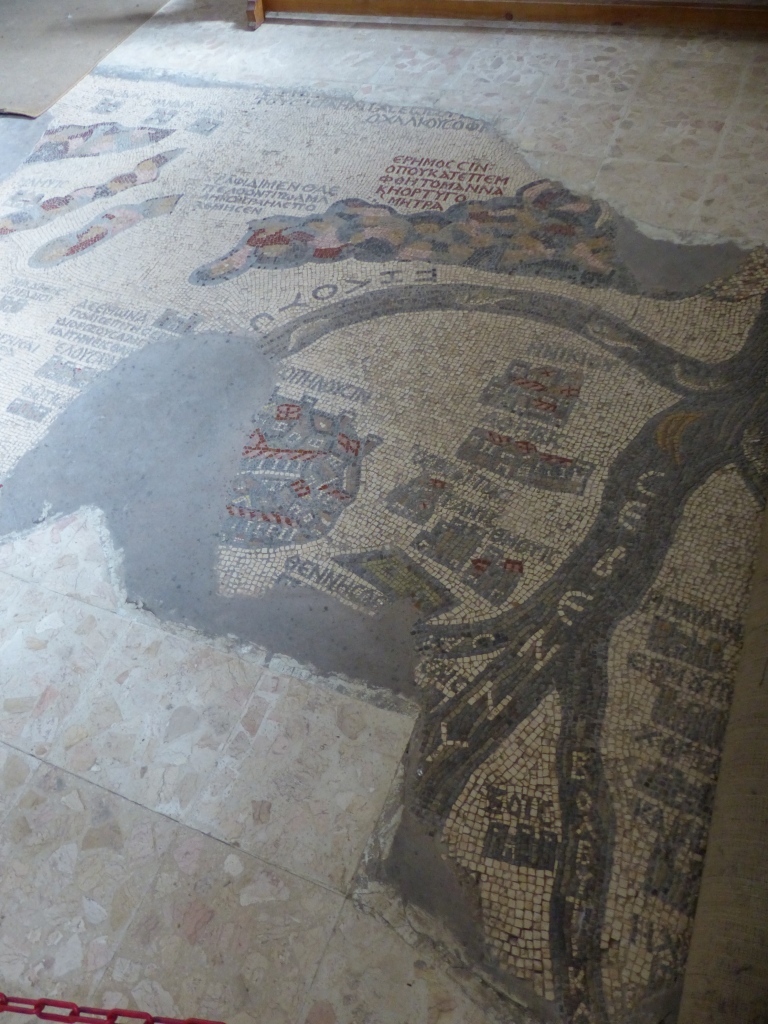
This display showed the whole map with an index, and the visitor center also had many excellent interpretive displays.
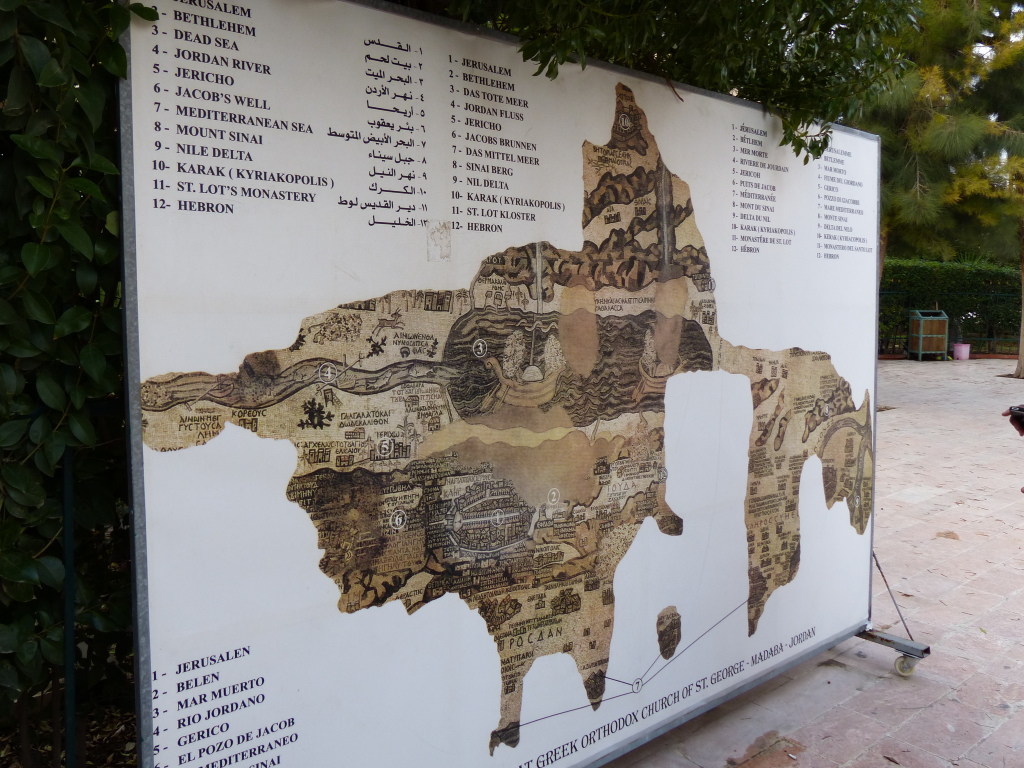
George recommended Haret Jdoudna, a local restaurant, for lunch. The food was delicious, and we enjoyed chatting with George about his family and Jordan.
Bethany Beyond the Jordan
Then Jesus came from Galilee to the Jordan to be baptized by John. But John tried to deter him, saying, “I need to be baptized by you, and do you come to me?” Jesus replied, “Let it be so now; it is proper for us to do this to fulfill all righteousness.” Then John consented. As soon as Jesus was baptized, he went up out of the water. At that moment heaven was opened, and he saw the Spirit of God descending like a dove and lighting on him. And a voice from heaven said, “This is my Son, whom I love; with him I am well pleased.” (Matthew 3:13-17)
Our last stop of the day was the site where religious scholars believe John the Baptist baptized Jesus in the River Jordan. At the visitors center, we joined a small group and a guide for the short drive to a drop-off point. From there, we walked along a covered path to see several attractions.
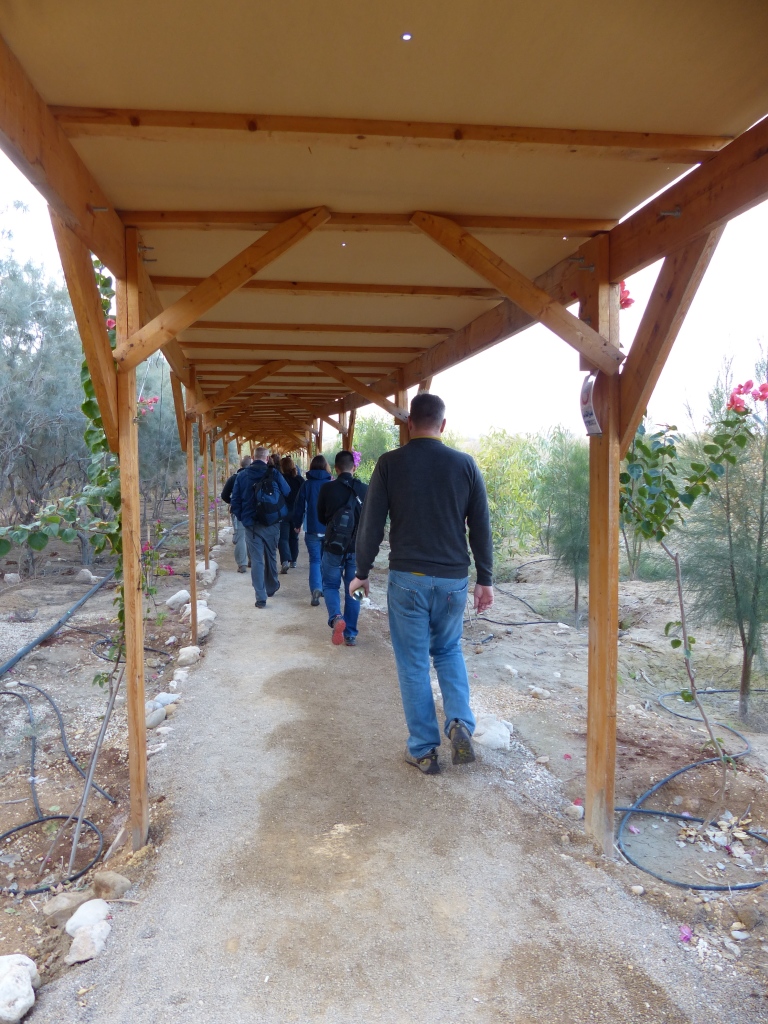
Of the most interest to us was, of course, the site of Jesus’s baptism. It actually didn’t contain any water, as the River Jordan is not much more than a muddy creek these days, and its tributary into this small area was dried up. However, we could see the marble steps leading down into the baptismal pool, the mosaic floor of the 7th-century Church of John the Baptist, and the ruins of two other churches.
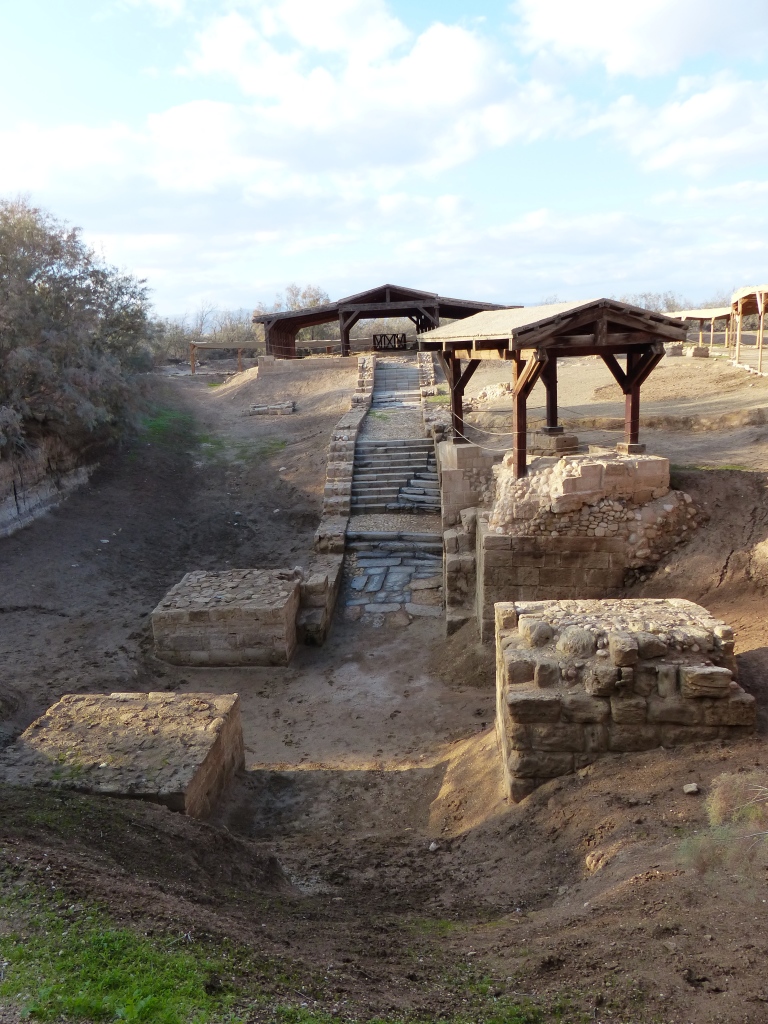
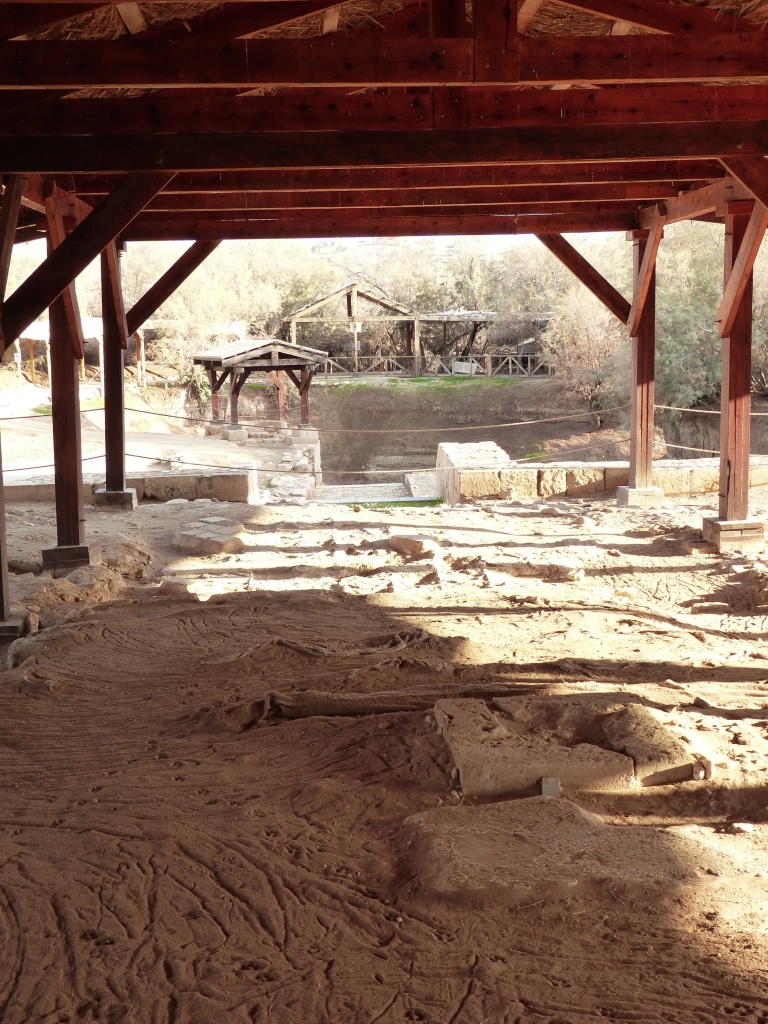
Another short walk brought us to the river itself.
Tony and I both touched the water and then sat quietly to watch the emotional responses of other visitors. Several people stepped into the shallow river, splashed water onto their heads or filled bottles to take home. One Italian lady actually said, “Mama Mia!” and then wept as she stood in the shin-deep water.
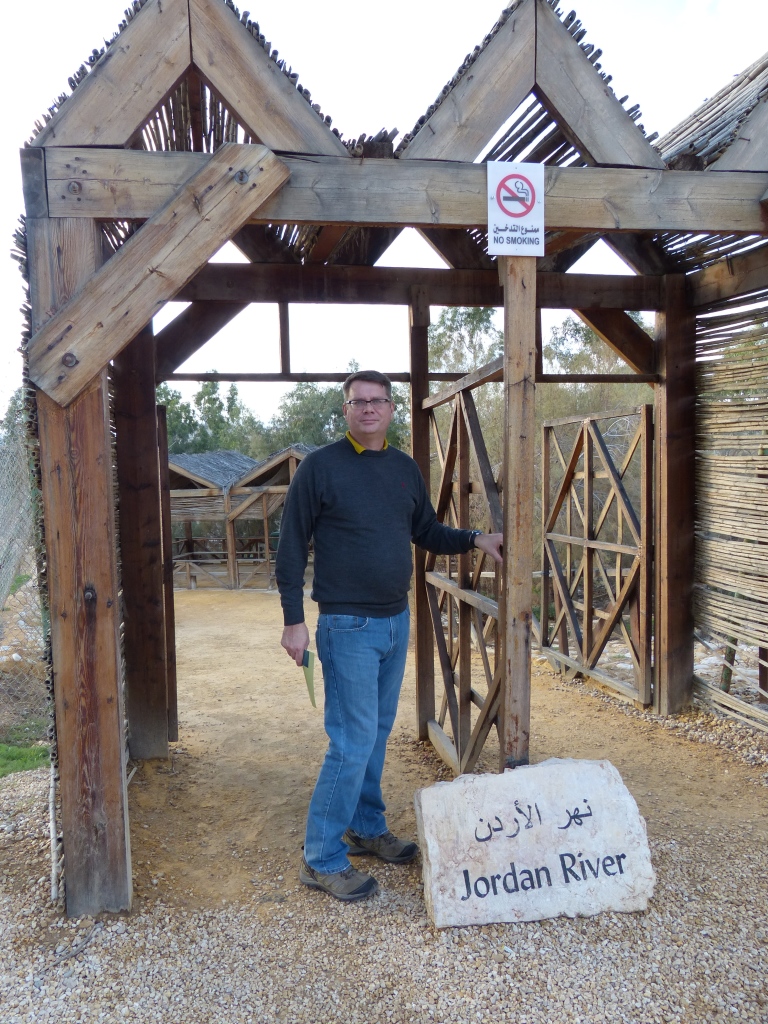
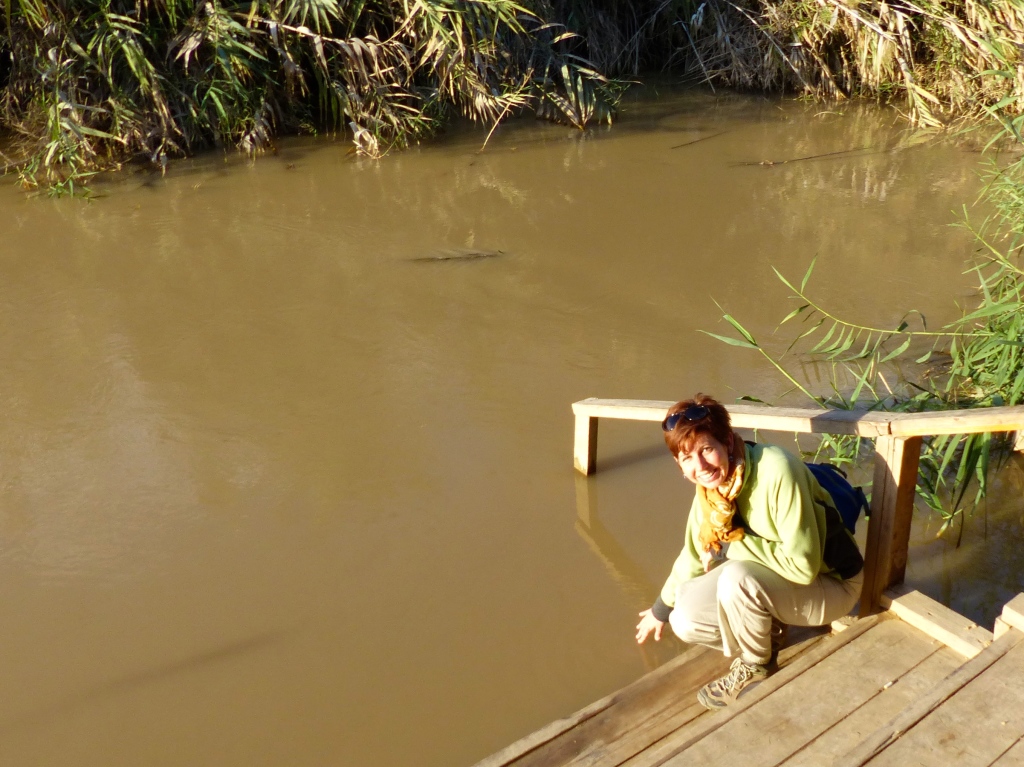
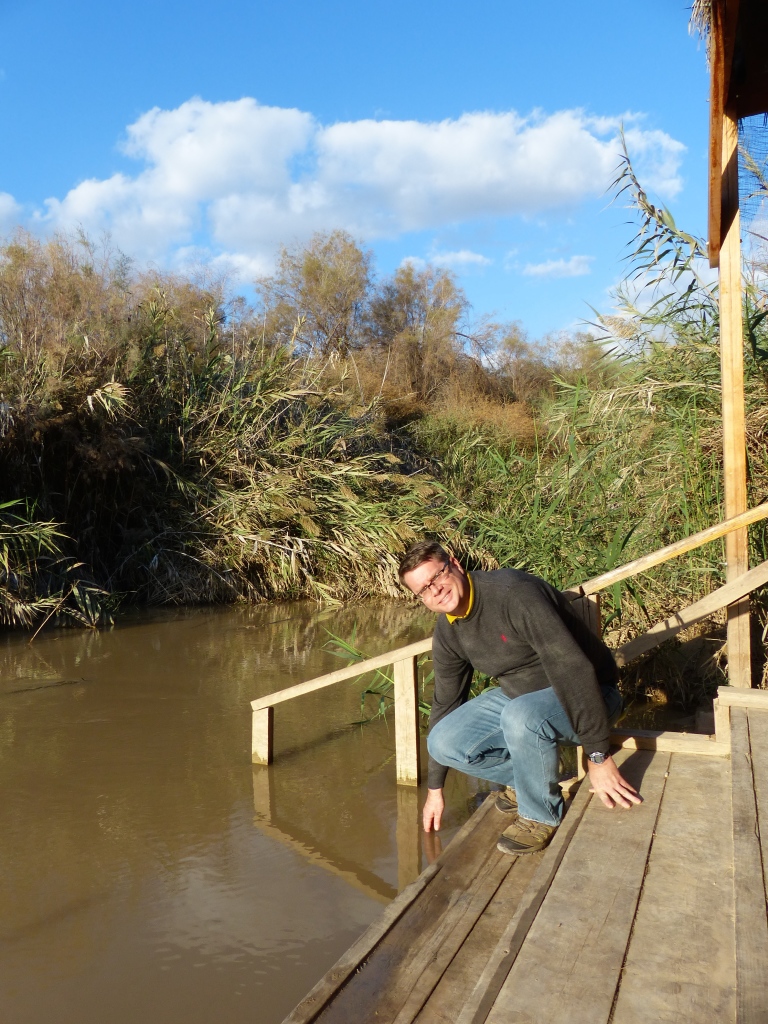
The opposite bank – just 15 feet or so away – was Jericho, and Israeli visitors were equally emotional. “What keeps us from wading across to Israel?” I asked Tony. He gestured to a shady spot, where a Jordanian soldier sat hunched and looking bored. I wandered over and tried to engage the soldier in conversation, but his English was limited. “Does anyone ever try to walk or swim to the other side?” I asked with lots of ridiculous miming. He wagged his finger at me and said, “No.” Maybe he thought I was asking permission to do so. Then I asked if I could take his photo, and I got the same reply.
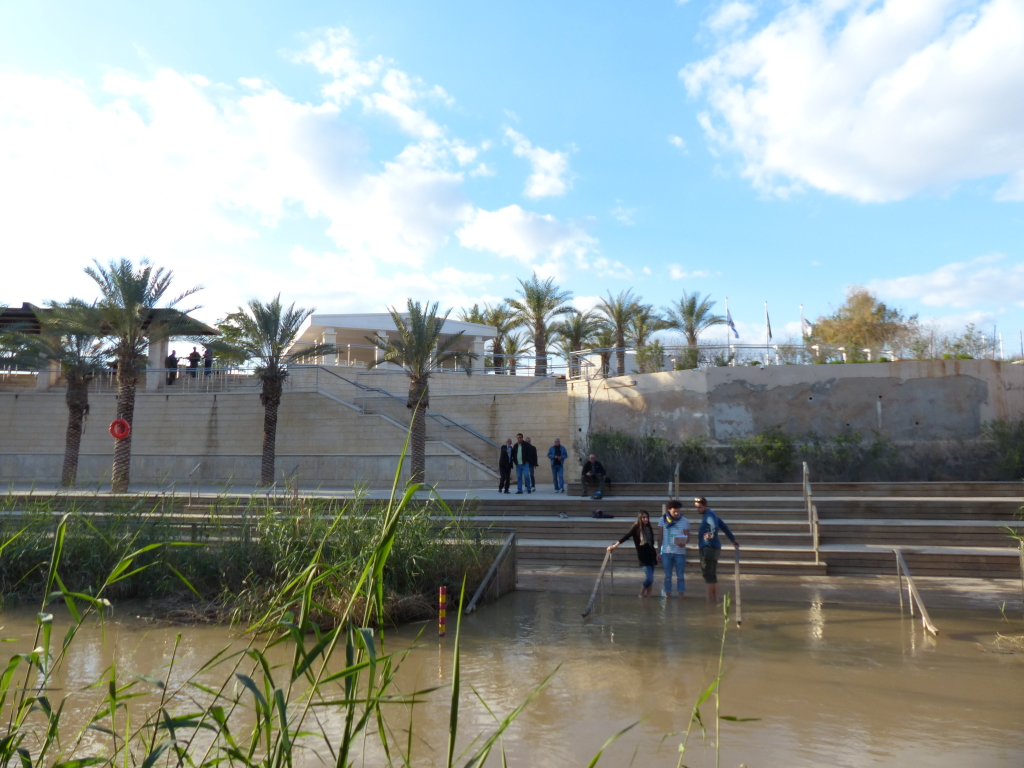
Our tour ended at a gift shop, of course. This one was aptly named after the area’s most famous resident. Holy water, rosaries, icons, and a whole plethora of other Christian paraphernalia filled the shelves.
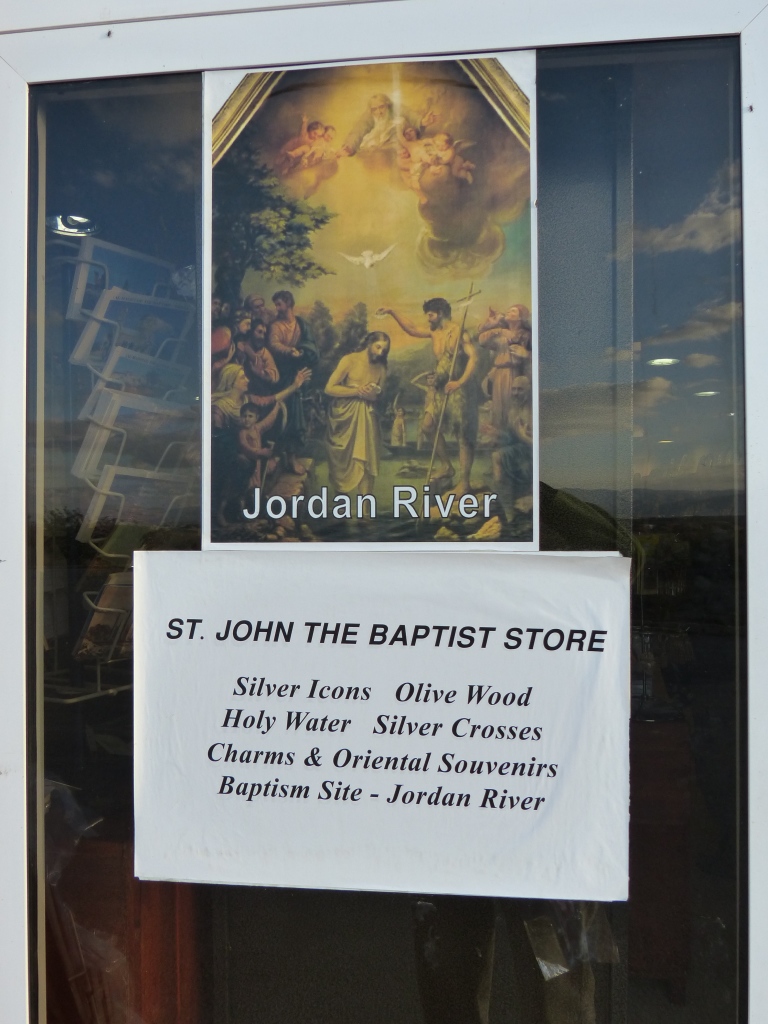
Our guide, a young archaeology student, was friendly and kind, but his English was difficult to understand, so I had to dig around online to understand what we saw.
Why do archaeologists believe this is the site of Jesus’s baptism? The website Sacred Destinations does a nice job summarizing the evidence.
The first historical mention of this site is in the writings of the anonymous Pilgrim of Bordeaux in 333 AD, which say Jesus was baptized five Roman miles (7400m) north of the Dead Sea, which is where Wadi Kharrar enters the Jordan River.
The pilgrim Theodosius was the first to mention a church at the Jordan River, which was built at the end of the 5th century by the Emperor Anastasius (491-518) to commemorate St John the Baptist. Built on arcades and square in shape, the church had a marble column with an iron cross marking the spot where the people then thought that Jesus had been baptized.
Various other church writers and pilgrims in the 5th through 7th centuries mentioned churches in the lower Jordan River-Bethany region commemorating the baptism of Christ.
The 7th-century pilgrim Arculf mentioned seeing the ruins of the church at this spot on the east bank, a wooden cross in the river, and steps leading into the water from the west bank. Another nearby chapel was said to have marked the spot where Jesus’ clothes were kept while he was being baptized.
In more recent times, the site was long off limits due to its position along a disputed border that was dotted with thousands of land mines. It was only in 1996, following the peace treaty of 1994 and two years of clearing the mines, that archaeologists were able to excavate Wadi Kharrar.
Using some pre-1948 studies and the early pilgrim accounts as their guide, archaeologists quickly uncovered an astonishing 21 ancient sites. These include five baptismal pools (shallow pools lined with plaster) from the Roman and Byzantine periods; a Byzantine monastery; 11 Byzantine churches (many with mosaics and Greek inscriptions); caves of monks and hermits; and lodgings for pilgrims.
These findings have led most scholars to conclude that this is the biblical Bethany-beyond-the-Jordan, where John baptized Jesus Christ. This is not certain, however, as the ruins do not date to the time of Christ and there are some early sites across the river as well. Some still believe Jesus was baptized on the west bank in Israel, but the majority opinion firmly rests with this site in Jordan.
In January 2000, on Epiphany, more than 40,000 people gathered at the Baptism Site along with church leaders from 15 world churches in a massive pilgrimage. Shortly after, the Armenian Church officially declared the site to be the location of the baptism fo Christ. And on March 20, Pope John Paul II held an outdoor Mass at the site with 25,000 worshippers in attendance.
The Baptism Site Commission website is a goldmine of information about the River Jordan and its significance in Christian history. You can watch a full documentary or a series of short videos, read heaps of testimonials, peruse maps and other original documents, and more – all in beautifully fluent English. Very impressive!
According to the website, the site was a major pilgrimage destination until around the 14th century, when power fell to the local tribes and the area was considered unsafe. The Madaba map’s discovery in 1897 renewed interest in pinpointing the location of Jesus’s baptism, but it wasn’t until Jordan and Israel signed their peace treaty in 1994 that the area was de-mined and prepared for excavation.
